Please note, before we begin, that when I say “Creationist” I’m not referring to those theists who accept the reality of evolution, but regard evolution as part of God’s Plan in a created universe which was at least partly pre-planned, and might have been given the occasional divine nudge: this is a perfectly respectable idea, although currently untestable. Creationists, self-identified as such, are those who believe that the Creation stories in Genesis are literal descriptions of the dawn of life, not just a fancy metaphor for it, and that complex life-forms were poofed into being ready-made by God. They somehow manage to insist that Genesis is literally correct in every line, even though it contains two slightly different and not entirely compatible versions of creation.
The most obsessive kind, called Young Earth Creationists, also believe Bishop Ussher’s 17thC calculations of the minimum elapsed time since the Biblical creation of Adam and Eve, and that the world is only about six thousand years old. Some do accept that organisms evolve in relatively small ways which they call “microevolution”, but deny the possibility that many microevolutions eventually stack into a macroevolution, a major change of form: although they can never provide any reason why this should be so.
Creationists are almost by definition fundamentalists, so they are deeply indoctrinated with the idea that knowledge is something which is handed down to you by Authority. Many of them not only don’t understand the evidence for evolution, but in a very real sense, they don’t understand what “evidence” means. To them, it means what an Authority figure told you, not something gained by studying external reality and analysing what it does. An Authority figure, either their parents or their pastor, told them the Bible was the inerrant word of God, so then the Bible is seen as itself coming from Authority – an Authority which they have been told by Authority never used metaphor or simile or fictional parables (they know that Jesus used parables and metaphors, and they believe that Jesus was an aspect of God the Father, but are absolutely certain that God the Father never used parables or metaphors – except when it comes to the Song of Solomon, which they believe isn’t really about sex).
For this reason, many, perhaps most of them have no understanding of what science is or what a scientist does, and are convinced that so-called “evolutionists” regard Charles Darwin as an Authority. They imagine that if they could discredit Darwin personally then people will stop believing in his ideas, which will have been shown to be untrue because they came from a flawed source – in the same way that Scientology is cast into doubt by the fact that L. Ron Hubbard was a massive charlatan who made shit up. This is why they habitually refer to the acceptance of the science of evolution as “Darwinism” – when they aren’t calling it “evolutionism”. In both cases, the aim is to make it sound like a Cult of Personality rather than a body of objective observation of the world.

Of course, The fact that Isaac Newton was a deeply horrible person with some deeply weird ideas never stopped anyone from believing in gravity, or caused anybody to float into the sky. Some Creationists then take that as proof that Newton was an Authority, and therefore that the fact that Newton believed in a literal interpretation of Genesis gives added authority to Creationism, even though Newton was not a biologist and never studied the alternatives. To them, what Authority says must be true and they don’t get the idea that academic authorities are only authorities on subjects on which they are expert, and that the opinion of a top-level physicist on evolution is only marginally more significant than the opinion of a random burger-flipper.
They also don’t get that scientists study objective truth (or at least try to), and if one person doesn’t make a given discovery, sooner or later someone else will: nor that science by its very nature moves on, adjusts its course in the light of new evidence, and leaves its earlier heroes behind. Scientists are not gurus, discovering some revelation which is specific to them, and which stands and falls by their word, like religious revelations. Scientists are just people who observe the world, describe it, and have ideas about how the world works which they then test. If their ideas pass those tests, other scientists pick up the ideas and do further work on them. Each individual scientist is just a replaceable cog in a big machine of advancing human knowledge, and their personalities are irrelevant, unless those personalities include fraud or intellectual sloppiness. Even if they do, the process is self-correcting – a fraud or error will eventually be uncovered when other people try to replicate a result, and can’t
Darwin was a great researcher and science-writer, but he is no more relevant to the modern study of evolution than Galen is relevant to modern medicine. He wasn’t some kind of prophet – he was just a guy who observed the world and then wrote about it, using his necessarily imperfect Victorian knowledge, and if he hadn’t introduced the world to natural selection, someone else (probably Alfred Russel Wallace) would have done so within a few years. In fact, other people already had, although Darwin wrote the first full-length published book on the subject.
Darwin wasn’t the first person to discover evolution, or even evolution by natural selection. He wasn’t even the first 19thC British man to do so, but the second or third (more on this later). Yet, Creationists – or “Cretinists”, as I’ve taken to calling the most dishonest of them – constantly harp on what Darwin did or didn’t say, in the hope that discrediting him will discredit evolution. They claim – entirely falsely – that Darwin recanted of evolution on his death bed, as if the idea stood or fell with his opinion of it, and as if tens of thousands of later researchers hadn’t confirmed it. They also repeatedly try to make out that Darwin was a racist because his most famous work was called On the Origin of Species by Means of Natural Selection, or the Preservation of Favoured Races in the Struggle for Life.
Of course, the idea that “race” means “a group of humans with a particular skin-tone” is fairly modern and largely American. It really just means “a group with something in common, probably connected by blood”, which is why we see statements like “The Macdonalds are a proud race”. Darwin was using it to mean what we would call a family line with shared genes – mainly family lines of cabbages and fluttery little birds – but he didn’t know about genes, so his terminology was woolly. Most of the Creationists who claim he was a racist probably know they are making shit up.
Insofar as Darwin had opinions about human “races”, he was a Victorian Englishman who thought that an English education was the measure of a man, and that what he saw as primitive cultures would be overwhelmed by what was then the modern world; but he also thought that the black slaves he encountered on his travels were clearly a superior type, both physically and in character, to their Portuguese masters. But even if he had been a racist, that would make no difference to the accuracy and authority of his scientific discoveries, any more than Newton’s difficult personality invalidates gravity. Both have been validated by many hundreds of thousands of other scientists since, using instruments Darwin and Newton could only dream of.
Creationists and proponents of Intelligent Design (a.k.a. Creationism-Lite) like to harp on the idea of “irreducible complexity”: the idea that there are some organs which are so complicated and specialised that they couldn’t have evolved, because the intermediate stages of development would not have been useful and selected-for. In chapter #6 of On the Origin of Species, Darwin addressed this problem, which he termed “Organs of Extreme Perfection”. Creationists love to quote his opening line, which starts: “To suppose that the eye with all its inimitable contrivances for adjusting the focus to different distances, for admitting different amounts of light, and for the correction of spherical and chromatic aberration, could have been formed by natural selection, seems, I freely confess, absurd in the highest degree.”
Again, however, they are taking this statement completely out of context – innocently in the case of those who have never read the whole passage, and with deliberate dishonesty in the case of those who have. The full passage runs:
To suppose that the eye with all its inimitable contrivances for adjusting the focus to different distances, for admitting different amounts of light, and for the correction of spherical and chromatic aberration, could have been formed by natural selection, seems, I freely confess, absurd in the highest degree. When it was first said that the sun stood still and the world turned round, the common sense of mankind declared the doctrine false; but the old saying of Vox populi, vox Dei, as every philosopher knows, cannot be trusted in science. Reason tells me, that if numerous gradations from a simple and imperfect eye to one complex and perfect can be shown to exist, each grade being useful to its possessor, as is certainly the case; if further, the eye ever varies and the variations be inherited, as is likewise certainly the case; and if such variations should be useful to any animal under changing conditions of life, then the difficulty of believing that a perfect and complex eye could be formed by natural selection, though insuperable by our imagination, should not be considered as subversive of the theory. How a nerve comes to be sensitive to light, hardly concerns us more than how life itself originated; but I may remark that, as some of the lowest organisms, in which nerves cannot be detected, are capable of perceiving light, it does not seem impossible that certain sensitive elements in their sarcode should become aggregated and developed into nerves, endowed with this special sensibility.
Note that: “if numerous gradations from a simple and imperfect eye to one complex and perfect can be shown to exist . . . as is certainly the case“. Darwin, that expert on barnacles, corals and earthworms, knew that various types of simple-to-complex eyes can be found in extant species of invertebrates.
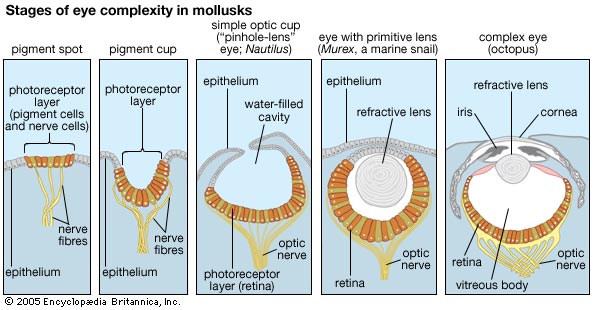
And Darwin, as I said, was not the first to discover evolution. He was just the first to pull all the different elements of it (as far as those were known in his day) together, and then write a good, clear, readable book on the subject, with detailed examples. But the basic idea of the slow transformation of species over long periods of time had been known about, in one form or another, for well over two thousand years. When I got the idea for this essay, I expected to find maybe eight or ten thinkers before Darwin who had had strong ideas about evolution: but in fact there were nearly sixty, and those are just the ones I know about.

Evolutionary thought and palaeontological knowledge before the Common Era
So far as we know, Homo sapiens has been around for 310,000 years, and Neanderthals and Denisovans went back about 430,000 years. We, their descendants, have had writing for less than 6,000 years, and initially writing would generally have been confined to an educated elite, so those early peoples didn’t have a wealth of research behind them that they could read about in books or on websites. But they had language and memory and orally-transmitted poetry and stories about what their grandmother told them, and they were no less intelligent than us. Indeed, those who lived in areas where there was enough food for a growing child, especially those who lived on the sea-shore or near a salmon-run, may actually have been more intelligent than us, due to a diet high in oily fish and low in pollutants – at least until they got sophisticated enough to use lead pipes and lead-glazed pottery.
So, sneering at the authors of the Bible stories as illiterate ignoramuses is itself ignorant. They were fully intelligent, observant people, even though they didn’t have centuries of written textbooks to fall back on, and the structure of the Genesis stories suggests that their authors had already observed that fossils came in stratified layers, that different sorts of organism were prominent in different layers, and that human remains were only found in the topmost levels. This is despite being handicapped by the fact that the Mediterranean area’s violent geological past means that most of the fossils found in the area come from the Age of Mammals, with little to see from before the start of the Miocene about 25 million years ago.
They don’t seem to have seen enough detail to know that forms slowly morph into other forms – not surprising with such a limited snapshot of the recent past to work from – and neither at first did other ancient peoples. There’s a fascinating book called The First Fossil Hunters, by Adrienne Mayor, which looks at early interest in and attitudes to fossil finds. Even in the Stone Age, interesting portable fossils were widely collected and (to judge by the distance some had travelled) traded, and used to make attractive beads for jewellery. There were even Stone Age European hunters who interacted with real live cave bears, but still made their jewellery from the fossilised teeth of their fore-bears.
The book mainly concentrates on how the Ancient Greeks, Romans and Egyptians collected, observed and interpreted fossils, although Mayor mentions in passing Hebrew folk traditions of the period, based on fossil finds. The 1stC Jewish historian Josephus spoke of legends of terrible, non-human giants wiped out by the Israelites, and Mayor states that “In the Greco-Roman mythic tradition, and in ancient Hebrew traditions as well, all species were not created in one fell swoop, and novel life-forms appeared and then disappeared over time”. This last seems to be based on some scholars’ interpretation of the Old Testament [ref: Charles DeLoach 1995, Giants: A Reference Guide from History, the Bible, and Recorded Legend, p.106-8], and raises the possibility that Creationism is very much a modern phenomenon..
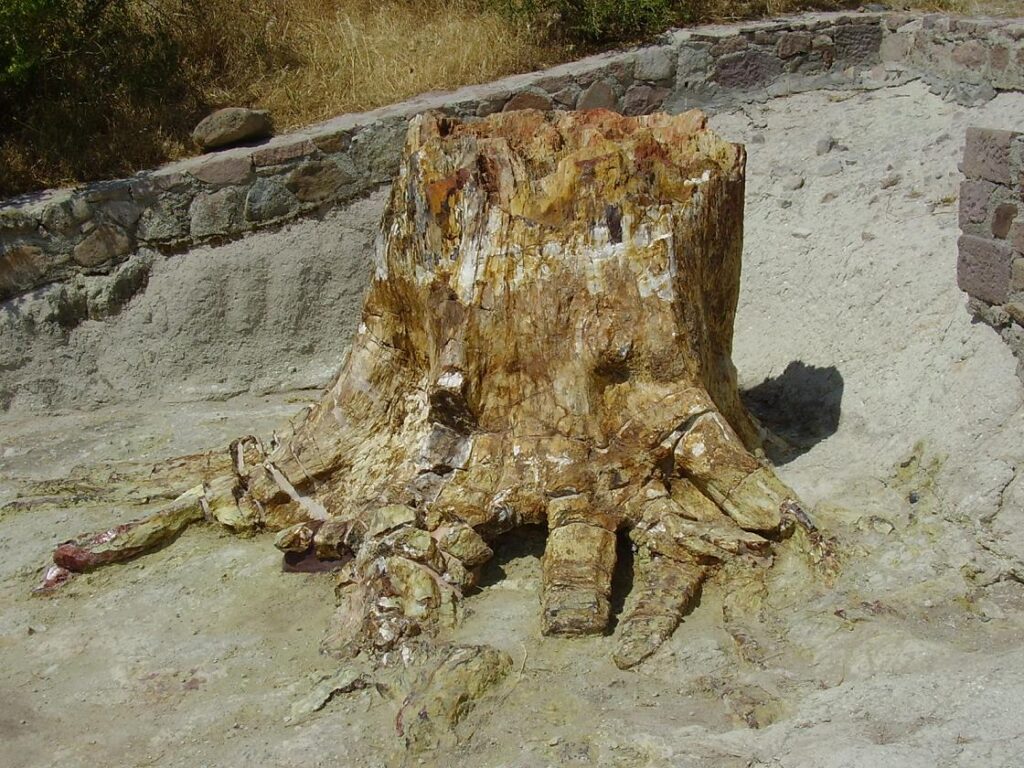
The Greeks never pretended that fossils were anything other than once-living organisms turned to stone, nor could they reasonably do so, since the island of Lesbos has an extensive fossil forest with many tree-trunks still standing and still being very obviously trees. By the 4thC BCE they had a basic understanding of the process of petrification, which can happen very rapidly at certain hot springs and other mineral-rich waters (the famous Petrifying Well near Knaresborough in England can turn small objects to stone in just a few months, and the local gifte shoppe sells little fossilised teddy bears). Theophrastus, 372—287 BCE, a pioneering geologist who was born on Lesbos in the midst of the stone forest, and later succeeded Aristotle as head of the Lyceum, wrote a treatise On Stones which discussed how certain minerals could change objects to stone. Unfortunately his two-volume work On Petrifications has been lost.
Animal fossils in the Mediterranean area come mainly from comparatively recent extinct mammals, many of them very large, but they look ancient because the turbulent geological history of the area has left these bones pockmarked and broken. On the other hand, travellers from Europe had some access to – or at least to reports of – dinosaur remains in India and Mongolia which were far more ancient, but appeared more recent due to their better state of preservation.
The Greeks, and later the Romans, made a stab at reconstructing the animals these stone bones came from. In the case of their local, damaged mammalian fossil finds they realised these were forms which were no longer around. But the bones were often disarticulated and found in jumbled groups without their skulls, and one mammal femur or scapula looks much like another, so they generally assumed they came from giant humans or cattle which were similar to smaller modern counterparts and fairly recently deceased – hundreds or at most thousands of years dead, rather than millions – although some scholars did get the idea that some of the bones predated humans arriving in the area, and came from a time they envisaged as close to the dawn of life. Actual palaeontology influenced myth to the point that they accepted that the “giants” in their mythology might be bizarre quadrupeds rather than humans, but if the arrangement of the bones wasn’t obvious they had a preference for putting them together into an approximation of humanish giants.
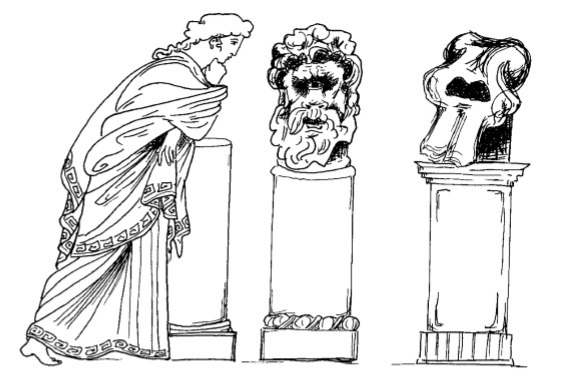
From this, we get the Cyclops, almost certainly based on the skulls of mammoths or of the Sicilian dwarf elephant, Palaeoloxodon antiquus falconeri, with the trunk’s socket reinterpreted as a central eye. Such skulls were at least sometimes correctly identified as those of elephants, probably if they were found with full-sized tusks still articulated; but then they were assumed to have been the war-elephants of ancient kings. A kind of feedback loop developed, where fossil bones were assumed to be the remains of heroes of the past, whom mythology said had been giants, so the discovery of fossils reinforced their beliefs in their mythology – but that mythology had probably been inspired by ancient fossil finds to begin with. To make things even more confused, sometimes very early Greek farmers would dig up giant fossils, assume they belonged to some great hero and rebury them with a proper coffin and/or grave goods. Centuries later, after the first find had been forgotten, new excavations would uncover the previous ceremonial reburial, and take the presence of a coffin and grave goods as proof that the bones were human, and important. Then these supposed hero’s bones would end up as sacred relics in some temple, like saints’ bones and presumed fragments of the True Cross in Catholic churches two thousand years later.
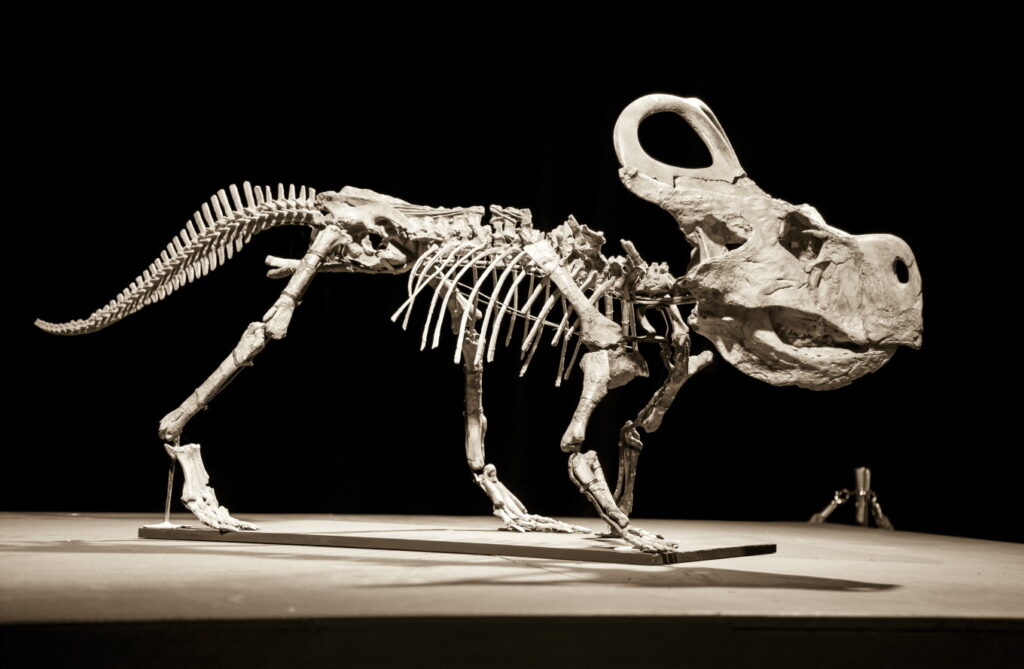
The origin of the Greek version of the griffin is slightly different. Mayor argues, convincingly, that griffins, with their eagle beaks and lion bodies and knobbly heads, were inspired by travellers’ tales of Protoceratops and Psittacosaurus skeletons, which are extremely common in the Gobi desert, and lie around looking as if the animal that owned them died about 20 years ago, instead of 70 million. They may even have found some fossils that had the imprint of feathers. In this case, because of the apparent freshness of the remains, the Scythian tribesmen who saw the skeletons firsthand assumed the species of animal that owned them was still around. The stories reached Greece as referring to a “four-legged bird” (not a bad description of a quadrupedal dinosaur) that still survived in what Terry Pratchett called “forn parts” and was a normal, mortal animal with normal animal behaviours, not some holy relic of an age of giants – even though, perversely, that was just what they were. Something similar happened with fossil-inspired rumours of dragons surviving in the mountains north of India.
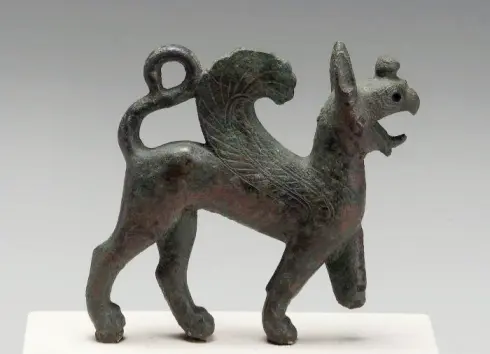
The wings which are commonly credited to griffins, at least to female ones, are harder to explain than the four-legs-and-a-beak, but may be due to garbled descriptions of the Ceratopsians’ neck frills. That would explain why many Greek and Etruscan illustrations of griffins, especially earlier ones, show the wings as stiff blades which look like decoration rather than useable limbs, with a tightly-curled top which follows the same curvature as a side-view drawing of a male Protoceratops frill. It’s easy to see that the artist may have become confused as to where exactly the animal’s neck was, especially if some of the skeletons were broken, and has attached that stiff curve to the shoulders instead of the back of the head, and interpreted the prongs which stick sideways from Protoceratops cheeks as being stiff ears.
The Regolini-Galasssi tomb, the burial site of a wealthy Etruscan family living (and dying) in Caere in Italy in around 650—500BCE, contains many griffin-based decorations. There’s a website which is dedicated to virtual reconstruction of the tomb, and which has an article Did griffins really exist? which examines the fossil origin of griffins at length.
So, interest in fossils is old and widespread. We know that prehistoric Europeans made pendants out of fossil ammonites, In Malta, as far back as the Stone Age, fossil shark teeth were used as tools to scrape distinctive patterns into pottery, while ancient elephant tusks and helical fossil snailshells were collected in the temples, along with large models of the same shells made from limestone or ceramic – although we don’t know whether these were honest sculptures or bogus our-fossil-shells-are-bigger-than-your-fossil-shells fakes. In Crete of the same period imitations of fossil shark vertebrae were shaped from gold and marble. In Egypt, as in Greece, local people collected small fossil curios to give as offerings at temples. Devotees of Set, god of darkness, collected river-polished black fossil bones, some human, some not, and piled them up at the shrines of the god, some of them wrapped in linen and ceremonially reburied, while other fossil bones were assumed to be relics of the murdered and resurrected Osiris. Pre-Colombian Native Americans also collected stones with good fossils in them, and saw large fossil skeletons as the remains of Thunderbeasts (not forgetting that “Brontosaurus” means “thunder lizard”), killed by some terrible ancient storm. Mayor has found evidence of almost industrial-scale fossil-collecting in the Classical and Ancient Egyptian world, with shiploads of fossil bones being transported, and many of the most interesting and spectacular finds ending up on display in temples, or in a wealthy man’s collection of heroic curios.
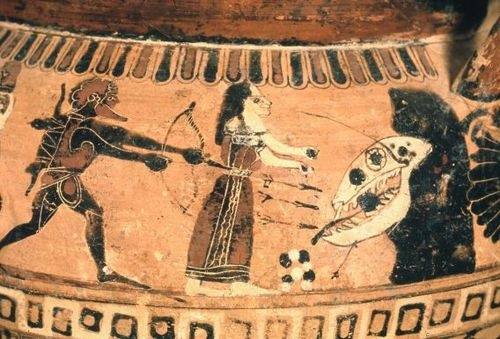
A few of these specimens or their depictions still survive. One of the most striking is the Monster of Troy vase, which shows humans firing arrows and throwing stones at a monstrous head emerging from a rock. This is the ultimate in shrink-wrapping, since it portrays a fossil skull as if it were the animal itself: Mayor suggests that this was a joke by the artist, to highlight the fact that stories of mythical monsters were often based on bones found in local rocks.
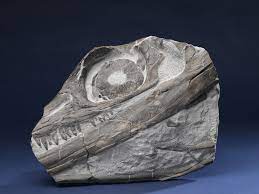
There has been considerable debate about what animal the skull came from. Mayor thinks it is a deliberate composite loosely based on a prehistoric giraffe skull: but personally I’m 90% sure it’s based on a large Ichthyosaur skull which had lost half its beak, and possibly also the back end of the skull. The prominent, segmented scleral ring is typical of Ichthyosaurs, and while most large fossil remains in the Mediterranean area are from extinct mammals, Ichthyosaur remains have been found in Sicily.
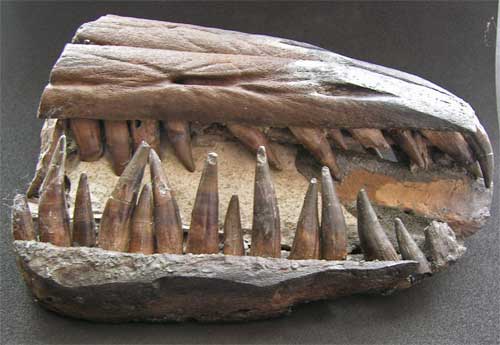
Given how large their eye-sockets were it seems to be common for Ichthyosaur skulls to fracture and lose pieces off the back, so I reckon somebody guessed at the angle of the jaw and back of the skull, based on a horse or cow skull. That would explain the dark suture line drawn on the skull behind the eyes, which would mark the edge of the actual fossil. It’s true Ichthyosaur teeth don’t normally slant forwards like that, but the shape is more like Ichthyosaur teeth than anything else, and they sometimes come loose after death and end up at odd angles.
Again, however, the skull was seen as that of some fairly recently dead monster, something fought and speared by human heroes. It was the norm to associate fossil finds with ancient quasi-religious myths. Most of the most famous Greek philosophers, the ones whose ideas echoed through history, saw these stories as tales for children and uneducated peasants, and ignored reports of giants’ bones as beneath their notice; mentioning them, if they did at all, only to dismiss them. For this reason, the history of early palaeontology was overlooked for two thousand years.
The Greek myths, however, did contain the essential idea “There used to be giant creatures which are now extinct” and some idea of species being mutable, although they generally saw this as drastic mutation and reassortment (a two-headed dog mates with a chimaera who then gives birth to a lion and a sphinx) rather than slow evolution. When it came to slow change, many thought that all life was slowly dwindling and diminishing compared to the giants of the past: but some writers, perceptively, saw the stories of wars between armies of gods and giants as a metaphor for past geological change. Inspired by fossil seashells found on land which was now dry, some Classical myths spoke of between one and five great floods each of which destroyed all life (except, according to the most popular version, the Titans Deucalion and Pyrrha), after which new species had to be formed. According to Ovid (43BCE—17/18CE), some of the new forms were said to be reiterations of what went before, while others were wholly new. As with the Genesis story, there may be observation here of the fact that fossils came in layers; although this is much less obvious around the Mediterranean than in many other areas. The Greeks certainly had a much better idea of the age and mutability of the world than modern Creationists do.
From the 6thC BCE, Classical philosophers sought for purely natural, physical causes for the form of the Earth, and speculated about the origins of life. The philosopher Xenophanes (560—478BCE) observed marine fossils of fish, invertebrates and seaweeds and proposed that life had proceeded by a series of floods and renewals, similar to the Deucalian Flood myths but without involving any Titans, and this idea became accepted as mainstream. However, these marine fossils were very similar to modern life, and so there was no need to see life itself as mutable. “Giants’ bones” didn’t fit comfortably into the new, naturalistic explanations the philosophers were building for the world. We can’t be certain, because so many ancient writings have been lost, but it certainly looks as though with the possible exception of Theophrastus (371—c. 287BCE) and his lost work On Petrifications, they ignored them as being impossibly tainted by religion, and therefore either untrue (despite being on public display in the temples) or negligible. In Plato‘s dialogue Phaedrus, he has Socrates say that philosophers reject or rationalise popular myths, and that when it comes to mythical monsters “. . . I don’t concern myself with them. I have no time for such things. I accept what is generally believed, and pursue more serious matters”.
It’s ironic that the Greek philosophers seem to have ignored the fossil evidence because they saw it as too connected with religion, while modern Creationists ignore it as not being connected with religion enough. And like Creationist theologians, the Greek philosophers were concerned with the ideas inside their heads and how much they could impress their peers with those ideas, rather than with producing actual empirical evidence. In addition it’s been suggested that the philosophers, whose whole schtick was trying to fit the world into an organised scheme that made sense to them, didn’t know what to make of the jumble of disconnected and often shattered bones, and so ignored them because they didn’t fit into their tidy worldview – again, rather like modern Creationists.
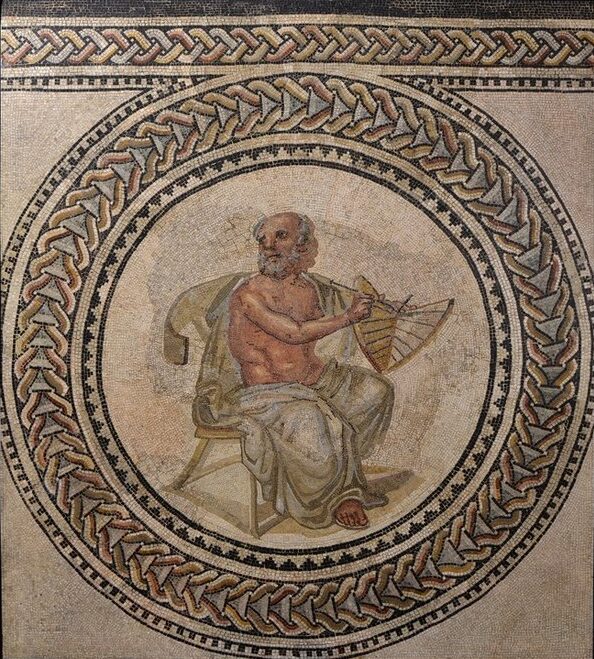
Nevertheless, the philosophers were edging towards the idea of evolution. The Graeco-Turkish philosopher and cosmologist Anaximander of Miletus, who lived from 610BCE to around 545BCE, began to see life as arising in the sea through the action of the sun on the primal ooze via some kind of evaporation (not a million miles from modern ideas of abiogenesis) and unfurling through some kind of progressive adaptation to the environment. He even reasoned that humans must have evolved from other animals, and ultimately from fish, and could not simply have popped into being, because human babies are so vulnerable and would have had to have had slightly less human parents to care for them.
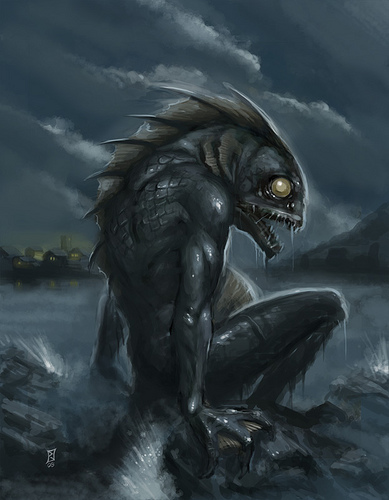
He wasn’t an entirely enlightened thinker, though: he believed the Earth was a stubby cylinder and we lived on its flat end, and his spin on humans evolving from fish was rather odd – at least as it has come down to us, for nearly all of his original writings have been lost, and we know about his theories only from other people’s memories of them. Based on observations of early human embryos, he seems to have envisaged a race of thorny-skinned fish-people at least some of whose young had human babies growing inside them. At puberty they beached themselves, and then the fish part split and a fully-formed human emerged. It sounds to me as though he had probably observed the caterpillar-chrysalis-butterfly transition, as well. Like the Genesis stories, this is a nice metaphor for evolution as we now understand it, but not to be taken too literally.
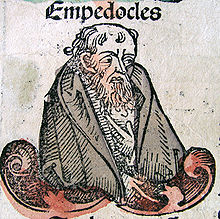
Empedocles of Acragas in Sicily, who lived from 495BCE to 435BCE, traveled widely and is rumoured to have died by casting himself into the crater of Mount Etna, believed that there were four elements, earth, air, fire and water, and two forces, attraction and repulsion, and that these had acted on each other to produce random assortments of organs and body parts, weird, hybrid monsters, which were gradually pulled into their modern shapes, or died out when their forms proved too inefficient. So he had the general idea of forms becoming better-adapted over time, but came at it from an eccentric angle. He saw birth and death as merely the assembling and disassembling of these component parts. Sadly, one of the works of Theophrastus which have been lost was a study on Empedocles and his ideas.
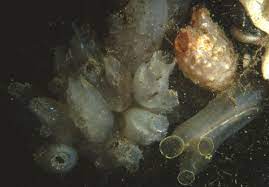
It’s worth noting than as a Sicilian Empedocles probably spent a lot of time on the coast, and the Mediterranean has European sea squirts, Ascidiella aspersa, which definitely do look like disembodied bits of intestine looking for an abdomen to join.
Meanwhile, the philosopher Plato (c. 428—348BCE) was the most important proponent of the opposite view. He had some awareness of Deep Time, stating that mankind had “existed for an incalculably long time from its origin”, but he believed that all species were imperfect manifestations of a fixed, ideal template for that species. This viewpoint allowed for so-called microevolution, as species became more and more like their ideal form, and indeed Plato said that “various changes in climate have probably stimulated a vast number of natural changes in living beings”. However, it precluded radical change from one species to another.
Plato’s student Aristotle (384—322BCE) was the first naturalist we know of who attempted to organise extant living things on a scala naturae, a ladder of relationships, although he saw it as fixed. This arrangement to some extent reflected the real course of evolution, with the bottom occupied by simple forms, but perverted it by placing simple forms only at the bottom and dividing organisms into “higher” and “lower” types. But so far as we can tell from his surviving writings, he ignored anything that didn’t fit onto his ladder, including fossils
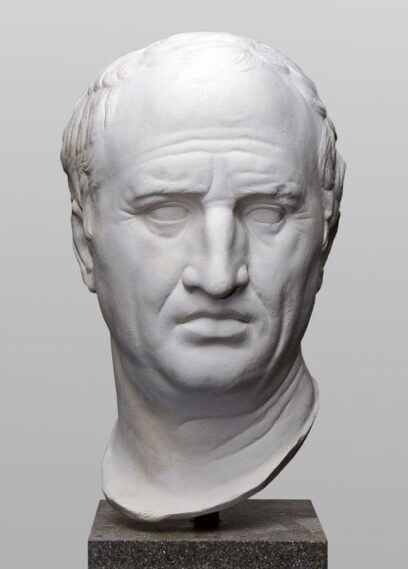
Aristotle saw that an organism’s form fitted its function (although it may make equal sense to say its function fits its form), and the idea that all natural life is, as Cicero (106—43BCE) put it, “directed and concentrated. . .to secure for the world. . .the structure best fitted for survival” became a part of Stoic philosophy. Cicero reported that it was accepted as read by the Hellenistic elite that nature produced forms “best fitted for survival”. In theory this should not completely preclude mutability, but Aristotle and his heirs saw the selection of “best fitted” forms as a deliberate and goal-oriented process and rejected Empedocles’ idea of constant reassortment and extinction. Essentially they had cast out the gods of mythology, and replaced them with a kind of abstract but conscious god of nature. These ideas influenced the later Christian belief in fixed, unchanging species directly designed by God.
A disciple known only as Pseudo-Aristotle (any of several unknown “school of Aristotle” disciples) wrote a text entitled On Marvellous Things Heard, which lists various geological and palaeontological items (burning lignite fields, amber, fossil footprints, petrified human bones etc), as if cataloguing them for a future investigation, but so far as we know it never came. Aristotle’s friend Palaephatus (a nickname which means “ancient tales”), working probably some time in the late 4thC BCE, wrote a work called On Unbelievable Tales in which he tried to explain ancient myths rationally. He explained the myth of the dragon slain by Cadmus whose teeth sprouted armies as elephant tusks belonging to a king named Draco, who was killed by Cadmus, but the teeth were used as currency by Draco’s allies to raise an army. In this, Palaephatus showed insight that the bones and teeth which featured in legend might have come from real animals, but he was adamant that it was impossible for any past species to have become extinct.
Aristotle was possibly the first, or at least the first we know about, to attempt an organised classification of the natural world and a framework against which anomalous fossils could in theory have been compared to identify the ways in which they differed from extant life. But his idea that species were ideal and immutable as they were, and his rigid, formal classification of current species, dissuaded his followers from investigating the giant relics of the past, because they did not fit his scheme, his “ladder”, while living specimens which didn’t fit his pattern were dismissed as mutant anomalies. Again, although he was trying to be rational, Aristotle’s ideas were the reverse of scientific, and more like a Creationist cult, in that his followers decided what results they wanted and then ignored anything that didn’t fit.
In an article entitled The Greek Vision of Prehistory, published in Antiquity 38: 171—78, ED Phillips suggests that the failure of the Greek philosophers to get to grips with the fossil record and attempt to incorporate these extinct animals into their visions of the natural world, or to understand the extent to which species changed over time, was at least partly due to the limited period covered by most Mediterranean fossils, and the way in which geological forces had jumbled them out of order, then spat them out again randomly in landslips and earthquakes. They didn’t really get the chance to look at the stratified layers of different fossil life that we can see in many other regions of Earth. It’s remarkable that the Greek scholars and the authors of Genesis got as far as they did with the limited evidence available to them.
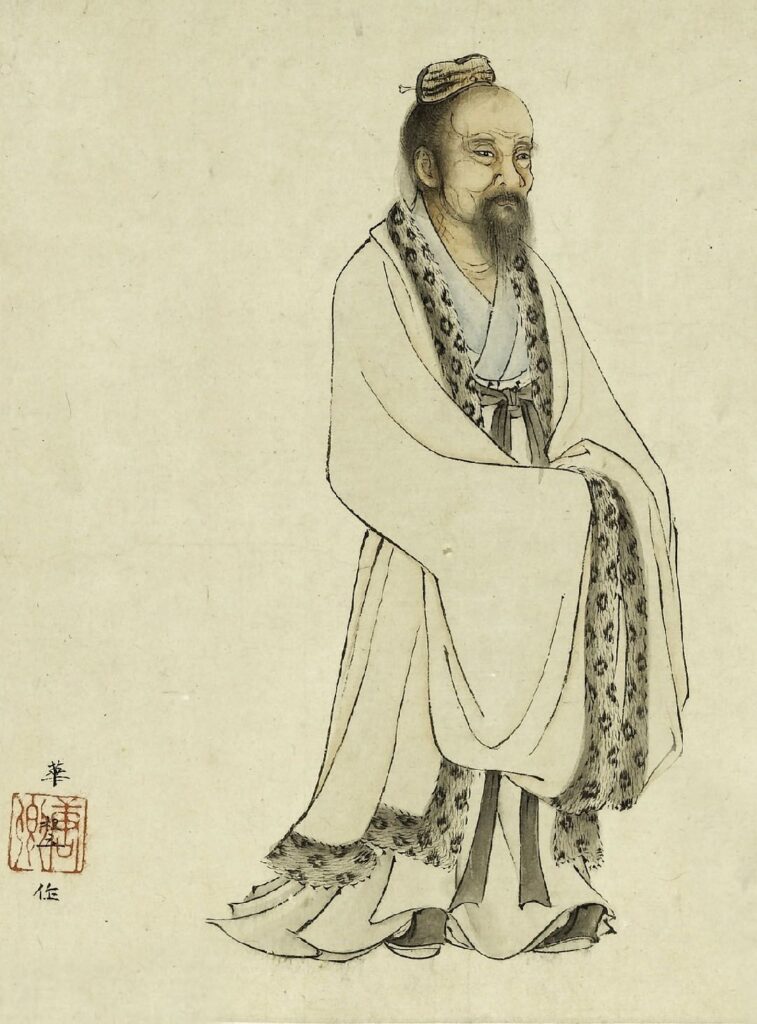
Along with their general belief in the fixity of species, Greek astronomy similarly taught that the stars were unchanging, which discouraged them from recording phenomena such as novae; while Chinese philosophers who believed that nature was mutable made more accurate observations of celestial anomalies. Simultaneously with these Ancient Greek philosophers, Chinese Taoist philosophers such as Zhuang Zhou (c. 369—286BCE) believed that all of nature and the cosmos was in a state of constant transformation, the Tao, and speculated that species changed their form in response to their environment. China was another region where fossil collection was a big deal; possibly starting as far back as 1,000BC, since the I Ching refers to “dragons encountered in the fields”. Fossil bones – collectively called “dragon bones”, although people knew they came from many different species – were later seen as a winter cash-crop for farmers, and were sold in larger quantities for use in traditional Chinese medicine. Later on, in the 12thC CE, good fossil fish were in such demand in China that they were routinely faked.
In the Classical world, also, there were many anatomical models made, of mythical beasts such as Centaurs, Tritons and man-headed snakes. Mayor argues that these were not always cynical fakes but at least sometimes powered by the same instinct which makes modern palaeontologists reconstruct creatures of which they have scant remains. Those who saw though these constructs sometimes did so for anti-scientific reasons: for example Palaephatus argued that Centaurs must never have existed, because species were fixed and if they had once existed they could never have gone extinct.
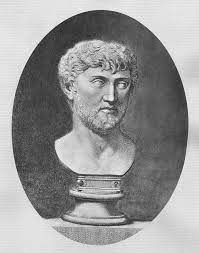
Aristotle’s ideas of the fixity of species did not go unchallenged, however, even in the west. The Roman philosopher-poet Titus Lucretius Carus, 99—55BCE, wrote a famous poem called De rerum natura, On the Nature of Things, based on the tenets of Epicureanism. In it among many other things he set out his own ideas of evolution. He believed that organisms formed from a combination of the elements and chance, then natural selection weeded out the less successful forms, and his idea that this was a blind natural process was influential in post-Mediaeval scientific thought.
However, he didn’t believe land animals could evolve from marine ones, and was dubious about one species evolving into another. He believed instead that all extant animals had been there from the beginning, even as other organisms went extinct all around them. He was also a firm believer in the already thoroughly obsolete and disproven idea of a flat Earth.
Evolutionary thought in the early post-Classical period
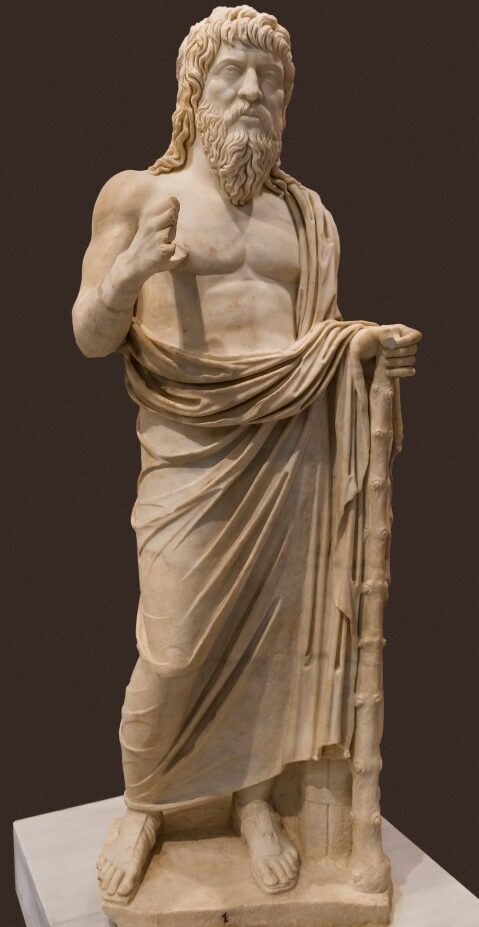
The widely-travelled 1stC CE Pythagorean philosopher and wonder-worker Apollonius of Tyana (c. 3BCE—97CE) is notable among other things for having tried to explain fossils rationally as functional animals. He suggested, for example, that griffins could not fly but might have had membranous wings that helped them to leap, which makes me wonder whether he had either seen a pterosaur fossil, or seen a Protoceratops which still had the imprint of skin on its neck-frill. He identified and described fossil ivory, and spoke of skulls of “dragons” – which he accepted as a still-extant species – seen on his travels in India. Unlike most of his predecessors he was able to separate factual evidence from mythological assumptions, stating that he agreed that giants once existed, because “gigantic bodies are revealed all over earth when mounds are broken open. But it is mad to believe that they were destroyed in a conflict with the gods”. In general, he counselled seekers after knowledge to pay attention to the evidence, but look for natural explanations for it.
But his words fell largely on deaf ears. His brother philosophers preferred abstract thought-processes to actual material evidence, while both the Roman priesthood and the new religion of Christianity generally preferred mythological explanations for it, although his contemporary Pliny the Elder (23/24—79CE) posited a vague sort of evolution, in that he could see that many ancient bones were very large, and took this as evidence that all natural life was slowly dwindling. He wrote an extensive encyclopaedia of natural history; described many fossils in detail, including small, un-exciting ones such as crinoid stems and sea-shells; and correctly identified amber as fossilised sap which had sometimes trapped once-living creatures as it oozed from the tree. Tacitus, (c. 56—c. 120CE), made the same observation about amber.
In the 2ndC Phlegon of Tralles (exact dates unknown) and the geographer Pausanias (c. 110—c. 180CE) continued to take an interest in and record fossil finds around the Mediterranean. Pausanias observed that “animals take different forms in different climates and places”. His descriptions of remains he had seen or heard about were level-headed and practical.
In the 2nd and 3rdC, the Greek-influenced Roman philosopher Claudius Aelianus (175—235CE), known as Aelian, was persuaded by popular myth and skillfull anatomical fakes to believe that Centaurs might once have been real,, but his reasoning about them was impeccable: that time and nature in the deep past might have generated strange fauna which were now extinct. Like many of the philosophers, he had the idea that there were strange creatures in the past which had died out, but not that the creatures of the present had not always existed. In the 3rdC, the sophist (something like an informal university professor) Philostratus of Athens (c. 170—247/250CE) wrote a life of Apollonius which contains most of what we know about him.
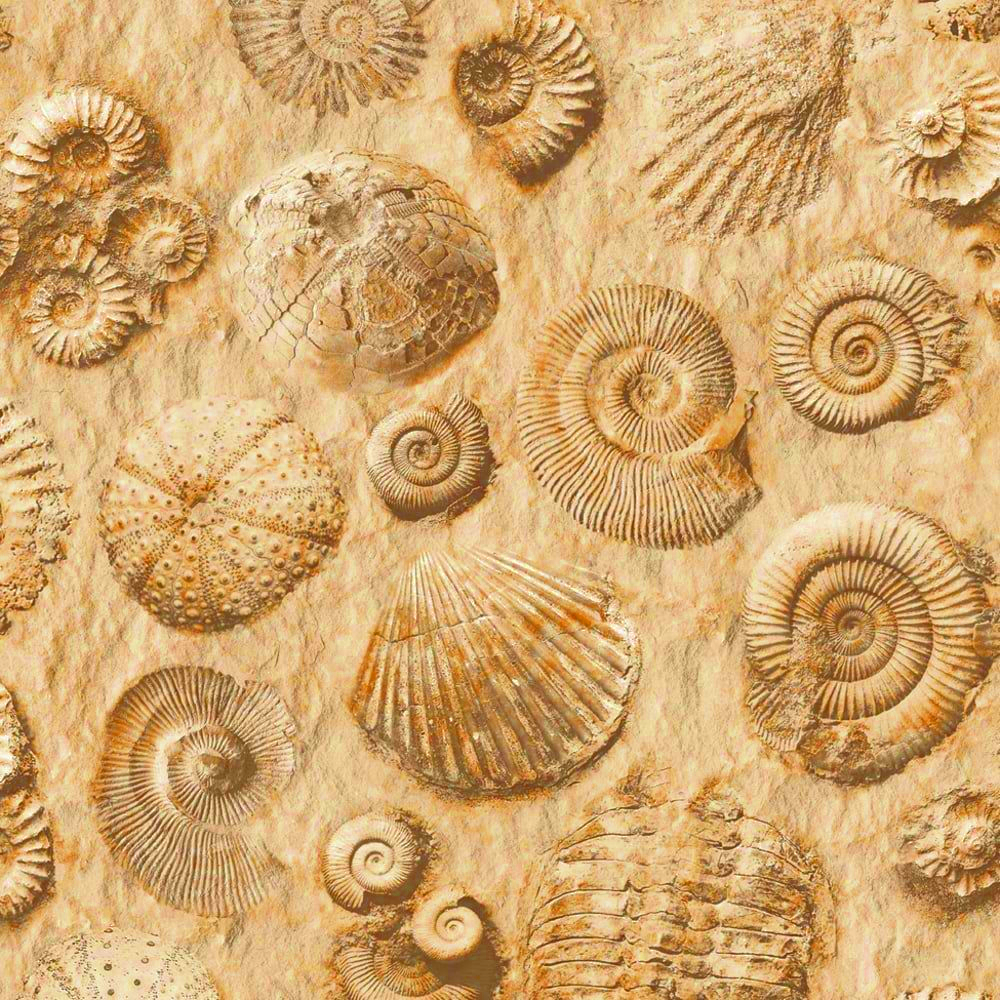
Many other Roman observers described fossils, and the presence of seashells where no sea now was, without reaching any conclusions about the past or the origins of ancient remains, other than “this bit used to be under water”. But intellectual enquiry was passing into the hands of the early Christian church, which at its inception was extremely science-positive, insofar as science could be said to exist at that time. Organised science-denial by Christians, as opposed to occasional moments of incredulity about specific discoveries which went against the accepted scientific wisdom of their time, is really a modern and almost entirely Protestant phenomenon.
I have a separate article on the attitude of the Early Church Fathers to Biblical literalism, with full texts available for quoting. Origen (c. 185—c. 253CE), a.k.a. Origen Adamantius, the author of De Principiis, On the First Principles, the first-ever systematic treatise on Christian theology, wrote that no-one with understanding would take the Creation and Adam & Eve stories literally as written, and that “these things figuratively indicate certain mysteries, the history having taken place in appearance, and not literally”. I don’t know that he necessarily disbelieved the idea that God created the world and its life-forms over a short period, or that humanity began with a single divinely-generated couple, since no alternative scenario had really been proposed at that time: but he was emphatic that the details of the stories in Genesis were ridiculous if taken literally, and were clearly intended as educational parables.
St Gregory of Nyssa (c. 335—c. 395CE), bishop and theologian and a member of the influential group called the Cappadocian Fathers, is credited with being one of the founders of a more naturalistic idea of the origins of Earthly life. He believed that life was created by God, but emphasised that in the Biblical account life “proceeded by a sort of graduated and ordered advance”, from plants to beasts to humans, and that “the vital forces blended with the world of matter according to a gradation; first it infused itself into insensate nature; and in continuation of this advanced into the sentient world; and then ascended to intelligent and rational beings”. [Note that people often confuse “sentient” and “sapient” – sentient means conscious and aware of sensation, like all but the most simple animals, while sapient means capable of complex thought at a human or near-human level.]
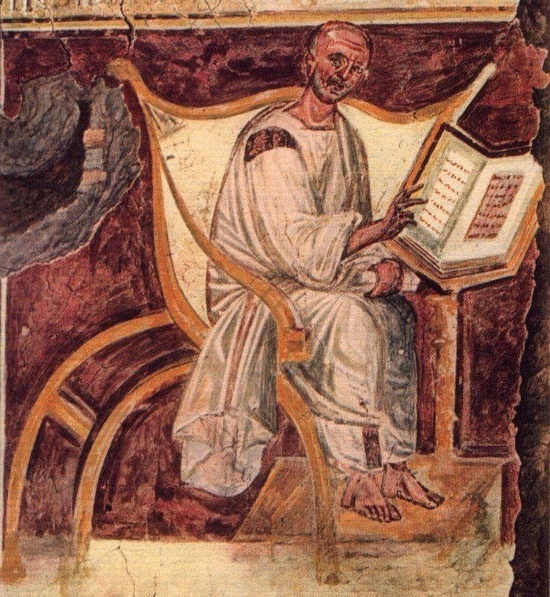
Probably the greatest of all of them was the scholar, theologian and bishop St Augustine of Hippo (354—430CE), whose ideas had a huge influence on later Western philosophy and Western Christianity, and who is credited with having personally reinvigorated and re-established Christianity. He was so exercised about the stupidity of Biblical literalism as it related to Genesis that he wrote whole books on it, called De Genesi ad Litteram, The Literal Meaning of Genesis, and De Genesi contra Manichæos, that is, Genesis in Contradiction of the Manichaeans.
He stated that it was “disgraceful and dangerous” for a Christian to assert, on the basis of their understanding of scripture, things which ordinary people knew to be incorrect on the basis of reason and experience, as it made Christians look vastly ignorant, and caused anything they then said about religion to be laughed to scorn. He was a prophet, was Augustine, as well as a theologian. He wrote that “no Christian would dare say” that everything in the Bible should be taken literally, when clearly a lot of it was allegorical.
Regarding evolution, or something approximating it, he accepted Pliny the Elder’s opinion that life in general and humans in particular were growing smaller over time. As evidence he cited his own viewing of a human-looking but vast molar (probably from a mastodon). He stated that “. . . at least we know [the days of creation] are different from the ordinary day of which we are familiar” – that is, the “days” mentioned in Genesis could have been any length – and that “The things [God] had potentially created. . . [came] forth in the course of time on different days according to their different kinds. . . [and] the rest of the earth [was] filled with its various kinds of creatures, [which] produced their appropriate forms in due time.”
In other works, he speculated that “certain very small animals may not have been created on the fifth and sixth days, but may have originated later from putrefying matter”. This is probably related to the idea in later centuries that maggots were spontaneously generated by the decaying matter they fed on. We know now that animals – any animals – are much too complex to pop into existence through spontaneous generation, although we do believe that extremely simple proto-cells that were little more than complex chemicals once did so. Nevertheless it shows that Augustine, probably the most important person in the history of Christianity aside from Jesus/Yeshua himself and St Paul, believed that at least some organisms were not directly created by God, but evolved later through a natural process – even if his ideas about how that process worked were hazy.
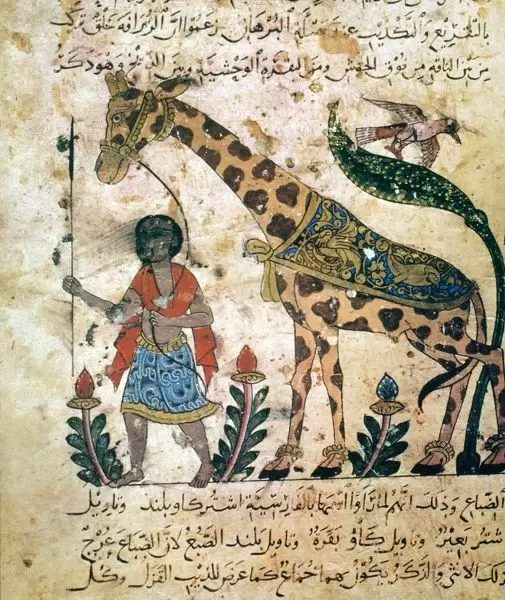
The fall of the Western Roman Empire in the late 5thC took with it most of Classical scholarship about fossils and early ideas of evolution, but some knowledge survived in Byzantium. Two hundred years later, some Islamic scholars took up the torch. Abū ʿUthman ʿAmr ibn Baḥr al-Kinānī al-Baṣrī (776—868/869CE), known as al-Jāḥiẓ (Bug-Eyes), an Iraqi scholar of Ethiopian descent and impoverished background, wrote over two hundred books, of which thirty survive. His best-known work is the Kitāb al-Hayawān or Book of Animals, which combined a detailed bestiary with poems, jokes and anecdotes. In it he described food-chains and wrote that “Every weak animal devours those weaker than itself. Strong animals cannot escape being devoured by other animals stronger than they. And in this respect, men do not differ from animals”. According to mvslim.com, which quotes extensively from the Book of Animals, he went on to say that “Environmental factors influence organisms to develop new characteristics to ensure survival, thus transforming them into new species. Animals that survive to breed can pass on their successful characteristics to their offspring”. If that’s an accurate translation he had understood much of the basis of evolution, except for the radiation of species.
In the 13thC, St Thomas Aquinas (1225—1274), an extremely influential Italian Christian philosopher and theologian, proposed that God had created the potential for organisms which had then sprung up over time, not all at once; but he saw this as a divinely ordained and planned process.
In the 14thC the Muslim Tunisian polymath Ibn Khaldun (1332—1406) wrote a book of universal history called the Muqaddimah, in which he wrote that species became more numerous over time, and that humanity stemmed from “the world of the monkeys”. In the first chapter he wrote that “This world with all the created things in it has a certain order and solid construction. It shows nexuses between causes and things caused, combinations of some parts of creation with others, and transformations of some existent things into others, in a pattern that is both remarkable and endless.”
In chapter #6, he wrote that:
We explained there that the whole of existence in (all) its simple and composite worlds is arranged in a natural order of ascent and descent, so that everything constitutes an uninterrupted continuum. The essences at the end of each particular stage of the worlds are by nature prepared to be transformed into the essence adjacent to them, either above or below them. This is the case with the simple material elements; it is the case with palms and vines, (which constitute) the last stage of plants, in their relation to snails and shellfish, (which constitute) the (lowest) stage of animals. It is also the case with monkeys, creatures combining in themselves cleverness and perception, in their relation to man, the being who has the ability to think and to reflect. The preparedness (for transformation) that exists on either side, at each stage of the worlds, is meant when (we speak about) their connection.
So although Ibn Khaldun hadn’t arrived at natural selection, he had understood that species can transform into other species, and did so by some kind of progression.
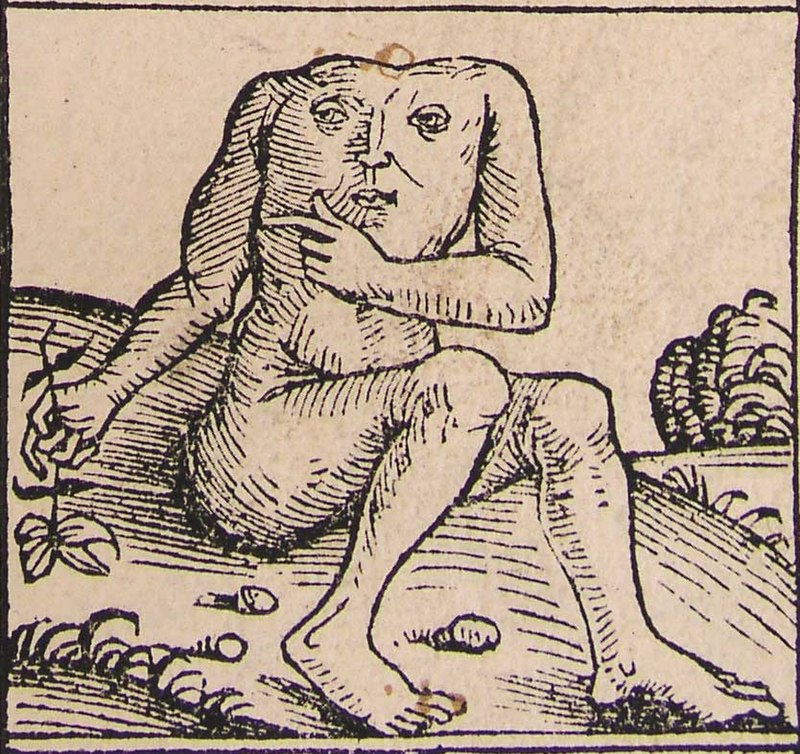
It’s worth noting that the idea that humans were related to other primates was not a new one, although Ibn Khaldun might have been the first to say it in print. Usually, however, instead of expressing it as “humans are a type of ape”, it was viewed the other way as “all apes (and sometimes monkeys) are types of human”. Ancient Greek travellers spoke of creatures they called akephaloi, “headless ones”, later called Blemmyes or “men whose heads do grow beneath their shoulders”, described as men with no head and with faces on their chests, living in Libya or India. Some, reputed to live near the Brisone or Brixontes River, were said to have their eyes on their shoulders. Some were said to be cannibals. These stories persisted right through to the late Mediaeval period.
[The Brisone was believed to be a river south of Egypt and either parallel to or forking from the Nile: probably east of it because Blemmyes was the name of a real tribe in that area. It might have been based on the Blue Nile or on an oxbow lake spawned by the Nile, or might have been purely fictional.],
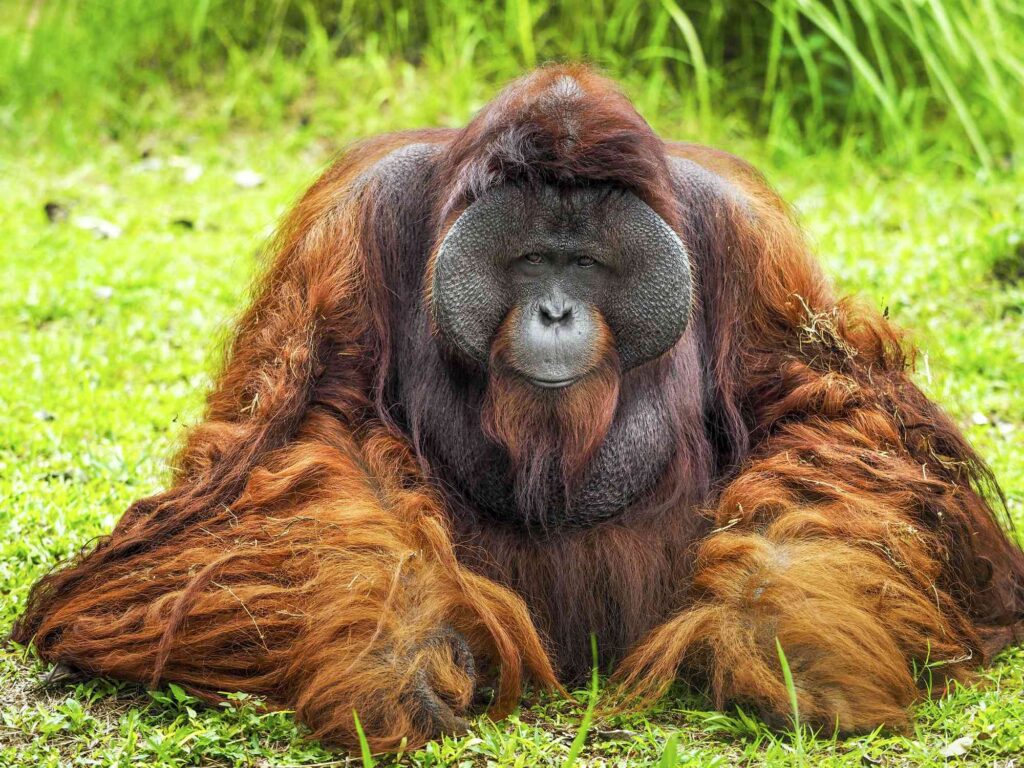
It seems pretty clear these were confused stories of non-human great apes, probably gorillas in Africa and orangutans in Asia, whose heads are carried very low, often seeming to be below the shoulders. “Orangutan” in Malayan means “man of the woods” (I’ve read that the common misspelling “orangutang” means “man in debt”!), and local legend has it that they can talk, but choose not to do so so humans won’t put them to work. Even fairly recent European travellers initially thought they were odd humans, until they got a very close look at them.
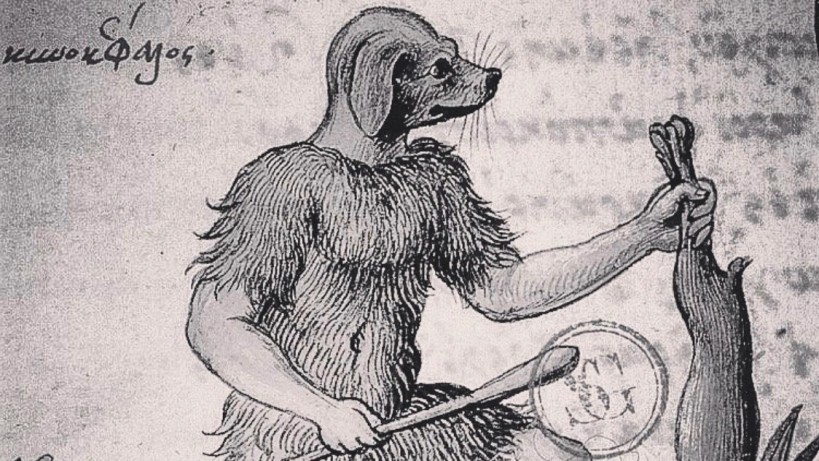
In the 5thC BCE, the Greek physician Ctesias wrote of cynocephalii, dog-headed men, living in India. Other Greek and Roman travellers also spoke of dog-headed men in India, while Herodotus said they lived in Libya.
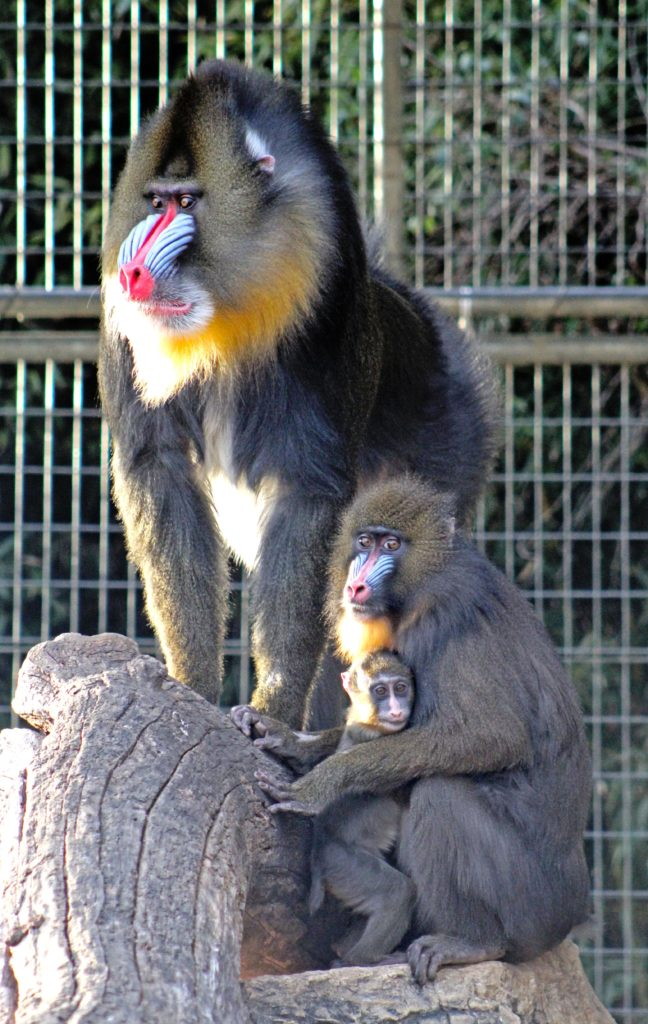
Again, these ideas persisted right through the Mediaeval period in Europe, with the cynocephalii definitely seen as real creatures, and usually as a sort of human. Some of the Mediaeval descriptions, which have them wearing fur capes and painting their faces, make it plain the stories refer to macaques (some of which have dramatic manes) in India or to baboons, and especially to mandrills, in Africa.
Nor is this only an ancient or Mediaeval issue. The story may or may not be true, but it’s traditionally claimed that after a Napoleonic-period French ship sank off the English port of Hartlepool, the sole survivor was the captain’s pet, a monkey dressed in a miniature French uniform, who was promptly hanged as a spy by the townspeople. They believed that the French had tails, and so saw the unfortunate monkey as a small human. “Wha’ hangit the monkey?” became a traditional insult hurled at people from Hartlepool, and in response they called their football team the Monkey Hangers.
A basic idea of heredity and inheritance was also understood. For example, in 1540 Henry VIII decreed that no mare under 13 hands or stallion under 15 hands would be allowed to be loose on common land in England, and any undersized stallions found on common land would be killed, in an effort to increase the size of English horses. Then and later, farmers understood the principles of breeding for particular characteristics. The Jews also already had some vague idea of sex-linked inheritance, as it related to not circumcising a baby boy if there was haemophilia in his mother’s family
Renaissance and later evolutionary thought and the knowledge of Deep Time
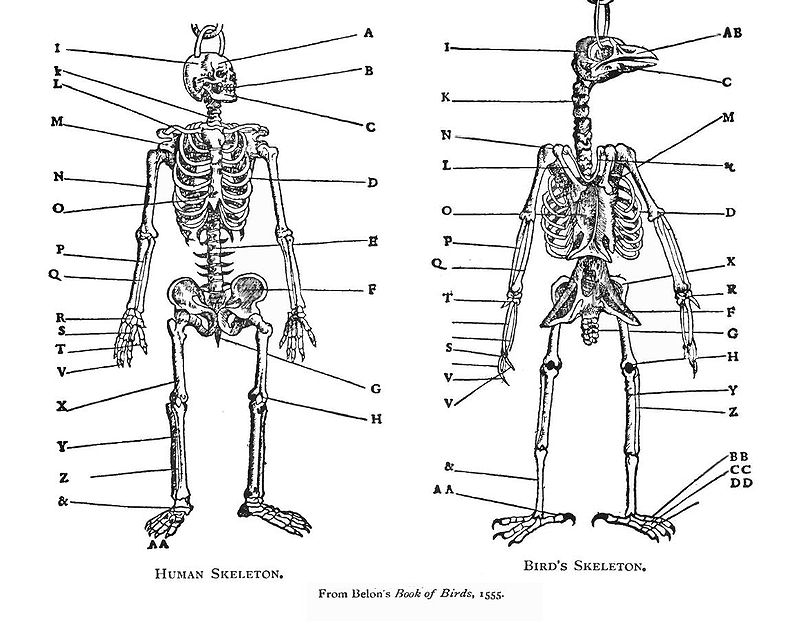
In 1555, the French naturalist Pierre Belon (1517—1564) published L’Histoire de la nature des oyseaux (The Natural History of Birds), in which he noted the skeletal similarity of birds and humans: an important step, although he probably didn’t realise it, on the road to understanding the radiation of species.
In the early 17thC, the French philosopher Renée Descartes (1596—1650) was influential in encouraging the idea that the universe ran like a machine, without needing to involve the intervention of gods. In many respects, however, his ideas were profoundly in opposition to evolution and in that sense far more primitive than those of religious thinkers such as Ibn Khaldun, for he believed that mankind was fundamentally different from all other animals, at least mentally, a different sort of thing, and that non-human animals were mere clockwork mechanisms with no consciousness, who could be subjected to any cruelty without remorse because they had no awareness of pain, and no self with which to be aware. His ideas had a poisonous effect on animal welfare, especially in the laboratory, for around 350 years.
The French aristocrat and diplomat Benoît de Maillet (1656-1738) equally believed that the world progressed by wholly natural processes, but had a much better grasp of the interconnectedness of life than Descartes had. He was the first known proponent of panspermia – the idea that the seeds of life drifted through space – and believed that plants came from seaweed and humans from fish (not too far from what we now believe) and also, less plausibly, that birds came separately from flying fish.
The great German mathematician and polymath Gottfried Wilhelm Leibniz (1646—1716) took a more theistic view. He saw the body and soul as separate entities which influenced each other. He believed that the soul was acting towards some final goal, but that “all corporeal phenomena can be derived from efficient and mechanical causes” – that is, that the body was acted on by short-term physical circumstances. This paved the way for what would later be the normal theistic view (normal in most countries except the US, Northern Ireland and hardline Muslim states) that bodies evolve through natural forces while being animated by a soul which has more metaphysical origins.
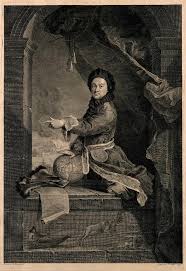
The French philosopher, mathematician and man of letters Pierre Louis Moreau de Maupertuis (1698—1759) was one of the first to think seriously about genetics and natural selection, suggesting that traits were inherited from both mother and father in combination to produce a new individual, and that only traits which offered advantages would be passed on. This, he thought, explained why all extant species appeared genetically fit (because they descended from those individuals who were fit enough to survive), and recognised that those extant species represented only a tiny fraction of all the species which had once existed.
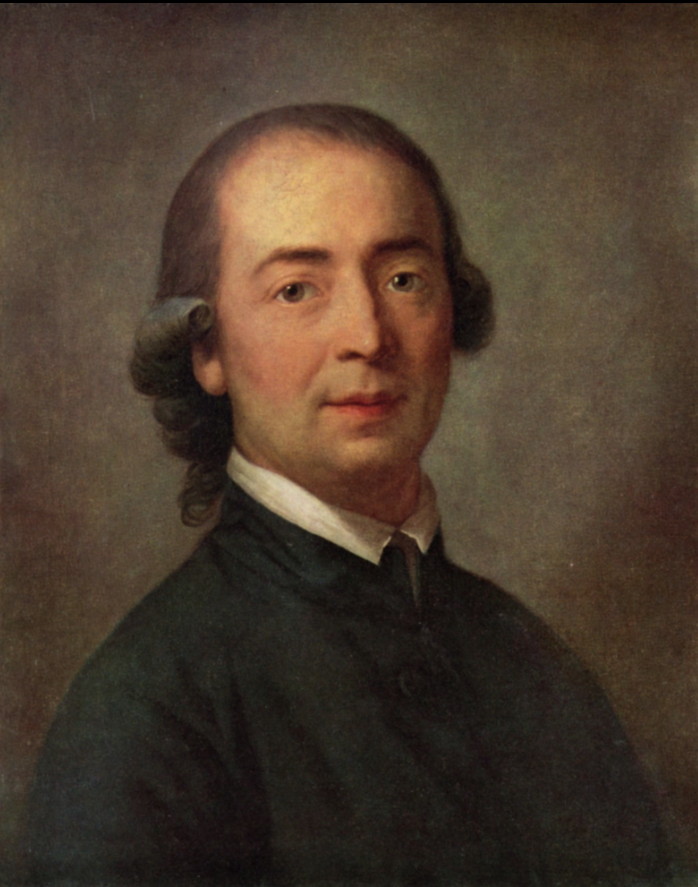
Like Leibniz, the Prussian philosopher, clergyman, poet and linguist Johann Gottfried von Herder (1744—1803) took a broadly theistic view, but is regarded as a strong Enlightenment precursor to Darwin. Between 1784 and 1791 he published a four-volume work called Ideen zur Philosophie der Geschichte der Menschheit (Ideas on the Philosophy of the History of Mankind) in which he wrote about the progression from simpler to more complex organisms over time, and the way in which nature produces an overabundance of species and individuals who then compete to survive. He understood the progressive development of life – but lacked Ibn Khaldun’s insight that humans were part of the same unfolding process.
He was however firmly opposed to racism, stating that despite their variations all humans were clearly the same species, and that nations which had persecuted Jews in the past had a duty now (i.e. in about 1780) to help them to regain their ancestral homeland in Israel. He wrote poetry about the injustice and cruelty of slavery as then practiced in the US, and held all human ethnicities to be equal; but in the 19thC his ideas on the distinctiveness of different peoples were perverted and used to prop up the very racism and African enslavement he had campaigned against. This is not a million miles away from where we came in, with Creationists willfully taking Darwin’s words out of context.
While this growth of early evolutionary thought was going on, however, taxonomists – scientists who sought to classify living things by species, genus etc according to their anatomical similarities – saw species as fixed and unchanging. The naturalist and botanist John Ray FRS (1627—1795) was the first to work out a coherent classification system for plants and was also the first to attempt to define a species, which he described as “as a group of morphologically similar organisms arising from a common ancestor”. But he also said that “. . . no surer criterion for determining species has occurred to me than the distinguishing features that perpetuate themselves in propagation from seed. Thus, no matter what variations occur in the individuals or the species, if they spring from the seed of one and the same plant, they are accidental variations and not such as to distinguish a species. . . Animals likewise that differ specifically preserve their distinct species permanently; one species never springs from the seed of another nor vice versa”, thus in his own mind ruling out the possibility of one species slowly transforming into another.
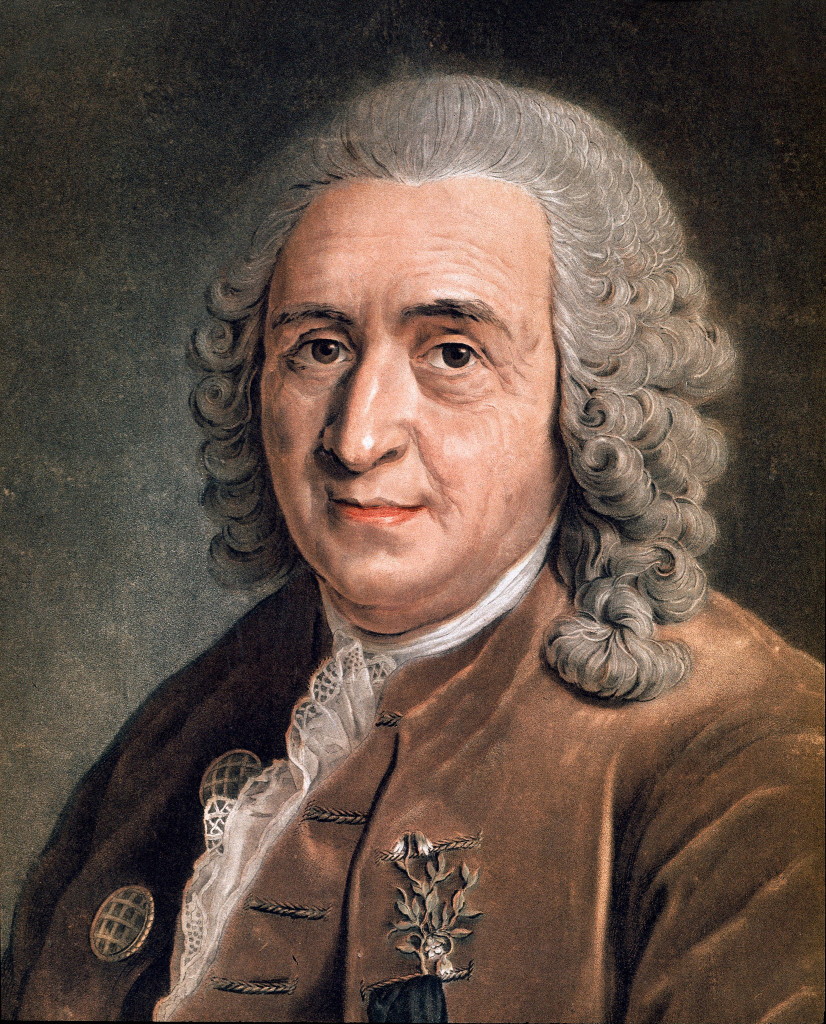
Perhaps these early taxonomists had some sense of the chaos which knowledge of evolution and DNA would bring to their discipline, making “species” and most higher groupings a decidedly woolly and often rather arbitrary concept. But the greatest of them, the Swedish naturalist Carl Linnaeus (1707—1778), the inventor of the binomial system of species names, couldn’t close his eyes to the obvious. In a letter to the German naturalist Johann Georg Gmelin dated 25 February 1747, Linnaeus wrote:
It is not pleasing to me that I must place humans among the primates, but man is intimately familiar with himself. Let’s not quibble over words. It will be the same to me whatever name is applied. But I desperately seek from you and from the whole world a general difference between men and simians from the principles of Natural History. I certainly know of none. If only someone might tell me one! If I called man a simian or vice versa I would bring together all the theologians against me. Perhaps I ought to, in accordance with the law of Natural History.
That “or vice versa” is interesting, because it suggests he was considering the Mediaeval and Classical solution of simply calling all apes and monkeys (that’s what “simian” means) exotic types of human. Linnaeus also had the idea that a new species would grow to fill the available space, but took it to extremes by proposing that all biota began at a single point with a single pair (possibly inspired by the Noah’s Ark story). This idea was ridiculed by German zoologist Eberhard August Wilhelm von Zimmermann (1743—1815), who made the first detailed regionalization of the zoological kingdom, and thought it more reasonable to assume that God had created all species in the areas where they were now found, in large numbers and already in a balanced equilibrium.
The Genevan naturalist Charles Bonnet (1720—1793) was the first to coin the term “evolution” (which literally means “unrolling”), but he applied it to the since-discredited concept of pre-formation. This was the belief that organisms grow from microscopic copies of their adult form, tiny little complete organisms hidden inside the germ cells. This idea was profoundly opposed to evolution as we now use the term, for preformationists believed that these tiny homunculi had existed since the dawn of Creation.
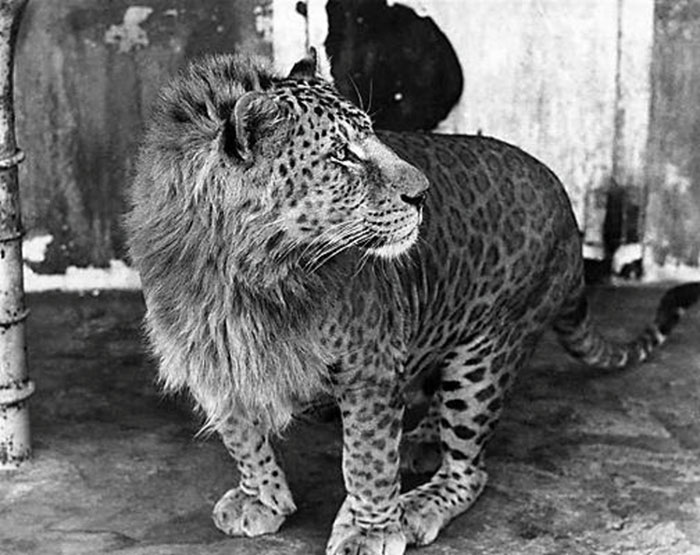
French naturalist, mathematician, cosmologist, and encyclopédiste Georges-Louis Leclerc, Comte de Buffon (1707—1788) got close to modern ideas of evolution, with some idea of adaptive radiation, and also “got” that species is a rather woolly and arbitrary concept. He suggested that what people were calling “species” were just extreme varieties, and that lions, tigers, leopards and domestic cats might have a common ancestor. This means that he had grasped the idea of adaptive radiation, and considering that lions, tigers and leopards can all interbreed and some of the hybrids are even fertile, he was really on to something. But he still denied that humans were primates and believed in what Creationists call “kinds”, groups of similar form which are wholly separate genetically from all other groups, even though his view of the world was materialistic and not theistic. He held that the 200 or so mammal species then known formed 38 discrete groups, each with a unique, discrete common ancestor originally formed by spontaneous generation, and shaped by “internal moulds” which prevented them from straying too far from the original. Remember that nobody at this time knew about genes or how inheritance really worked.
His fellow French philosopher and slightly younger contemporary, Denis Diderot (1713—1784), also believed that life arose through spontaneous generation (which we now think is sort-of true if you stretch the definition of “life” to include a lipid bubble with a wisp of RNA trapped inside), but held that species constantly changed as new forms arose and then survived or not through trial and error, getting ever closer to the idea of natural selection.
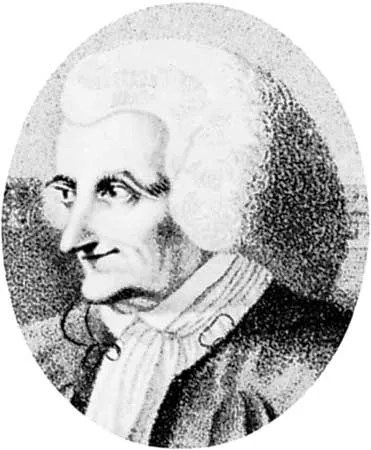
The Scottish judge James Burnett, Lord Monboddo (1714—1799), the founder among other things of the first Canongate theatre in Edinburgh, not only worked out the principles of evolution, but also applied them to the development of human languages (despite being partially deaf). He was an anthropologist, a nudist, a notorious eccentric and a friend of the great philosopher David Hume and of Robbie Burns, and had studied Greek philosophy at university, which probably helped open him up to the world of palaeontology. It had also left him amenable to believing in all kinds of odd creatures from Greek mythology, such as men with one foot (probably based on travellers’ tales of Equatorial African herdsmen who rest standing on one leg, like cranes – possibly because doing so forces them to stay awake and alert, otherwise they’d fall over).
He agreed with Linnaeus and Ibn-Khaldun that man was a primate, and was the first to understand that humans had started in a single location in a non-theistic sense (although he also suggested, probably as a joke, that human babies were born with tails which the midwife cut off). He understood that primates, and by implication other groups, had radiated from a common ancestor, and also proposed that creatures had changed their characteristics in response to their environment over a very long period; but because of his eccentricity and fondness for leg-pulls his ideas were not taken very seriously at the time.
Around a hundred years later, when Darwin’s On the Origin of Species was published and causing a stir, Blackwoods magazine published a little poem which ran:
Though Darwin may proclaim the law,
And spread it far abroad, O!
The man that first the secret saw,
Was honest old Monboddo.
The architect precedence takes
Of him that bears the hod, O!
So up and at them, Land of Cakes,
We‘ll vindicate Monboddo.
Land of Cakes is a literal translation of Caledonia, the old name for Scotland. Scotland has been very important to the development of palaeontology and the concept of evolution, having an extensive, well-preserved fossil record, including many good dinosaur footprints, and a great deal of cruel and unusual geography much of which is on visible display, and some of it sticking up bang in the middle of the capital city.
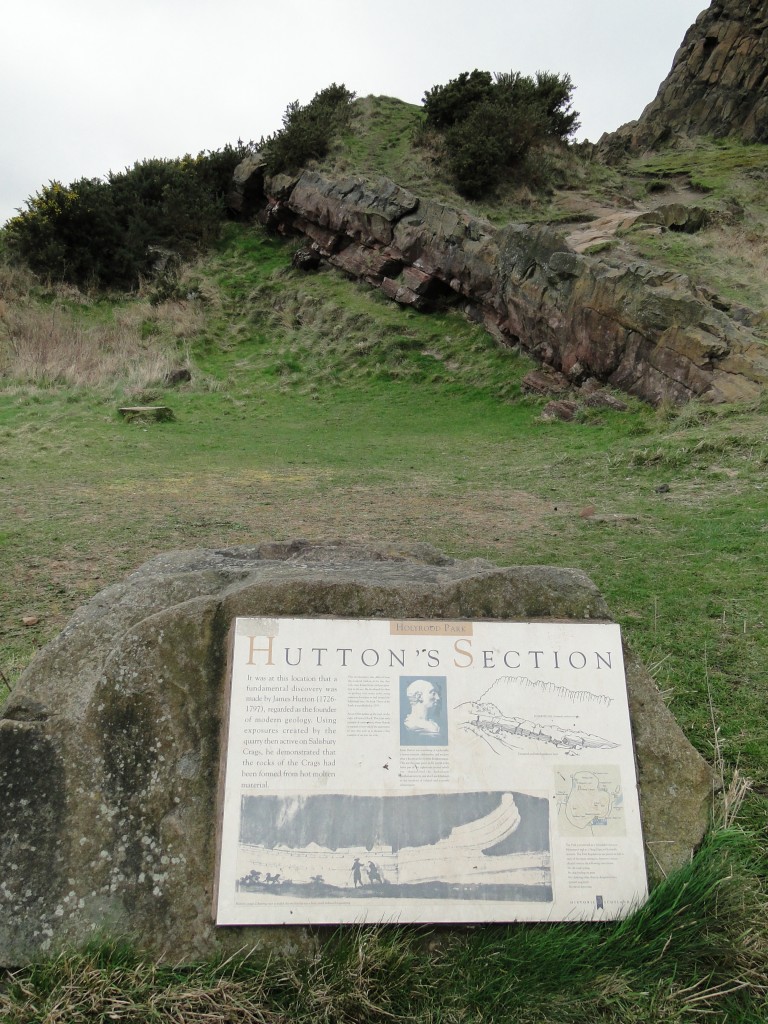
James Hutton, (1726—1797), Scottish farmer and naturalist and the author of Theory of the Earth, is known as the founder of modern geology. He it was who observed the plasticity of rock, layered and folded and overturned, and understood the long time it would take to build up sediments. In the late 18thC, palaeontology was catching on as a discipline, but many people still saw fossils as evidence of Noah’s flood, and many people at that time were what we now call Young Earth Creationists and believed that the planet was only 6,000 years old. But Hutton said that when he examined the rocks of Siccar Point, a promontory about 20 miles east of Edinburgh, and of other geological sites, he found “no vestige of a beginning, no prospect of an end.” This advance, the discovery of Deep Time, was vital to the development of evolutionary theory, as it demonstrated that the Earth was old enough to allow time for almost any transformation.
Many of his observations were made in Holyrood Park in Edinburgh. which contains a whopping-great extinct volcano right in the centre of the city. The rim of the volcano is known as Salisbury Crags, while a massive basalt plug in the shape of a crouching lion which sticks up at the south side of the park is called Arthur’s Seat. It was at a quarry at the foot of Salisbury Crags that Hutton observed where lava had forced its way between layers of sedimentary rocks, and said of it “We know that the land is raised by a power which has for its principle subterraneous heat, but how that land is preserved in its elevated station, is a subject which we have not even the means to form a conjecture.” The section of Salisbury Crags where he worked is known as Hutton’s Section in his honour.
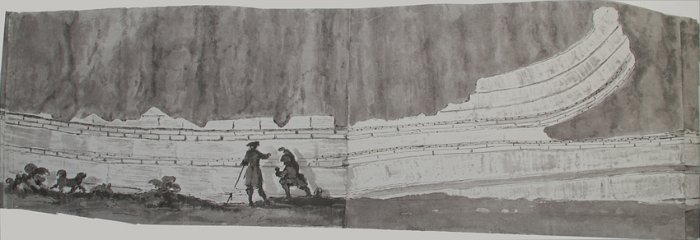
French naturalist Jean Léopold Nicolas Frédéric, Baron Cuvier (1769—1832), better known as Georges Cuvier, added another palaeontological advance by comparing the skeletons of mastodons and mammoths with those of extant elephants, and proving beyond doubt that species could go extinct. He could see that fossilised fauna came in layers characterised by different species, and was a believer in catastrophism – an extreme form of what we would now call punctuated equilibrium – with new ecosystems appearing after a succession of major geological changes which led to mass extinctions.
With somewhat less prescience, he declared that species were immutable and did not change over time, and that all large animal species had already been discovered and no new ones would ever be found – well before the discovery of the mountain gorilla, the saola (a fairly big Vietnamese bovine in between cattle and antelope) and at least a couple of species of beaked whale. In 1811 he and French geologist Alexandre Brongniart (1770—1847) published a study of the layered rock formations around Paris, which contributed to our understanding of palaeontology, but his opposition to the idea of evolution itself, as proposed by e.g. Lamarck and Étienne Geoffroy Saint-Hilaire (of whom more later), kept it out of the scientific mainstream for decades.
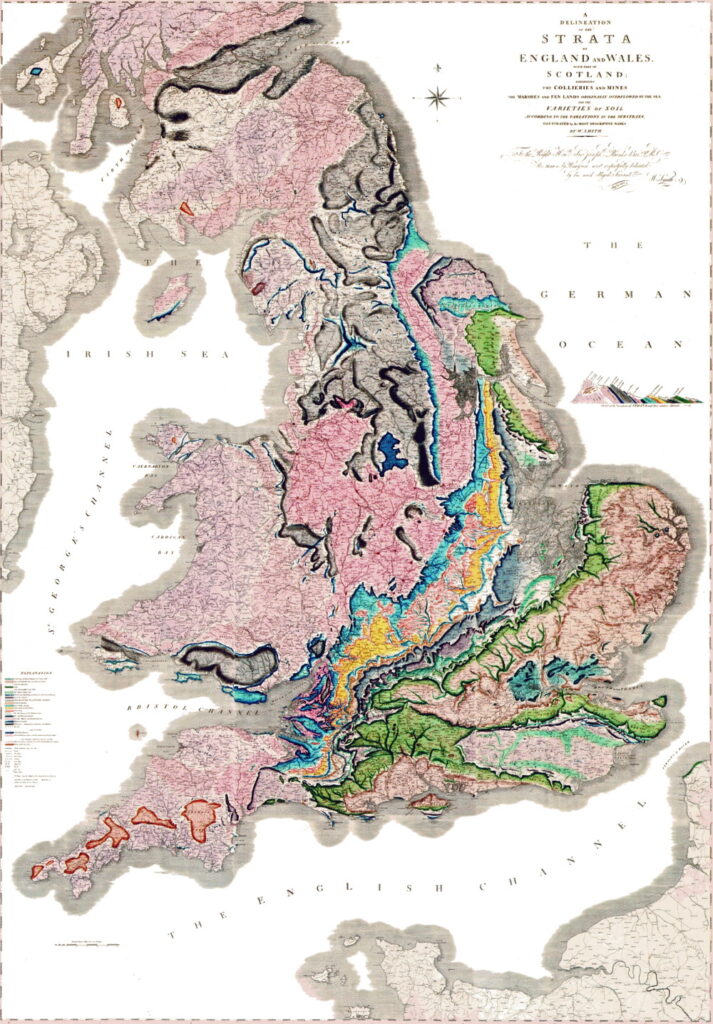
Separately, between 1799 and 1815, Cuvier and Brongniart’s contemporary William ‘Strata’ Smith (1769—1839) produced a geological survey of the area around Bath, and then went on to produce a very detailed geological map of most of Great Britain. This was the first detailed geological map of such a large area, and he was one of the first to use the different fossils found in different layers of rock as indices by which to distinguish those layers. Because he was of humble origins his work was largely ignored at first, but before he died he saw himself labelled as the Father of English Geology.
Also around this time, the English cleric and economist Thomas Robert Malthus FRS (1788—1834) was working on an idea of how population growth could lead to competition and a struggle for survival. His work An Essay on the Principle of Population was concerned with competition between human tribes, only, but it helped to shape the idea of natural selection in the minds of both Charles Darwin and Alfred Russel Wallace half a century later.
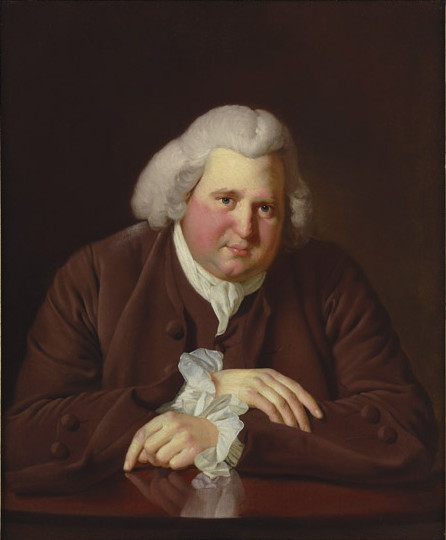
Erasmus Robert Darwin FRS, (1731—1802), was an English medical physiologist, a natural philosopher, an inventor, a poet, an ardent abolitionist opposed to the slave-trade, and Charles Darwin’s grandfather. His work Zoonomia: or The Laws of Organic Life, a two-volume work published in 1794 and 1796, was mainly concerned with associative psychophysiology (the idea that consciousness can be explained by the interplay of sensory stimulation and responses), but he also speculated that “all warm-blooded animals have arisen from one living filament.” This is too limited – we now think that all life started from a filament of RNA, and that mammals and birds became warm-blooded separately – but it’s still startlingly prescient. His poem Temple of Nature, published (presumably posthumously) in 1803, described how all life arose from microorganisms in the mud.
You can read the whole thing here: Temple of Nature. It’s pretty heavy going: very flowery, and larded with breathless religious sentiment. But the accompanying notes are full of interest. For example, he says that the idea of spontaneous generation has fallen into disrepute because of Ovid and others suggesting that large animals could rise from the mud fully formed: but that “spontaneous vitality was only to be looked for in the simplest organic beings, as in the smallest microscopic animalcules”, foreshadowing our modern ideas about abiogenesis, and he predicts that these forms reproduced initially by parthenogenesis (“by solitary reproduction”), successively producing forms “rather more perfect than themselves” until they eventually developed sexual reproduction. He also used the term “evolution”, although not quite as we understand if today: he used it to refer to the unfolding of the world in general.
By now, at the dawn of the 19thC, evolution (although nobody was yet calling it that in the sense in which we use it now) was a hot topic, and as with his grandson, Erasmus Darwin’s ideas attracted some disagreement from Creationists. In 1802. so after the publication of Zoonomia but before Temple of Nature, the clergyman and utilitarian philosopher William Paley (1743—1805) published a work entitled Natural Theology or Evidences of the Existence and Attributes of the Deity. It was intended in part as a rebuttal of Darwin Sr, accepting adaptation as real but seeing it as due to God acting directly through and on nature. Paley’s book was the first to draw the “watchmaker” analogy: the claim that any intricate system must have a designer. This of course was before the mechanism of evolution was known, let alone computer simulations which demonstrate how a simple algorithm can generate complex results. And who, at the time, could have expected that the same tired, long-discredited arguments would still be being dragged up in the US Bible Belt 200 years later?
Growing understanding of the mechanisms of evolution
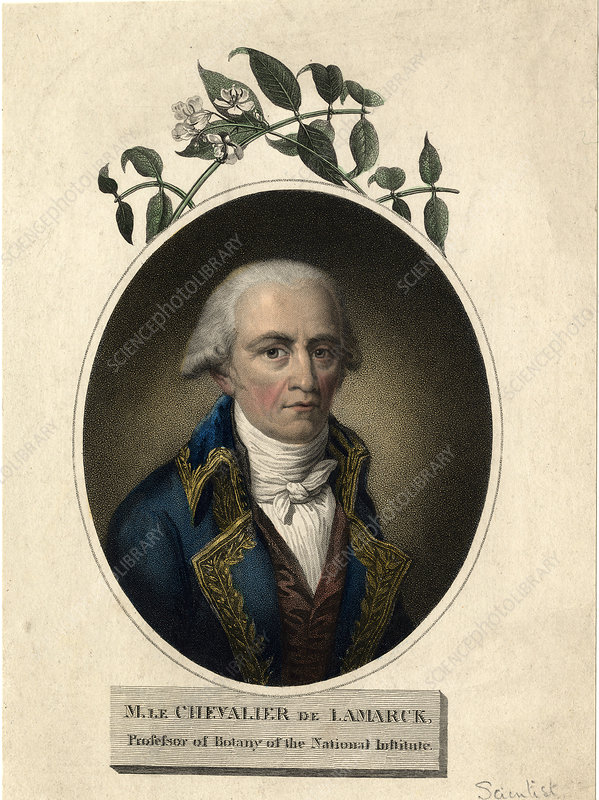
The time was now ripe for a serious scientist to work out the actual mechanism of evolution, rather than the mere fact that it happened. Unfortunately, the first person to do so was French naturalist and professor of botany Jean-Baptiste Pierre Antoine de Monet, chevalier de Lamarck (1744—1829), who got some parts of it spectacularly wrong, even though his ideas seemed reasonable at the time. In his 1809 book Philosophie zoologique, Philosophy of Zoology, Lamarck started from the assumption that the transmutation of species was definitely real. He did not, however, believe that all life shared a common ancestor, but rather that simple life was continuously created by spontaneous generation, with each new instance of generation giving rise to a separate line of descent (or of ascent, depending on how you look at it).
This is actually not a million miles from modern ideas of abiogenesis, except that we now think that all known life is descended from the same common individual single-celled ancestor, or gene-sharing pool of single-celled ancestors, about four billion years ago. Any other simple cells which were not part of that common pool and which may have formed by abiogenesis at the time, or since, either died out without leaving descendants, or their descendants are small and obscure and live somewhere where we haven’t found them, such as on the deep ocean floor.
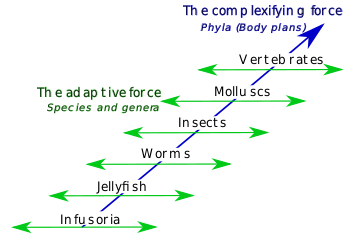
Lamarck proposed that all species were arranged on an ascending ladder of increasing complexity, a “great chain of being” in which organisms could be seen as “higher” or “lower”, similar to Aristotle’s scala naturae, and that there were two forces at work to generate this. The Complexifying Force was an undefined “life force” which caused organisms to move from simple to more complex over time (a sort of reversal of entropy). Within each level, the Adaptive Force resulted in the generation of the visible variety of species, as organs which were under-used atrophied and ones which were exercised increased. He called his and others’ belief in what we would now call evolution “Transformationism”.
It was the mechanism which he proposed for this atrophy or increase which is now known as Lamarckian inheritance or Lamarckianism. In his view, transmutation happened within an individual’s lifespan. Since nobody yet had a very clear handle on how inheritance happened, although it clearly did, he thought that characteristics which an organism acquired during its life, by e.g. stretching or building up muscle, or by neglecting a body-part and allowing it to become weak, would become fixed in what we would now call its genome, and then passed on to its offspring.
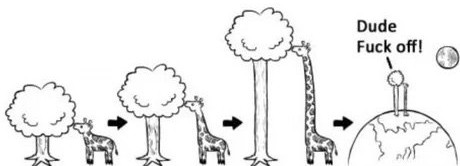
We now know that this is incorrect in all but a few instances. Evolution in fact normally occurs through the differential reproductive success of organisms who were born already carrying the genes for inherited traits which make them better able to have healthy offspring in their environment, or to promote the welfare of the offspring of close relatives with whom they share the same genetic traits. When underused body-parts, such as the eyes of cave-fish, become weaker from generation to generation it’s because there’s no selection pressure to keep the genes which control them healthy, so they accumulate harmful mutations.
Lamarckian inheritance has been thoroughly discredited, except for a few very limited instances of which more anon. In the mid 20thC the Soviet biologist Trofim Lysenko would decide that natural selection, genetics and science-based agriculture were Western conspiracies and reject them in favour of Lysenkoism, which combined a souped-up version of Lamarckian inheritance with wishful thinking. Biological science in the Soviet Union was destroyed for decades as a result, leading to the failure of Soviet agriculture and contributing to the ultimate collapse of the Soviet system.
There are two limited exceptions we know of, however, where acquired traits are passed on in much the way Lamarck proposed. Epigenetic tags are formed when an organism is subject to stresses during its life which result in changes in the histone scaffolding which supports the chromosomes, affecting how frequently particular genes get expressed, and these changes can be passed on for a few generations.

It’s also the case that individual genes, stretches of nucleotide bases, can be read in slightly different ways depending on where you start, resulting in different strands of mRNA being generated and different proteins manufactured from the same gene. Octopodes carry this to extremes, making their genes do the duty of Swiss Army Knives, and they seem to be able to change which mRNA is produced with what frequency during their lifetime in response to environmental pressure, with some kind of behavioural input, and then pass that on to future generations without necessarily changing the original genes. We’re still working out how the creepy little fuckers do it.
Contemporary with Lamarck, the Swiss botanist Augustin Pyramus de Candolle (1778—1841) wrote about what he described as “Nature’s War”, the struggle for existence between competing individuals and species. Plants, he wrote, were “at war with one another” for space and resources. He was the first to recognise the principle of convergent evolution, where different species could come to have similar characteristics which had not been possessed by their most recent common ancestor, and understood that there must be historical reasons why similar habitats in different regions were inhabited by different species. He understood the importance of homology, where organs which might now have different functions clearly shared a common origin (like the similarity between human and bird skeletons detailed by Belon 250 years earlier), and used the organisation of the different organs of plants to classify their relationships.
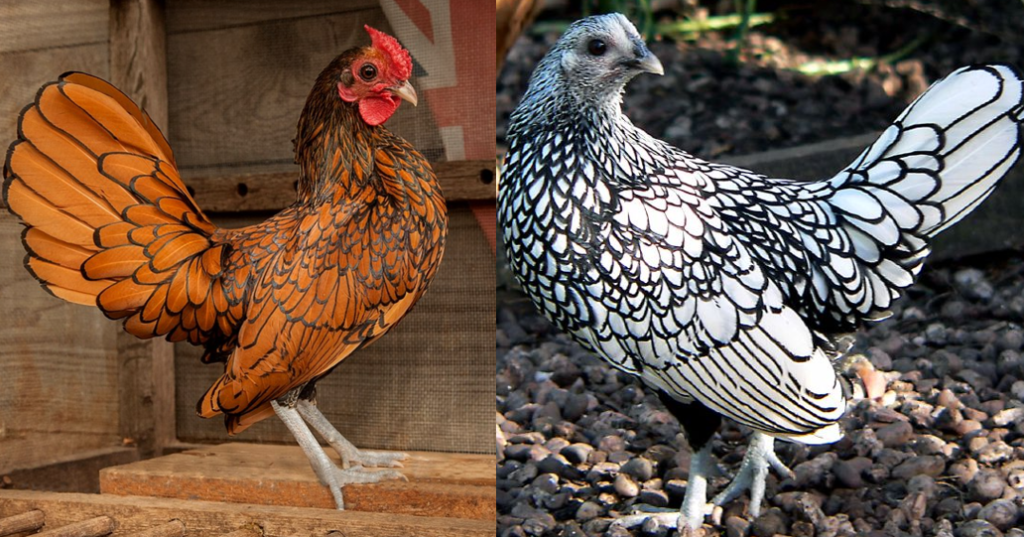
Sir John Saunders Sebright (1767—1846) was not a geologist or palaeontologist but an expert on animal husbandry, but his ideas were to impress Charles Darwin. In a pamphlet published in 1809, Sebright wrote that “A severe winter, or a scarcity of food, by destroying the weak and the unhealthy, has all the good effects of the most skilful selection” so that “the weak and the unhealthy do not live to propagate their infirmities” – explicitly comparing the effect of natural competition and environmental pressure to human-led selective breeding. He was also the developer of the Sebright bantam chicken. This is a small, neat-looking bird which usually has white or tan (“silver” or “gold”) feathers outlined in black, although dilute forms, where the edging is just a darker shade of the ground colour, now exist..
In 1813 Scottish-American physician and printer Dr William Charles Wells FRS FRSE FRCP (1757—1817) presented various papers before the Royal Society (the UK’s national academy of sciences, founded in 1660), starting from the basis that evolution had occurred in humans, and then describing natural selection (although he didn’t use that term) in relation to skin colours in humans. In 1818 a similar paper of his entitled An Account of a White Female, part of whose Skin resembles that of a Negro, with some observations on the cause of the differences in colour and form between the white and negro races of man was published posthumously (the lady in this case was “white” in the most literal sense – she was an albino).
He wrote that what was done for domestic animals artificially “seems to be done with equal efficiency, though more slowly, by nature, in the formation of varieties of mankind, fitted for the country which they inhabit. Of the accidental varieties of man, which would occur among the first scattered inhabitants, some one would be better fitted than the others to bear the diseases of the country. This race would multiply while the others would decrease, and as the darkest would be the best fitted for the [African] climate, at length [they would] become the most prevalent, if not the only race.” Although he did not expand his idea to other areas, the implication was that natural selection would apply more generally,
Wells, who, like Darwin, was educated at Edinburgh University, led a very colourful life, moving back and forth between Britain and North America several times, and at one point serving as an army surgeon in a Scottish regiment. He must have been an abolitionist, tacitly if not openly. At the height of slavery in the New World, it took nerve for somebody who even hoped to return to the fledgling US to publish a paper which argued that “the white and negro races” were one people with minor adaptations to local climate: but he was living in the UK when he published it, and died of a heart problem before he could go back to his alternative home in Florida.
Around the same time, two other British medical men, James Cowles Prichard FRS (1786—1848) and Sir William Lawrence, 1st Baronet FRCS FRS (1783—1867), also published ideas on the evolution and common origin of mankind, but without grasping the idea of natural selection. In the first edition of Researches into the Physical History of Mankind, published in 1813, Prichard wrote that “On the whole there are many reasons which lead us to the conclusion that the primitive stock of men were probably Negroes, and I know of no argument to be set on the other side” and panned the polygenist idea that human ethnic groups had separate origins. Later editions expanded on his ideas on human evolution.
Lawrence came to similar conclusions. His first book, An introduction to the comparative anatomy and physiology, being the two introductory lectures delivered at the Royal College of Surgeons on the 21st and 25th of March 1816, was criticised for its materialistic view of the human mind, His second book, Lectures on physiology, zoology, and the natural history of man, published in 1819, was banned by the Lord Chancellor as being “blasphemous”. In it, he concluded that all humans were one species, and that different ethnicities were adapted to different climates, but did not feel that climate alone explained the differences. “We do not understand the exact nature of the process by which it [meaning the correspondence between climate and racial characteristics] is effected.” That is, he had the beginnings of an understanding of inherited traits being at work.
A few pages later, he wrote: “These signal diversities which constitute differences of race in animals. . . can only be explained by two principles. . . namely, the occasional production of an offspring with different characters from those of the parents, as a native or congenital variety; [ie a heritable trait] and the propagation of such varieties by generation.” He continued by giving examples of heritable variety between kittens in the same litter, or lambs from the same parents, foreshadowing later discoveries about genetic inheritance.
In 1826, an anonymous paper was published which praised Lamarck for explaining how more complex animals had evolved from simple worms. It was the first biological publication to use “evolve” in the sense in which we now understand it, and was probably written by the Scottish naturalist and mineralogist Robert Jameson FRS FRSE (1774—1854).
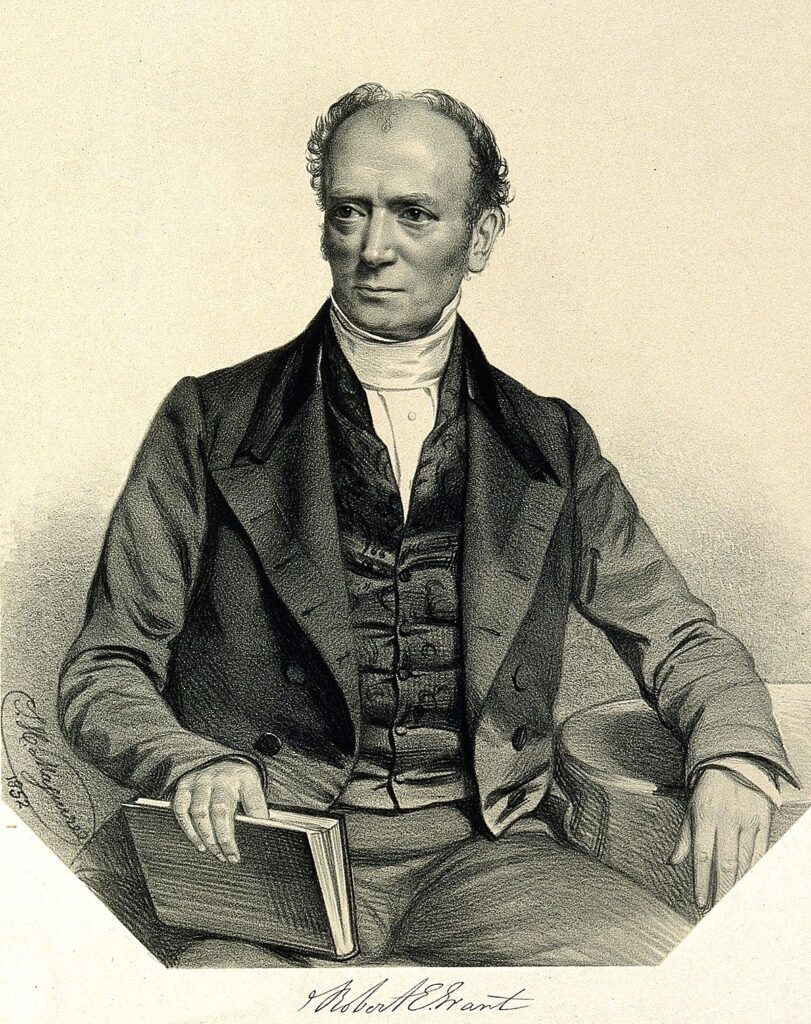
There then followed a whole slew of scientists, both pro-and anti-evolution, who were all working and writing in the late 1820s and1830s. Scottish zoologist and anatomist Robert Edmond Grant MD FRCPEd FRS FRSE FZS FGS (1793 —1874) was another who believed in a ladder of organisms of increasing, ascending complexity. He believed that very simple organisms he called “monads” formed continuously and spontaneously, pushing the more complex forms “above” them further up the ladder. Grant was a member of the Plinian Society, a club at Edinburgh University for student naturalists. In 1826 the young Charles Darwin, then a second-year medical student, joined the club and became an acolyte of Grant’s and helped with his researches on the “unity of plan” by which very different organisms share underlying similarities. But the relationship cooled after 1827, when Grant passed off some of Darwin’s work as his own. The same year, Grant became Professor of Comparative Anatomy at University College London, but he was forced out of a post at the Zoological Society of London by the prominent naturalist Richard Owen (of whom more anon), who opposed the very idea of evolution.
French naturalist Étienne Geoffroy Saint-Hilaire (1772—1844) was a friend and champion of Lamarck, and a deist who was opposed to Biblical literalism, and believed in a God who created the universe, but didn’t interfere in it. He believed in the transmutation of species and in a unifying underlying design of life, such as e.g. the similarities of vertebrate skeletons, (which we would now say is due to all life having a common ancestor and at least some shared genes) and was interested in the evolution of developmental processes.
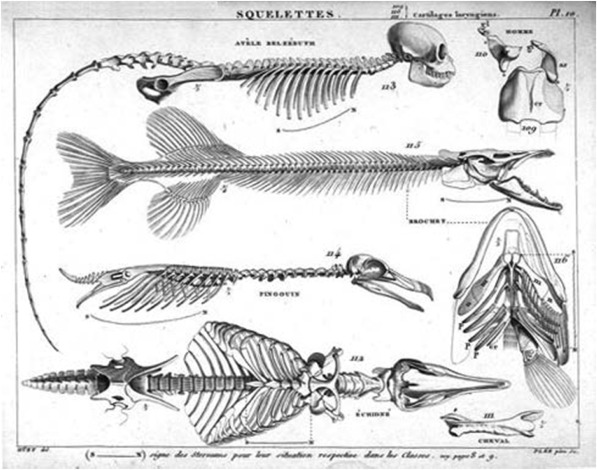
He didn’t understand common descent and adaptive radiation, but instead visualised change happening along different types, discrete lines of descent, and he believed that the environment itself in some way directly caused organic change, especially during embryological development (which is certainly true to a limited extent, as sex in some reptiles and teleost fish is determined by the temperature while the embryo is developing). He also believed in “saltation”, a sudden change in which “monstrosities could become the founding fathers (or mothers) of new species by instantaneous transition from one form to the next.” That would be evolution without natural selection, but we now know that although it’s far from the norm, this kind of on-the-spot speciation can occasionally happen due to a chromosome mutation or a hybridisation. For example the triploid, parthenogenetic marbled crayfish or marmorkrebs, Procambarus virginalis, was hatched in the mid 1990s from a single mutant egg of the slough crayfish, Procambarus fallax, and has since spread right round the world. In 1831 Geoffroy suggested, presciently, that birds could have arisen from reptiles by saltation.
In 1830—1833, Scottish geologist Sir Charles Lyell, 1st Baronet (1797—1875), published a multi-volume work on Principles of Geology, which followed on from Hutton’s work on geological dynamics. Lyell made a significant contribution to the later development of the theory of evolution, by taking geology away from the idea that the Earth was shaped only by a series of sharp catastrophes which might be literal Acts of God, and towards a “uniformitarian” approach, in which the planet was shaped by slow, constant forces such as volcanic activity, occurring cyclically over vast lengths of time (hundreds of millions of years, in his estimation, which we now think is out by a factor of ten) and similar to those we could observe in the present, and “no causes whatever have from the earliest time to which we can look back, to the present, ever acted, but those now acting, and that they never acted with different degrees of energy from that which they now exert.”
Our modern view, of course, is somewhere in between. The Earth proceeds on its way, affected steadily and routinely by the sort of natural forces Lyell envisaged, but is occasionally potted by asteroids or smothered by an unfortunate coincidence of major volcanic eruptions.
Some sources say that Lyell was himself opposed to the idea of evolution, and was even dubious about the idea that the fossil record showed a true progression, instead proposing that the distribution and diversity of species could be explained by there being different “Centres of Creation” where the creative power of God had been especially strong, but that seems to be a libellous misrepresentation of his views. It’s certainly true that he believed that the apparent mass extinctions seen in the fossil record were merely gaps due to periods when sedimentation became uncommon. However, a paper entitled “The other face of Lyell: historical biogeography in his Principles of geology” by A. Alfredo Bueno-Hernández and Jorge E. Llorente-Bousquets argues that Lyell in fact dismissed the idea of centres of creation as not being supported by any actual evidence, and was firmly of the opinion that species had a limited duration, and most eventually become extinct due to competition from other species, or to climate fluctuations. He was well aware that the spread of humans and their domesticated species had led to many extinctions.
Lyell was very interested in the distribution of species across the planet. He dismissed Agassiz’s polygenetic hypothesis, and argued that a species could arise only once, and if a species was found in widely different locations it must have started in one and then spread, although he felt that this happened only rarely. He understood how local competition could affect whether a species would take hold in a given area or not. He did propose that species were created, continuously, that “Each species may have had its origin in a single pair, or individual, where an individual was sufficient, and species may have been created in succession at such times and in such places as to enable them to multiply and endure for an appointed period, and occupy an appointed space on the globe”. He believed that these species appeared in a gradual and undirected way, and that this was a natural and not a theological process, but he didn’t propose a mechanism for it. He was adamant, however, at least initially, that one species could not adapt and morph into another in order to avoid the pressures which would otherwise cause it to go extinct, as Lamarck had proposed, so as far as that goes he was opposed to evolution, as well as to Creationism.
He was, however, to become a close friend of Charles Darwin in later life: and since he was a true scientist who wanted to get at the truth of the world, rather than to assert his own views over all, he encouraged Darwin’s work on natural selection whether he personally agreed with it or not.
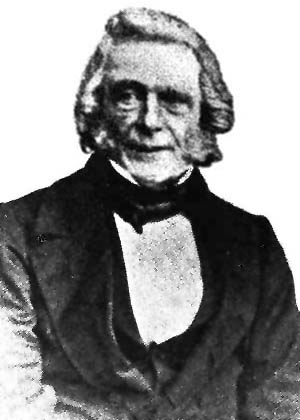
Now we come to Scottish landowner, grain merchant, fruit farmer, forester and Chartist Patrick Matthew (1790—1874), the man who perhaps more than anyone else arrived at natural selection and the mechanism of speciation and published an account if it before the 1850s, but thought it so self-evident that he dashed it off with a few paragraphs in an appendix to a book on commercial forestry. In 1831 he published his book On Naval Timber and Arboriculture, in an appendix to which he wrote of how a surplus of organisms would be worked on by natural selection (although he didn’t call it that), paring away those less fit to survive in that environment before they could reproduce:
THERE is a law universal in nature, tending to render every reproductive being the best possibly suited to its condition that its kind, or that organized matter, is susceptible of, which appears intended to model the physical and mental or instinctive powers, to their highest perfection, and to continue them so. This law sustains the lion in his strength, the hare in her swiftness, and the fox in his wiles. As Nature, in all her modifications of life, has a power of increase far beyond what is needed to supply the place of what falls by Time’s decay, those individuals who possess not the requisite strength, swiftness, hardihood, or cunning, fall prematurely without reproducing – either a prey to their natural devourers, or sinking under disease, generally induced by want of nourishment, their place being occupied by the more perfect of their own kind, who are pressing on the means of subsistence.
He understood how that selection pressure could end by producing new species, considering that this, rather than hybridisation, would be the more common route to speciation:
There is more beauty and unity of design in this continual balancing of life to circumstance, and greater conformity to those dispositions of nature which are manifest to us, than in total destruction and new creation. It is improbable that much of this diversification is owing to commixture of species nearly allied, all change by this appears very limited, and confined within the bounds of what is called species; the progeny of the same parents, under great differences of circumstance, might, in several generations, even become distinct species, incapable of co-reproduction.
Matthew was interested in the European settlement of New Zealand, and two of his sons moved there, as well as one living in America. In 1839, in a book called Emigration Fields, he applied the same logic of natural selection to humans. He understood that different ethnic groups were adapted to different climates, and thought that the British would therefore do best as emigrants if they settled in temperate zones. He also suggested that the stress of moving to a new environment would exert selection pressure on the settlers:
In the agitation which accompanies emigration, the ablest in mind and body – the most powerful varieties of the race will be thrown into their natural positions as leaders, impressing the stamp of their character on the people at large, and constituting the more reproductive part; while the feebler or more improvident varieties will generally sink under incidental hardship.
He differed from Darwin on several points, however, for he doesn’t seem to have got the idea of adaptive radiation and common ancestry, and he was a catastrophist who believed that new species only formed immediately after a mass extinction.
A particular conformity, each after its own kind, . . . no doubt exists to a considerable degree. This conformity has existed during the last 40 centuries. Geologists discover a like particular conformity – fossil species – through the deep deposition of each great epoch, but they also discover an almost complete difference to exist between the species or stamp of life on one epoch from that of every other.
Matthew was evidently interested in trees as aesthetic objects, not just for commerce: with the help of his son in America he was the first person to import Giant Redwood and Coastal Redwood saplings to Europe. His view of evolution was more spiritual than Darwin’s. In 1871 he wrote to Darwin that “a sentiment of beauty pervading Nature. . . affords evidence of intellect and benevolence in the scheme of Nature. This principle of beauty is clearly from design and cannot be accounted for by natural selection.” His spirituality wasn’t just mainstream Christianity, however, as according to local memory, in later life he believed that a female friend who had been “very dear to his heart” had been reincarnated as a bird, and wouldn’t allow blackbirds to be shot to protect his fruit trees, in case one of them was her. However, this tale was recorded in a book published 65 years after his death, and may have grown in the telling.
Because he was not a scientist, Matthew did not realise how important his ideas were, and probably couldn’t have got anyone to listen to him if he had, so his brilliance passed almost unnoticed. He was quite bitter about it, and after Darwin became famous for his very similar ideas, Matthew had “Discoverer of the Principle of Natural Selection” printed on his calling cards. Darwin himself hadn’t heard of Matthew until after publishing his own work, owing to the obscure way Matthew’s theory had been published, but he freely acknowledged that Matthew had anticipated many of his own ideas, without developing them as fully.
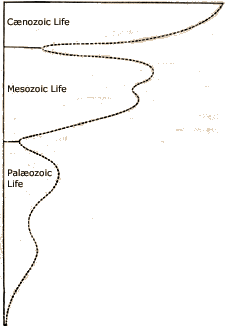
The idea of Deep Time was coming to be better understood. In 1841, English geologist John Phillips FRS (1800—1874) named three major geological eras since the dawn of multicellular life, based on the dominant fossil fauna found in rocks from the period. The Palaeozoic or “ancient life” encompassed what we would now call the Cambrian, Ordovician, Silurian, Devonian, Carboniferous and Permian eras, and was dominated by marine invertebrates and fish. The Mesozoic or “middle life” period encompassed the Triassic, Jurassic and Cretaceous and was dominated by what at the time were seen as reptiles. Nowadays it’s simpler to say “sauropsids and early synapsids”, since we no longer think of the so-called “mammal-like reptiles” as reptiles at all, and whether dinosaurs were/are reptiles is a matter of definition. The third epoch, the Cenozoic or “recent life”, covered everything from the end of the Cretaceous up to the present.
Even very conservative geologists such as English geologist and Anglican priest Adam Sedgwick (1785—1873) (who proposed the Cambrian and Devonian periods) and English geologist, palaeontologist, theologian and Dean of Westminster William Buckland DD FRS (1784—1856) (who wrote the first full description of a fossil dinosaur, Megalosaurus) now accepted that it was definitely true that the Earth was very very old and that fossils represented extinct creatures which had been replaced by newer ones. Like Cuvier they tended towards catastrophism, believing that there had been several mass extinctions followed by new divine Creations rather than evolution, and unlike Cuvier they tried to match the last mass extinction with the Biblical flood. Buckland, however, was intellectually honest and a true scientist, so when he saw that Agassiz‘s ideas about glaciation fitted the evidence better than his own ideas about the Great Flood, he switch to promoting Agassiz’s explanation. [Interestingly, they may both have been right, since it’s possible that the Great Flood stories were inspired by the rise in sea levels all round the world at the end of the last Ice Age.]
Swiss-born American biologist and geologist Jean Louis Rodolphe Agassiz FRS (For) FRSE (1807—1873) was an expert naturalist but a Creationist and an opponent of evolution. who saw species as fixed, unchanging representations of an idea in the mind of the Creator. Like Zimmerman he believed they were where they were because they had been created exactly at the locations in which they were now found (which btw suggests that by that point, not even the most ardent Creationists believed that the Noah’s Ark story was literally true, since that would require all present species to have migrated there from the Middle East).
As often happens, Agassiz’s Creationism was mingled with racism. He was a promoter of the concept of human polygenism – that is, the idea that humans were not one species with a single origin, but that different races were created separately – presumably because he assumed that the different human ethnicities had also been generated in situ. It’s only to be expected that this idea came from somebody living in the US during the slavery era (he moved there in 1847). If you at least pretend to base your society on the idea that all men are created equal and entitled to life, liberty and the pursuit of happiness, but then you want to enslave your non-white neighbours or drive them out of their lands, you have to think up some excuse for why people who are browner than you aren’t really human.
1844 saw the publication by the Scottish publisher Robert Chambers (1802—1871) of an anonymous book entitled Vestiges of the Natural History of Creation. Only after his death did it emerge that Chambers, a geologist, was himself the author. The contents description for this at-the-time controversial book runs as follows:
The bodies of space, their arrangements and formation – Constituent materials of the earth and of the other bodies of space – The earth formed: era of the primary rocks – Commencement of organic life: sea plants, corals, etc. – Era of the old red sandstone: fishes abundant – Secondary rocks; era of the carboniferous formation; land formed; commencement of land plants – Era of the new red sandstone; terrestrial zoology commences with reptiles; first traces of birds – Era of the oolite; commencement of mammalia – Era of the cretaceous formation – Era of the tertiary formation: mammalia abundant – Era of the superficial formations: commencement of present species – General considerations respecting the origin of the animated tribes – Particular considerations respecting the origin of the animated tribes – Hypothesis of the development of the vegetable and animal kingdoms – MacLeay system of animated nature; this system considered in connexion with the progress of organic creation, and as indicating the natural status of man – Early history of mankind – Mental constitution of animals – Purpose and general condition of the animated creation – Note conclusory.
The MacLeay referred to is probably Scottish taxonomist Alexander MacLeay MLC FLS FRS (1767—1848), a leading member of the Linnean Society and a world-renowned collector and classifier of insects.
Vestiges discussed the natural, physics-driven origins of the Solar System and the evolution of life, but followed the now thoroughly outmoded idea that man was some kind of goal of evolution, with first fish, then reptiles, then birds branching off a line that led to mammals, and culminated in Man. Chambers saw this as a process preordained by God, with the very laws of the universe set up in such a way as to produce humankind: but even that was considered controversial in some circles, since it meant man was the pinnacle of animal evolution rather than something sacred and sui generis. The book was a weird combination of serious scientific speculation and tabloid clickbait, with wild stories about six-fingered humans (real but irrelevant), insects born from electricity and a duck-billed platypus hatched from an egg laid by a goose (definitely not real). According to Bill Bailey, who made a BBC documentary called Jungle Hero about Alfred Russel Wallace, Queen Victoria herself was a fan of the book, and liked to have her husband Prince Albert read passages to her.

Like his predecessor de Candolle, English botanist and Dean The Hon. and Very Rev. William Herbert FHS (1778—1847) wrote about the struggle for existence among plants. His views on the subject can be read in a paper entitled Local Habitation and Wants of Plants, which appeared in the Journal of the Horticultural Society of London, 1 (1846), 44–49. His observation, detailed in this article, was that there were some plants which thrived in rich soil provided they were tended and weeded by humans, but which in the wild were only found as meagre specimens struggling to survive in areas of dry, poor soil. His surmise was that without human protection, if they attempted to take root in rich soil in the wild they would be out-competed and killed off by more vigorous plants, but they survived in sparse, unpromising areas because they could and their competitors could not.
The richest soils, if well moistened, will necessarily be occupied by the vegetables which grow most rapidly, and with such spreading and persistent foliage as to prevent slower but more robust rivals from gradually supplanting them ; but that which has sufficient powers of endurance to struggle through, will become the ultimate lord of the forest. . . . In each successive grade of inferior fertility the like struggle must be maintained, and the power of endurance must finally determine which shall be the occupants of each several position . . .
An expert on plant hybridisation, he also showed some understanding of natural selection when he wrote that winter hardiness might become established in hybrid varieties as a result of the survival of chance variations.
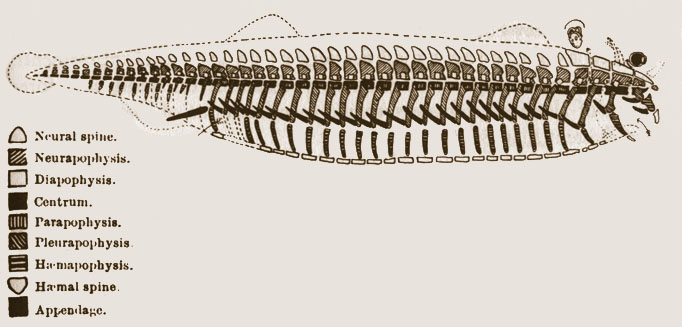
English palaeontologist and comparative anatomist Sir Richard Owen KCB FRMS FRS (1804—1892) was another like Agassiz who opposed evolution and believed that species were fixed, unchanging ideas in the mind of the Creator, and he successfully campaigned to marginalise Robert Edmond Grant and his monads. He and Agassiz both believed that patterns in embryological development and the fossil record showed relationships between species, but that these relationships represented not evolution, but a pattern of divine thought, leading to progressive creation and increasing complexity. Owen recognised that groups of organisms were linked by anatomical homologies (body parts with a shared origin), such as vertebrate limbs, but saw these as springing from archetypes in the Divine mind. Judging from his idea for a vertebrate archetype, these archetypes were very much like what we would now call phyla, each with its own distinctive body plan.
Agassiz’s ideas of multiple localised creations and the discrete origins of human ethnic groups were not generally popular, even amongst those opposed to the idea of evolution, but they were supported by British ornithologist Phillip Lutley Sclater (1829—1913), who stated in 1858:
But I suppose few philosophical zoologists, who have paid attention to the general laws of the distribution of organic life, would now-a-days deny that, as a general rule, every species of animal must have been created within and over the geographic area which it now occupies. . .and the awkward necessity of supposing the introduction of the red man into America by Behring’s Straits, and of colonizing Polynesia by stray pairs of Malays floating over the water like cocoa-nuts, and all similar hypotheses, would be avoided. . .
But Sclater and his implicit racism were already outmoded when he wrote that, and about to be given their death-blow.
The theory of evolution comes together
So, by the mid 19thC, and despite Agassiz and Sclater, it was well-known and accepted that the planet was very, very old – although there were still debates about the maximum possible age of the sun, which wouldn’t be settled until the 20thC. It was accepted that there had been successive waves of sets of flora and fauna which arose, flourished, died off and were replaced, but there was disagreement as to whether these waves represented transmutation of one lot of species into others, or whether they were separate, on-the-spot creations generated either by a god or by some unknown natural force. The Natural Theology movement held that species were designed by God to be perfect for their environment, and were discrete, hard-edged and unchanging, but if the environment itself changed (as geology had proved often happened) and the species went extinct God would make a new, slightly different version to fit the new environment. But even among those who rejected the idea of any divine intervention and saw the world as a purely physical mechanism, there was still doubt about whether new species arose by transmutation from old ones, or by some kind of natural on-the-spot creation.
If the new species arose through transmutations, there was further disagreement as to whether this happened continuously, or only for brief periods after a mass extinction, but naturalists were beginning to understand how competition could have an effect similar to selective breeding by humans. If species arose from other species by transmutation – what we would later come to call evolution – there were two main competing conceptual diagrams of how this was structured: either as a ladder leading inexorably from “lower” to “higher” species by way of increasing complexity; or as a series of separate, parallel, disconnected lines of descent from multiple separate ancestors.
The idea of applying either schema to humans was still met with unease, even though taxonomists had long understood that humans were primates. However, the fact that human ethnic groups were all different varieties of one species was fairly well-established, and so was the idea of competition as a factor in shaping ecosystems. At least three researchers, Matthew, Wells and Sebright, had already come up with a basic idea of natural selection, but their work had sunk without trace and was almost completely unknown.
The time was ripe for the two greatest 19thC theorists of evolution, both British: Englishman Charles Robert Darwin FRS FRGS FLS FZS (1809—1882), and Alfred Russel Wallace OM FRS (1823—1913), who was either English or Welsh depending on how you look at it: both at work simultaneously but largely discretely. Their complete writings can be read at Darwin Online and Wallace Online.
Charles Robert Darwin
Darwin got started earlier than Wallace – as you would expect given that he was 14 years older. Born in Shrewsbury to a comfortably-off upper middle class medical family, Darwin was the grandson of two ardent campaigners against slavery, Erasmus Darwin and Josiah Wedgwood (although both had died before he was born). He began his researches as a medical student at Edinburgh University (my own alma mater), where he joined the Plinean Society for student naturalists in 1826 (as a second-year student, so he must have started at university when he was 16), and neglected medicine in favour of studying marine invertebrates,
He found the lectures dull and surgery upsetting: this must have been due to the lack, at that time, of any general anaesthesia, rather than to squeamishness, as he voluntarily learned taxidermy from John Edmonstone (c. 1793—?), a black former slave of whom Darwin said “He gave me lessons for payment, and I used often to sit with him, for he was a very pleasant and intelligent man.” Edmonstone had accompanied the English naturalist, plantation owner, explorer and conservationist Charles Waterton (1782—1865) on his travels in the South American rainforest as Waterton’s slave, and had then been automatically freed when he accompanied his master to Scotland.
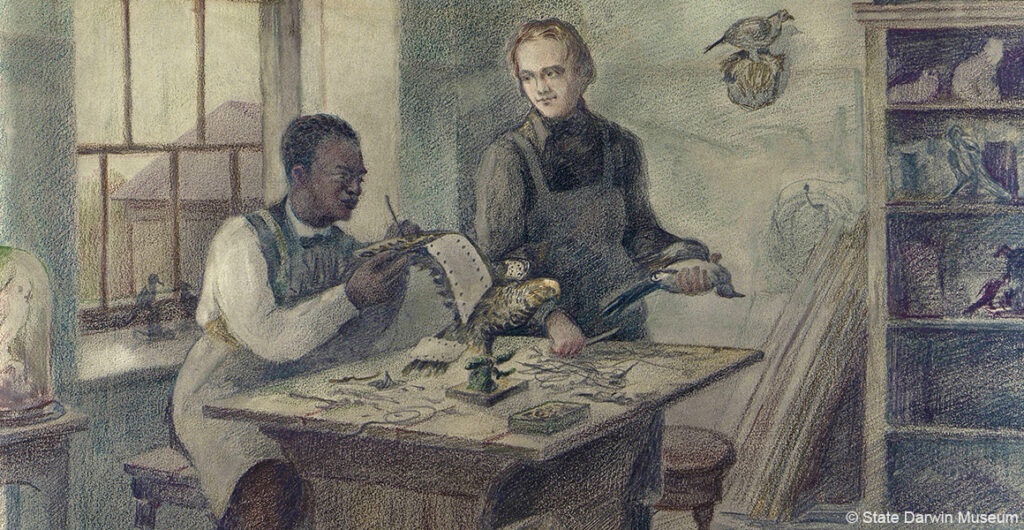
[Darwin’s background should in itself go a long way to scotching the Creationist argument that he was a racist, at least by Victorian standards. African slaves were the people his family fought to free, and who taught him at university.]
As a member of the Plinean Society Darwin was influenced by Robert Grant, who was in his 30s and probably already thinking of ascending ladders and monads. They fell out the following year, 1827, after Grant passed some of Darwin’s research into the parasites of oysters off as his own, but evidently stayed in touch.
Darwin quit Edinburgh in 1827, without graduating. After his failure as a medical student, his family sent him to Christ’s College Cambridge to train as a country parson. Still only 18, he must have killed time for a year, because he applied to the college in autumn 1827, but actually attended it for three years from 1828 to 1831. Darwin was quite keen on Christian theology at university but again, his main interest was invertebrate biology. He became friends with one of his tutors, the botanist, geologist and priest John Stevens Henslow (1796—1861), who encouraged his interest in natural history. Young Charles moved from interest in William Paley’s straight-up Christian theology to his Natural Theology or Evidences of the Existence and Attributes of the Deity. This, you may remember, was a work written as a rebuttal of Darwin’s grandfather Erasmus, and portrayed adaptation as directly ordained and guided by God.
In summer 1831, Henslow was asked to sail with the scientific survey vessel HMS Beagle under Captain Robert FitzRoy as resident naturalist for a two-year voyage round South America (a position described as self-funded and as being for a gentleman rather than “a mere collector”), but his wife persuaded him to turn it down. Instead, he recommended Darwin for the post. Darwin, now 22 and having evidently abandoned both medicine and the life of a clergyman, had already conceived a “burning zeal” to contribute to science’s understanding of the rules of nature, and to do so by travelling to the tropics, so this offer was ideally suited to his interests.
Darwin’s father initially saw the voyage as a waste of time but was persuaded by Josiah Wedgewood II, the brother of Darwin’s mother, to fund his son’s trip. Young Charles made sure he was going as a private citizen, so he could retain ownership of whatever he collected. Before setting out, he visited his old friend and rival Robert Grant in London to ask his advice on storing specimens during his upcoming voyage.
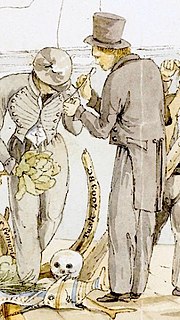
The Beagle set sail from Devonport in late December 1831. A complete itinerary of the voyage can be found here. In the event, the voyage lasted nearly five years, during which Darwin read Lyell on the slow unfurling of geological change. From Plymouth the Beagle sailed to Cape Verde, off the coast of Mauretania, then to Fernando Noronha off the coast of Brazil, thence to mainland Brazil in late February 1832, where Darwin spent early April to late June exploring on land. From Brazil, they sailed down the east side of South America to Uruguay and then to Argentina in September 1832. Then it was back to Uruguay, then to Argentina again and to Patagonia, then to Cape Horn and Tierra del Fuego at the far southern end of South America at the New Year, with Darwin spending three weeks on land from mid January 1833.
At the end of February 1833 they sailed to the Falklands, then back to Patagonia and Uruguay where Darwin left the ship at the end of April and travelled inland for two months. From there they sailed to the Rio Negro in Argentina, where Darwin went inland in early August and travelled through Argentina and back to Uruguay for four months, then by ship from Uruguay back to Argentina.
From there they sailed to the Straits of Magellan, between Chile and the north side of Tiera del Fuego, then back through the Straits to the Falkland Islands, arriving in March 1834. Back to Argentina, back along the north side of Tierra del Fuego and up the coast of Chile, with Darwin spending August, September and October and the second half of November 1834 travelling through Chile overland. Darwin went ashore again in mid March 1835 and travelled across Chile and part of Argentina, rejoining the ship again in Chile in early July.
From Chile they sailed to Peru, then west to the Galapagos Islands, where they arrived in mid September 1835 and stayed for a month, with Darwin making excursions inland. From there they sailed to Polynesia, thence to New Zealand where they arrived in mid December 1835. They arrived in Sydney, Australia in mid January 1836, where Darwin spent a couple of weeks inland From Sydney they sailed to Tasmania and along the south side of Australia, up through the Indian Ocean via the Cocos (Keeling) Islands on 1st April 1836, then via Mauritius to Cape Town, where Darwin again spent two weeks inland. From South Africa they sailed to St Helena, then Ascension Island, back to Brazil in August 1836 and from there to the Azores and back to England, with Darwin leaving the ship at Falmouth on 2nd October.
While the Beagle charted and surveyed coastlines, Darwin studied local geology and natural history, both at sea and on land, periodically posting his specimens back to Cambridge University and letters and copies of his latest journal entries to his family and to Henslow. He was delighted with the tropical rainforest he saw in Brazil, but disgusted by the slavery he also saw there, and fought with FitzRoy over it. He stated in his journal that the black slaves he met were clearly superior in character and physique to their Portuguese masters.
At Bahia Blanca in Patagonia, Darwin went riding into the interior with the gauchos to collect fossils and study geology and the local cultures, both settler and native, and observed two different species of rhea with overlapping territories. In February 1835 he witnessed a major earthquake in Chile, of which he reported that “An earthquake like this at once destroys the oldest associations; the world, the very emblem of all that is solid, moves beneath our feet like a crust over a fluid; one second of time conveys to the mind a strange idea of insecurity, which hours of reflection would never create.” He was able to measure the slight rise in the coastline which resulted (see What 1835 Chile quake taught Darwin by John van Wyhe). Inland, he saw stepped plains of seashells and shingle which he interpreted as beaches raised by similar quakes in small increments, supporting Lyell’s ideas about slow geological change.
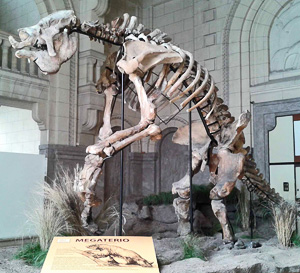
He also made major fossil discoveries which demonstrated that a recent extinction had occurred without any obvious climate change. They included the jaw of the giant ground sloth Megatherium, and a section of body armour which he wrongly thought, based on Owen’s description of the ground sloth (which did have little bony nodules in its skin) might be from the same animal, but actually came from a giant armadillo. He was still broadly following Lyell’s ideas, but beginning to disagree with some of his conclusions.
In Tierra del Fuego, we see the extent to which Darwin was or was not racist demonstrated. He described the natives he met there as “miserable, degraded savages”, but had no issues with three Fuegan shipmates who were returning home after an involuntary trip to Europe and an English education, and whom he considered friendly and civilised. That fits with his later attitudes: like most Victorian Englishmen he had some prejudices against “native” cultures and felt that (as Flanders and Swann would later put it) “The English are moral, the English are good // And clever and modest and misunderstood”. But this prejudice was primarily cultural, not racial, and anyone with an English (or British) education and a three-piece suit was the king of the Earth. He was certain that all human groups had a common origin and were capable of being “civilised”, while at the same time coming to see that man was an animal among animals and having, as we will later see, some genuine prejudices against “primitives”.
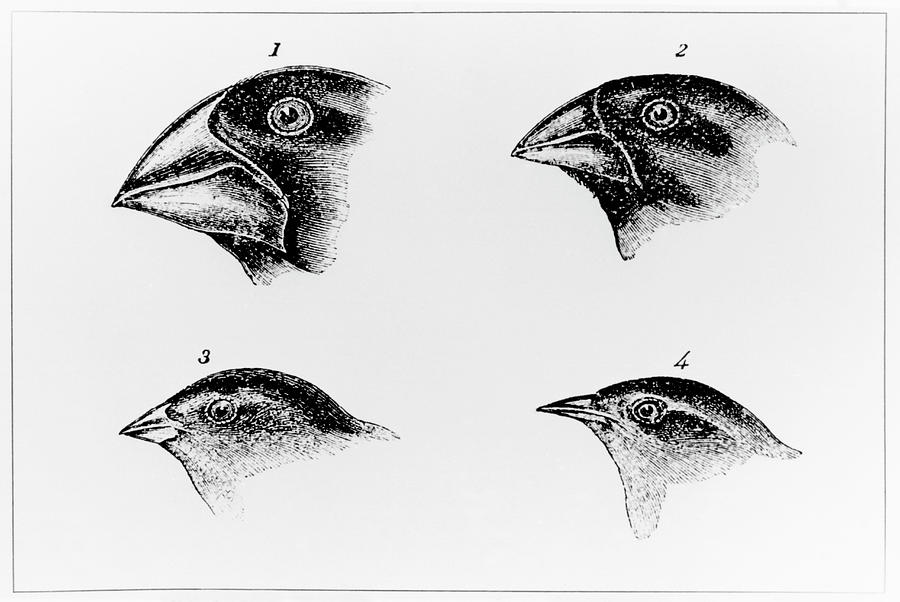
In the geologically recent Galapagos Islands, about 500 miles west of the coast of Ecuador, Darwin observed how the birds were similar to those in Chile, yet each island had its own slightly different form of small bird, and of giant tortoise. At this point he was still wondering about “centres of creation” as a source for bursts of new species, but was boggled by the wildlife of Australia, most of which was so different from that of the rest of the world that it almost seemed, he wrote, as if they had two different Creators. [The infraclass Marsupialia, however, can hardly have been new to him, as there are more than 120 species of opossum in the Americas, and all but one of them live in South or Central America.] Again, rather than reacting to them with prejudice, he found the Australian Aborigines whom he met to be “good-humoured and pleasant”.
All this time, unbeknownst to Darwin, Henslow had been publishing his letters in various learned journals. It wasn’t until very late in the voyage, at Ascension Island, that he learned that his discoveries and observations were being widely celebrated, and that Adam Sedgwick had predicted that he would have “a great name among the Naturalists of Europe”,
In October 1836, the Beagle landed back in England, and Darwin rushed to Cambridge to see Henslow. He now began a career as a gentleman-scientist, supported by his father, and toured the London institutions being lionised by all, and looking for someone who could catalogue his specimens. At the end of the month he met Charles Lyell in person, and Lyell introduced him to Richard Owen, who was very interested in Darwin’s fossil specimens.

Darwin initially settled in Cambridge, where he began to prepare his work for publication and look for someone to catalogue his specimens. Early in 1837, however, he moved back to London to hang around with Charles Lyell and his friends, who included Charles Babbage (1791—1871), the designer of the first computer. Darwin stayed with his brother Erasmus Alvey Darwin (1804—1881), known as Eras or Ras, who was part of a trendy Whig set which included Erasmus’s close friend Harriet Martineau (1802—1875).
Martineau was a sociologist, political theorist, Unitarian and feminist who promoted Malthusian ideas about the need for population control, and the Whig Poor Law reforms. This means that although the claim often made by Creationists that Darwin is to blame for the eugenics movement is false – the eugenics movement being diametrically opposed to natural selection – he was at least peripherally involved with the Whig movement which encouraged punitive treatment of the poor in an effort to prevent them from over-breeding.
While Darwin was at sea, the English polymath Sir John Frederick William Herschel, 1st Baronet KH FRS (1792—1871) had written to Lyell expressing the hope that Lyell’s practical, analytical approach would lead to a natural explanation for the formation of new species. The idea of the transmutation of one species to another was being openly discussed by Robert Grant and by younger surgeons influenced Étienne Geoffroy Saint-Hilaire.
Around this time, the ornithologist John Gould (1804—1881), who had been examining Darwin’s specimens, informed him that the small birds which Darwin had collected in the Galapagos Islands, and which he had assumed were of different types, were in fact all finches – but finches with a wild range of styles of beak. By referring to his notes and those of his shipmates, Darwin worked out which birds came from which island, and by mid March 1837 he was beginning to speculate that “one species does change into another”. In May he presented a paper to the Geological Society on his ideas about how coral atolls formed by the corals continuously building upwards to maintain their position relative to the surface as the sea floor under them subsided.
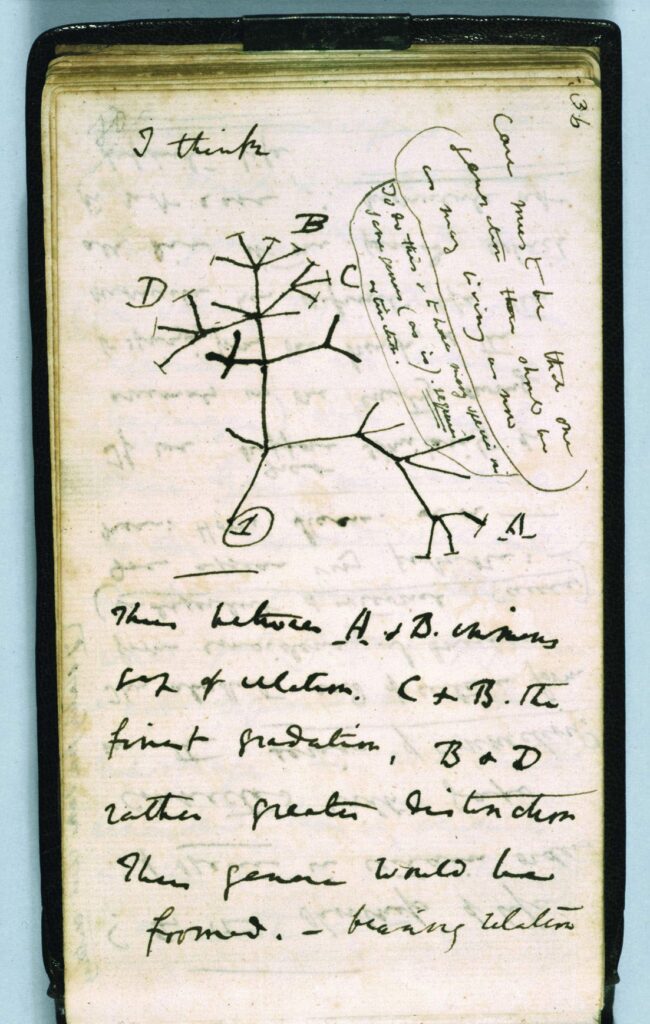
By mid July 1837, a few weeks after Victoria became queen of the British Empire, Darwin was getting the idea of adaptive radiation, whereby one species of finch would have settled in the Galapagos Islands and then spread out and split into different forms adapted to each island. In his “B” notebook, he drew up a notional tree of relationships and discarded Lamarck’s idea of an ascending order of being within separate, parallel lines, saying that “It is absurd to talk of one animal being higher than another”.
Ironically, the ladder-like relationships visualised by some earlier thinkers now have renewed traction, in a slightly different form. We know now that species rarely split off in a clean Y-shaped fork, as Darwin thought of it, but remain able to interbreed, with slowly reducing success and slowly reducing fertility of their hybrids, for many generations. A true diagram would look more like the tangled skein of streams which make up parts of the Upper Nile, parting and rejoining and parting again.
Still, along with natural selection, adaptive radiation was probably Darwin’s greatest contributions to science. He wasn’t the first to think of these things, but he was the first to really put them together, work out the implications and set them out in a fully developed form, with evidence.
Darwin proceeded to work himself into the ground, damaging his health, all while becoming Secretary of the Geological Society and beginning an entirely separate study on the role of earthworms in soil health. In March 1838 he presented a paper entitled On the Connexion of certain Volcanic Phenomena in South America; and on the Formation of Mountain Chains and Volcanos, as the Effect of the same Power by which Continents are elevated, in which he speculated on his observations of the earthquake he had experienced in Chile, and what subterranean forces might explain earthquakes, volcanoes and vertical movements of the Earth’s crust. With great prescience, he speculated that “this large portion of the earth’s crust floats . . . on a sea of molten rock”, and that it was likely this was true of “the entire globe.”
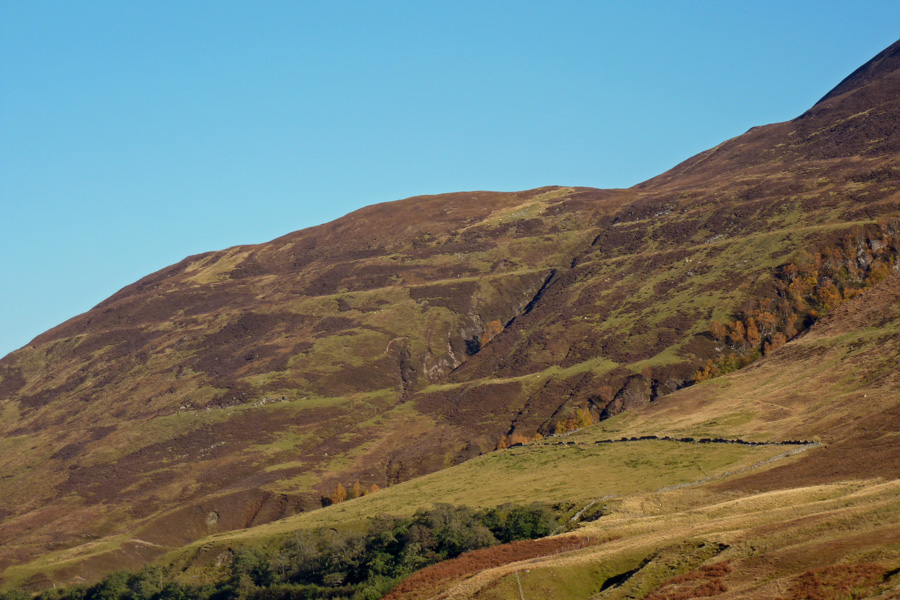
By June 1838 he was very run down and having what sounds like a full-bore nervous collapse, with symptoms of nausea, boils, shakes etc which would continue to plague him whenever he was stressed. He went on a working holiday in Scotland, where he observed parallel “roads” in the sides of Glen Roy which he initially thought were raised marine beaches, just like the ones he had seen in Patagonia. Eventually, however, he accepted that they were the changing shorelines of a freshwater proglacial lake.
On his return from Scotland, he listed the advantages and disadvantages of marriage. The advantages included “constant companion and a friend in old age . . . better than a dog anyhow”, and the disadvantages “less money for books” and “terrible loss of time”. The advantages won, so he visited his cousin Emma Wedgwood (1808—1896), but sidetracked himself, forgot to propose and instead spent the visit talking about the transmutation of species.
His brain was evidently fizzing with the beginnings of his ideas about natural selection. He was heavily influenced by the theories of Malthus and de Candolle about competition (and invited de Candolle to dinner to discuss his ideas when de Candolle visited Britain in 1839). As he later wrote:
In October 1838, that is, fifteen months after I had begun my systematic enquiry, I happened to read for amusement Malthus on Population, and being well prepared to appreciate the struggle for existence which everywhere goes on from long-continued observation of the habits of animals and plants, it at once struck me that under these circumstances favourable variations would tend to be preserved, and unfavourable ones to be destroyed. The result of this would be the formation of new species. Here, then, I had at last got a theory by which to work. . .
He was also interested in Sebright’s ideas about selection pressure mimicking the effects of human-led selective breeding programmes. Unusually for his time he was no snob, and consulted with farmers and with pigeon-fanciers such as English naturalist William Barhardt Tegetmeier (1816—1912), as well as with fellow scientists unconnected with pigeons. He took to breeding fancy pigeons himself, studying how different crosses of colour, leg- and beak-length turned out. It was from this comparison with artificial, human-guided selection that he derived the term “natural selection”.

Frustratingly, however, he did not learn of the quite similar ideas of Dr William Charles Wells or Patrick Matthew on natural selection until long after he had come by the same concept independently (and when he did, he was a bit sniffy about the idea that anyone might expect him to have come across an obscure appendix in a work on commercial arboriculture). But like Wells, he included humans in his schema for speciation from the outset, observing an orangutan in London Zoo and noting how closely its behaviour resembled that of a human child.
At the end of 1838 Darwin found a family home in London, which he dubbed Macaw Cottage because the interiors were painted in bright colours. In January 1839, he became a Fellow of the Royal Society. Five days later, he and Emma were married, despite her concerns that his iconoclastic views would separate them in the afterlife. They were to have ten children, of whom seven survived to adulthood, and despite Darwin’s earlier very unromantic assessment of the joys of marriage (“better than a dog anyhow”) their union seems to have been successful and happy.

For the next 14 years, Darwin concentrated on geology, but in the background he carried out experimental breeding of plants and animals, testing his ideas about transmutation, and continued to correspond with Lyell about it. In 1842 he published The Structure and Distribution of Coral Reefs, a book about his thoughts on atoll formation, and then began writing down his ideas about natural selection, and the family moved to Down House in Kent. In January 1844, Darwin mentioned his ideas about natural selection to the botanist Joseph Dalton Hooker (1817—1911), declaring that “it is like confessing a murder”. Hooker replied “There may in my opinion have been a series of productions on different spots, & also a gradual change of species. I shall be delighted to hear how you think that this change may have taken place, as no presently conceived opinions satisfy me on the subject.” Hooker, that is, was suggesting that there had been Centres of Creation and transmutation.
By July 1844 Darwin had completed a 230-page essay on his ideas about natural selection, formatted so that if he were to die, someone else would be able to expand it by incorporating his research. He clearly realised that he was on to something important (unlike poor Patrick Matthew). In November the anonymous Vestiges of the Natural History of Creation was published, and although Darwin considered it very amateurish, the controversy which greeted it was a sign that this was now a hot topic.
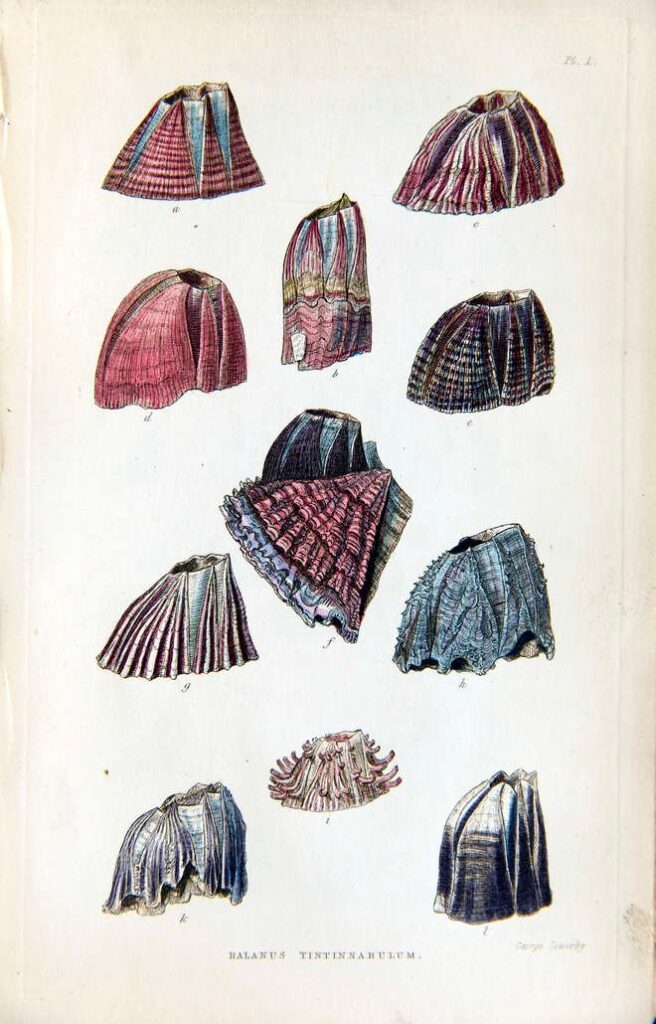
In 1846, Darwin published his third book on geology, and then returned to his true love, marine invertebrates, by studying the specimens of tropical barnacles which he had collected during his voyage. In 1847 Hooker read his essay on natural selection and provided sensible feedback, but was still wedded to the idea of continuing creation. Darwin continued to be in poor health: one wonders if he had contracted some unpleasant tropical disease (as if there were any pleasant ones) during his voyage, but the death of his beloved ten-year-old daughter Annie in 1851 made him fear the problem was inherited. Just as he was working out his ideas about “favoured races”, by which he meant healthy bloodlines (or whatever cabbages have instead), he was coming to fear that his own line was afflicted and unfit. His religious faith, which had already been on the wane, was destroyed by Annie’s death.
Darwin worked on his barnacles for eight years, finding examples of homologues, where what had clearly started as the same body part had been repurposed to do different jobs. In some genera he found tiny single-sex males living as parasites on larger, hermaphrodite members of the same species, demonstrating an intermediate stage in the development of separate sexes. In 1853 he won the Royal Society’s Royal Medal for this work, and the following year he became a Fellow of the Linnean Society of London. In November that year, now a thoroughly established scientific heavyweight, he realised that divergence between the descendants of a common ancestor could be explained by their adapting to “diversified places in the economy of nature”.
By the start of 1856, Darwin was researching whether the eggs and milt of marine species could diffuse through seawater to carry those species to new locations, and his friend Hooker was coming round to his way of thinking about transmutation, although some others in their circle remained unconvinced. It was at this point that Lyell saw a paper On the Law which has Regulated the Introduction of New Species by Alfred Russel Wallace, and urged Darwin to publish his ideas and establish precedence before Wallace could get ahead of him.
Alfred Russell Wallace
Wallace had been born in Monmouthshire in 1823. At that time, Monmouthshire was in an ambiguous position. considered to be part of England for some purposes and of Wales for others, but Wallace himself was English on his mother’s side and probably Scottish on his father’s, and in any case the family moved to Hertford when he was five, and he thought of himself as English. The family were middle-class minor landowners but strapped for cash, as his father was a failed lawyer, failed businessman and failed investor, so young Alfred had to leave school at 14, in 1837, the same year that Darwin was starting to work out his ideas on adaptive radiation.
Alfred then went to London to board with his next-older brother John, who was 19 and an apprentice builder. There, he attended the London Mechanics Institute (now Birkbeck College), where he was exposed to radical political ideas about social reform (just as Darwin, also in London, was hanging out with the Whig crowd and starting to think about the adaptive radiation of little birds). Later that year he went to work for his oldest brother William for six years as an apprentice surveyor. In late 1839 they moved to Herefordshire, and thence to Neath in Wales. From 1840 to 1843 Alfred did land surveying either side of the Welsh border, but by the end of 1843 William’s business was failing and Alfred, now 20, left it in January 1844.
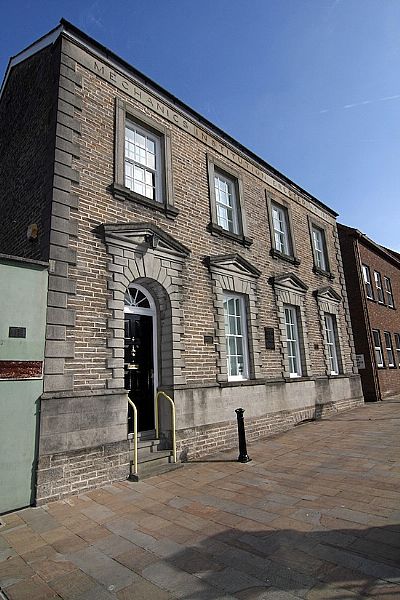
Alfred then became a schoolmaster at the Collegiate School in Leicester, where he taught drawing, mapmaking and surveying. In Leicester he started to read Malthus and became friends with the entomologist Henry Walter Bates (1825—1892), who was slightly younger than himself, and who got Alfred into collecting beetles. After his brother William died in March 1845 Alfred took over his business, but he and John were unable to make it pay and Alfred instead went to work as a civil engineer for another nearby firm for a while, after which he and John started a new architecture and civil engineering firm, which did rather better. They designed a new building for the Neath Mechanics’ Institute, after which Alfred was invited to lecture there on science and engineering.
However, young Wallace, now in his mid 20s, maintained his interest in insects and general natural history and continued to correspond with Bates about their thoughts on Vestiges and the works of Darwin and Lyell. In 1848 he and Bates sailed for Brazil on a ship called the Mischief. Unlike the young Darwin, Wallace was commencing his career as a naturalist already well convinced that the transmutation of species was probably real, and wishing to find evidence for it. At this time, interesting and brightly-coloured dead insects and birds were fashionable as interior design and hat accessories, so Wallace and Bates planned to explore the Amazon rainforest, and collect enough specimens to be able to fund themselves by selling the surplus to museums and collectors.
The two men worked together in the Amazon for most of 1848, then split up, meeting periodically to discuss their findings. In 1849 they were briefly joined by the botanist Richard Spruce (1817—1893) and by Wallace’s younger brother Herbert (who died two years later of yellow fever). Wallace remained in the Amazon, charting the Rio Negro, until 1852, making notes on the people, geography and wildlife, and deeply impressed by the beauty and variety he found there. In mid July 1852 he sailed for the UK on the brig Helen, but 25 days later, in early August, her cargo caught fire and the crew had to abandon ship. Wallace lost two years’ worth of specimens, but managed to save a few notes and pencil sketches. Wallace and the crew spent 10 days in an open boat before being picked up by the brig Jordeson, which was heading for London. They landed back in the UK on 1st October after six weeks on sparse, shared rations. Forever after Wallace hated travelling by boat.
Fortunately, some of his earlier specimens had made it back to London, and he had insurance on what he’d lost. He spent 18 months in London, living on the insurance and the proceeds of selling spare specimens, during which he wrote six papers and two books on his discoveries (despite having lost most of his notes: evidently he had a good memory) and built up connections with other British naturalists. During his time in the Amazon he had noted that separate but closely similar species were often to be found either side of a physical barrier such as a river. In 1853, he published a paper On the Monkeys of the Amazon, in which he posed the question “Are very closely allied species ever separated by a wide interval of country?”
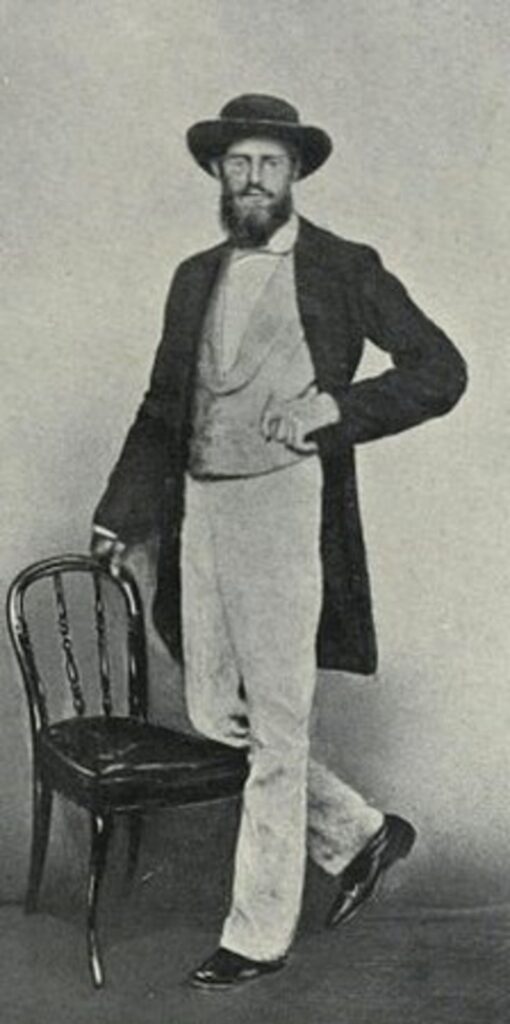
In March 1854, Wallace sailed for the Malay Archipelago (now Singapore, Malaysia and Indonesia) on the Euxine, travelling partly overland via Egypt, then sailing via Penang to Singapore, arriving in mid April. At the time, this was an area which was very little explored. It was known that Birds of Paradise – which were incredibly valuable, at least dead – came from the area, but no European had ever seen a live one. It was both an area where a naturalist could make his name, and one where a commercial exporter of dead wildlife could make, if not a fortune, at least enough to live on, and Wallace was to stay there for eight years, funding himself by selling specimens, despite the risk from man-eating tigers, hostile natives (some of them head-hunters) and malaria. Local Singaporean legend had it that the tigers killed one human every day, although in truth it was more like one a fortnight. Wallace spent three months in Singapore, followed by two months in Malacca, then returned to Singapore for three weeks, before arriving in Sarawak, Borneo in late October 1854.
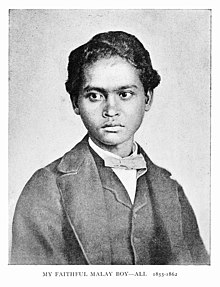
Bill Bailey’s portrayal of Wallace as a lone operator in his BBC documentary series Jungle Hero is somewhat misleading. Wallace hired (at least according to Wiki) up to 1,200 people during his travels in the Malay Archipelago including around 100 assistants, most notably a young Londoner named Charles Martin Allen (1839—1892) who had sailed from England with him and was to be his collecting assistant, remaining with him until 1860, and a Malaysian youth named Buang Ali (1840—1907), who later called himself “Ali Wallace”. Ali started out as Wallace’s personal servant, described as “attentive and clean” and a good cook and boatman, and helped him to learn Malay. But he later became a collector in his own right, and some of the specimens and observations attributed to Wallace came to him from Ali. As far as doing the job mob-handed goes, the big difference between Wallace and Darwin was that Wallace had to arrange and hire his own support, whereas Darwin’s was provided by a government ship.
Wallace could have bought plenty of exotic specimens in the local markets, but he wanted to understand what we would now call the local ecosystem and see these species in their habitats, so he travelled deep into the jungles of various islands. Between them, Wallace and his assistants cut a swath through the local wildlife, killing and preserving (or in some cases eating, because Wallace was both adventurous and often short of cash, and sometimes ate his own specimens) over 125,000 animals, including more than 83,000 beetles. Around 5,000 of the bird specimens were caught by Ali. This wholesale slaughter wasn’t just wasteful or done for the money he could make, but serious research: in an age before good portable colour cameras or DNA tests, dead specimens were the best way to collect data, and Wallace studied and drew his specimens in immense detail. He identified around 5,000 new species, 200 of which bear his name.
Even more importantly, the fact that he caught dozens or hundreds of each species of beetle, meaning to sell the surplus, enabled him to see that many species were statistical clusters rather than discrete groups. Whilst typical members of species A and species B might be clearly different, within each species there was a continuum from the typical species member out to outlying examples, and an outlying example of species A might be indistinguishable from one of species B. This in itself knocked away one of the supporting planks of Natural Theology – the idea that species were always discrete and hard-edged.
In Borneo, Wallace studied the ancient and very rich Bornean rainforests, carrying all his collecting gear (or rather, his assistants probably carried most of it). He spent weeks observing orangutans in the wild. Like Darwin, he was struck by their similarity to humans (although that didn’t keep him from shooting a few), and wrote to his sister that orangutan babies were very like human babies.
In a time and place where many European travellers died of disease or were killed by natives, Wallace was laid up for weeks with pustulating ulcers, but actively learned the language of the headhunters and respected their culture and skill (although not their rather squeaky music, which he said he “endured” rather than enjoyed). He recorded that he slept very comfortably in a hut with six dried human skulls hanging above him. He also tried many local foods, including durian fruit which had to be eaten outdoors because of the smell, but which he really liked (orangutans and tigers like it too, but Bailey tried it and said it tasted like a quiche that had been left in a car for four days).
The tribal people helped Wallace to penetrate deeper into the interior where he confronted heat, humidity and leeches, climbed ridges, forged rivers and slept in caves, going to bed by 8pm every night so as to make a 5am start. Ants and dogs and rats ate his specimens, and locals drank his pickling alcohol. He had to set the legs of his desk in dishes of oil to keep the ants off, and run the strings on which he hung his drying bird carcases through little bamboo cups of oil. At this point he was concentrating on insects, spending months pursuing particular species, and recorded that when he caught a butterfly he’d particularly wanted, he nearly fainted.
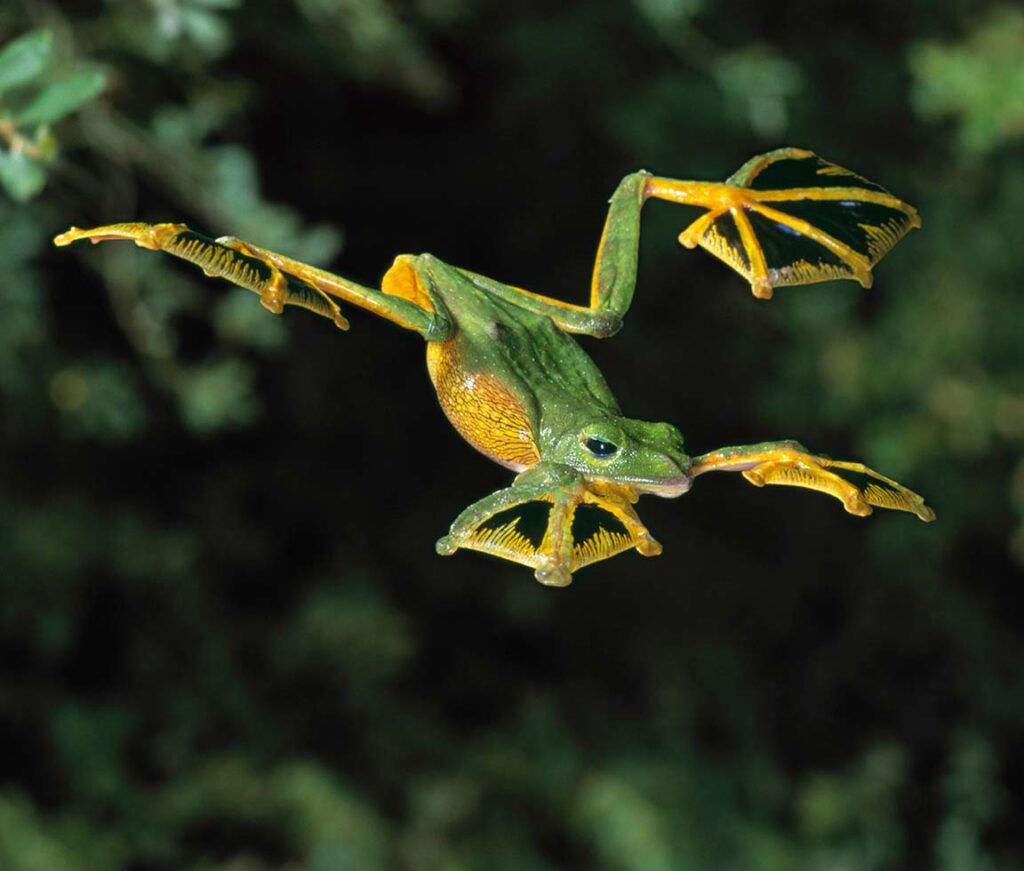
During this phase of his travels he made one of his best-known discoveries, or rather, the locals made it for him, but he realised its significance. They brought him a nocturnal flying frog (later called Wallace’s flying frog, Rhacophorus nigropalmatus), its webbed feet adapted into four tiny parachutes which enabled it to glide from tree to tree. Wallace saw that this was not a very efficient means of flight – indeed the frog’s ability to glide is limited – which suggested to him that it was the process of adapting from a regular, web-footed swimming frog to a glider, but hadn’t yet got very far. This knocked out another of the pillars of Natural Theology – the idea that all animals were perfectly designed by God for their role.
During the rainy season, Wallace stayed inside and pored over the extensive reference library he had brought with him, working on his theories. He knew from the controversy which surrounded Vestiges that it was a bad idea to publish before you’d mustered all your evidence, but he was eager to push ahead. In February 1855, in the Sarawak region of Borneo, he arrived at what would be called the Sarawak Law: the idea that similar species were related to each other through time and space and clustered in the same area, macaws in tropical South America, cockatoos in Australia and so on. “Every species has come into existence coincident both in space and time with a pre-existing closely allied species”: that is, species arose geographically close to similar species, and in areas where there was evidence of extinct but similar species living there immediately before them, implying that these neighbouring species were related and shared a common ancestor. Like Darwin with his finches 18 years earlier, he conceived of this as a sort of tree of relationships, although he went slightly further in noting that there would be extinct species in that tree as well.
He sent his paper on the Sarawak Law, along with thousands of beetles, to London, where it was published in September 1855 as On the Law which has Regulated the Introduction of New Species. Initially it met with no success: his agent said that his specimens were dull, and scientists in general were saying he should stop theorising and stick to collecting.
The convergance of the twain
We know Lyell made notes on Wallace’s paper in November 1855, but doesn’t seem to have spoken to Darwin about it at that point. Early in December 1855, museum curator Edward Blyth (1810—1873) wrote to Darwin: “. . . What think you of Wallace’s paper in the Ann. M. N. H.? Good! Upon the whole! . . . Wallace has, I think, put the matter well; and according to his theory, the various domestic races of animals have been fairly developed into species.” The same month, Darwin wrote to over 30 naturalists around the world, including Wallace (whom he had met briefly in the past), asking them to send him samples of breeds of domestic animals, especially poultry, which had been “bred for many generations in any little visited region”.
Darwin initially didn’t think Wallace’s ideas were all that similar to his, aside from the use of a tree diagram, and said that “there is nothing new here”. In a sense that was true, since the ideas were similar to Darwin’s own, but Wallace had set them out clearly and had got them published, while Darwin was still dithering.
In April 1856, Lyell visited Darwin and discussed Wallace’s paper with him, including the portrayal of related species as forming a tree. He records in his journal that “The reason why Mr. Wallace [‘s] introduction of species, most allied to those immediately preceding in Time, or that new species was in each geoll . period akin to species of the period immediately antecedent, seems explained by the Natural Selection Theory.” So he and presumably Darwin at this point could see the implications of Wallace’s Sarawak Law, even though Wallace himself had not yet done so (or if he had he hadn’t said it in print). A few weeks later Darwin wrote to Hooker, saying that Lyell had urged him to publish, and asking Hooker for “advice and truthful consolation”. He began work on what he called a “sketch” of his own ideas on speciation, which he intended to call Natural Selection, part of which would be published 12 years later as Variation under Domestication.
In August 1856 a fresh batch of Wallace’s specimens arrived in London, including a duck and a jungle fowl for Darwin. Meanwhile, Wallace was continuing his explorations. After spending more than a year in Borneo, in February 1856 he returned to Singapore for three months, then since his insect specimens hadn’t met with much success in London, he determined to travel to the eastern end of the archipelago to collect Birds of Paradise, which he knew to be worth a lot of money. He expected to be able to eat small kangaroos which he had heard lived in the area – and to cook and eat the carcases of Birds of Paradise once he had preserved their skins.
En route he visited Bali for a few days, where he noted that the wildlife followed his Sarawak Law, being similar to those he had seen elsewhere in the western area of the archipelago, although he made notes on some local cultural differences, such as dragonflies being a common snack caught and roasted by children. So far, all the ecosystems he had seen were variants on Asian flora and fauna, with tigers and apes and even elephants, and generally Asian-type birds.

He then spent mid June to late August in Lombok, which turned out to be a whole other ball of wax. Lombok is only about 20 miles east of Bali, but the strait between them forms a gap in an otherwise almost solid curve of long islands which marks the southern and western limits of the archipelago, and separates the fairly shallow seas which occupy much of the interior of the archipelago from the very deep ocean north-west of Australia. The strait between Bali and Lombok is where the two bodies of water meet, and the sea forces its way through the gap with immense force, leading to huge surfs which had to be fought through in order to land at Lombok, The local people say that the sea there is always hungry.
On the one hand this must have been extremely stressful to Wallace after his history of shipwreck had left him terrified of boats, and he was grateful to have made it to shore alive. On the other hand, it can’t have seemed that strange to somebody who came from the southern end of the Welsh Borders, since the Bristol Channel is one of the most dangerous shipping lanes in the world, with the third highest difference between high and low tides. Either way, he was to sail more than 13,000 miles around the 17,000 isles of the archipelago before he returned to the UK.
Once they had made it to shore, Wallace found that even though Lombok was only 20 miles from Bali, it defied his Sarawak Law and had very different fauna. There were no more tigers or elephants, and the birds included cockatoos and honey-eaters: Australian-style birds, nearly a thousand miles from Australia. Wallace realised that this was hugely important, and began to theorise about the effect of the rough sea between Bali and Lombok as a natural barrier to the movement of species. The Lombok Strait was actually the southern end of what would later be known as the Wallace Line: a hugely important watershed between Asian and Australian ecosystems.

From Lombok Wallace went to Macassar in Celebes, a.k.a. Sulawesi, where he stayed until mid December 1856. Sulawesi is separated from Borneo by a deep channel and is surrounded by deep water from almost any angle, and he found that the wildlife was a mixture of the Asian and the Australian, with wild cattle and primates and the eccentric-looking pig relative the babirusa existing side by side with a marsupial of the possum suborder, the Phalangeriformes. This latter was the bear cuscus (which is the only diurnal cuscus, and very smelly).

He was struck by the unique appearance of the Sulawesi crested macaque (Macaca nigra), which is smaller than other macaques (spaniel-sized according to Wallace), tailless, jet-black and with a “mohawk” hairdo. Many of the species on Sulawesi were unusual and distinctive in this way, even when they were related to Asian fauna. The deep channel between Sulawesi and Borneo marked the limit of the spread of marsupials (other than the opossums in the Americas), and formed another part of the Wallace Line as we now define it, although Wallace himself seems to have placed Sulawesi on the Asian side of the line, presumably because it had more pig-relatives than possum-relatives. He was to return to Sulawesi repeatedly, fascinated by its unique species.
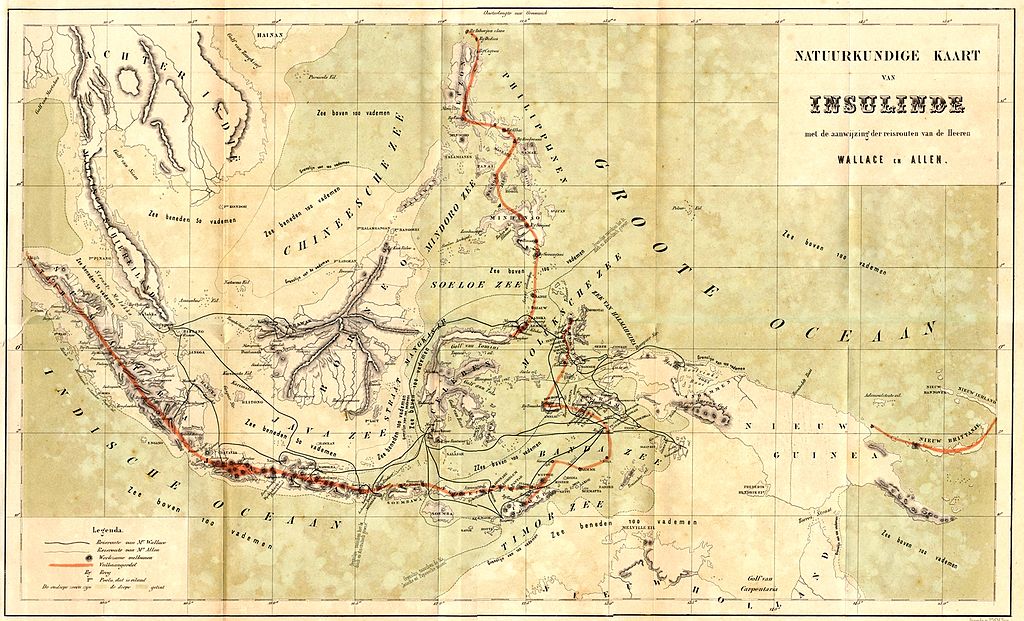
Wallace wrote to Darwin from Macassar in September 1856: his letter has been lost, but we have Darwin’s reply sent in October 1856. Their correspondence, which was necessarily slow because the post took a couple of months in each direction, is detailed in the book Alfred Russel Wallace: Letters from the Malay Archipelago, edited by John van Wyhe, with an appendix giving Wallace’s itinerary for the Malay trip, and in an article Why Did Wallace Write To Darwin? which appeared in The Linnean 2012 Volume 28(1), which includes at least one letter not covered in van Wyhe’s book.
In October 1856 Darwin wrote to Wallace thanking him for his letter and praising his Sarawak Law paper. “I can plainly see that we have thought much alike & to a certain extent have come to similar conclusions . . . I agree to the truth of almost every word of your paper; & I daresay that you will agree with me that it is very rare to find oneself agreeing pretty closely with any theoretical paper”. He went on to say that “This summer will make the 20th year (!) since I opened my first note-book, on the question how & in what way do species & varieties differ from each other. — I am now preparing my work for publication, but I find the subject so very large, that though I have written many chapters, I do not suppose I shall go to press for two years.”
Bill Bailey interprets this as a warning to back off: it certainly suggests slight irritation at the speed at which Wallace was moving.

On New Year’s Eve 1856/57 Wallace arrived at Ke or Kai Island, just south of New Guinea, where he stayed for a week, before travelling about 100 miles east to the Arru Islands where he visited Wamar, Wokam and Maikoor. Here he had success in his search for Birds of Paradise, making him the first European to see them alive and see their displays. He obtained specimens of the Greater Bird of Paradise (Paradisaea apoda), and of the tiny King Bird of Paradise (Cicinnurus regius), which he described as “a gem for beauty”, with a “gloss as of spun glass” and tail feathers like “elegant, glittering buttons”.

Wallace was always willing to hike into deep forest, reporting at one point that he had spent so long wading up a stream that his shoes fell apart and he had to go on in stockinged feet. It was around this time that he made perhaps his greatest species discovery, a new Bird of Paradise, called the Standardwing because of the long white feathers which spring from its wings and resemble military standards. It still bears his name, Semioptera wallacii, a.k.a. Wallace’s Standardwing. In all, he collected five species of Bird of Paradise, and said of this experience: “I thought of the long ages of the past, during which the successive generations of this little creature had run their course, year by year being born, and living and dying amid these dark and gloomy woods, with no intelligent eye to gaze upon their loveliness, to all appearance such a wanton waste of beauty. This consideration must surely tell us that all living things were not made for man.”
In mid-July 1857 Wallace returned to Macassar in Sulawesi, where he remained until mid-November, aside from a 5-day trip the the nearby Kaisa Islands in mid-October. From November on he made brief visits to Timor and to Banda Island, before spending over a month in Amboyna (Ambon), a group of islands west of New Guinea and about 300 miles west nor’ west of the Arru Islands where he had met with such ornithological success.
Despite what Bailey thinks of as Darwin’s initially slightly sniffy response to his work, when Wallace wrote back in September 1857 expressing his pleasure that Darwin agreed with most of his ideas, because “I had begun to be a little disappointed that my paper had neither excited discussion nor even elicited opposition”, Darwin wrote back in December 1857 with genuine encouragement, while still staking a claim.
I get on very slowly, partly from ill-health, partly from being a very slow worker. … I infinitely admire & honour your zeal & courage in the good cause of Natural Science … may all your theories succeed. . . . You say that you have been somewhat surprised at no notice having been taken of your paper in the Annals: I cannot say that I am; for so very few naturalists care for anything beyond the mere description of species. But you must not suppose that your paper has not been attended to: two very good men, Sir C. Lyell & Mr E. Blyth at Calcutta specially called my attention to it. Though agreeing with you on your conclusion[s] in that paper, I believe I go much further than you, but it is too long a subject to enter on my speculative notions.
Wallace’s own health was also often poor, but he at least didn’t have to split his time between work and a house full of children, and during the rainy season he was free to stay indoors, consult his reference books and work on his theories. Initially Darwin intended the book he was working on to include a section on the evolution of mankind, but changed his mind because it would attract too much controversy. Part of Wallace’s letter of September 1857 has been lost, but in his reply in December 1857 Darwin says “You ask whether I shall discuss ‘man’;—I think I shall avoid whole subject, as so surrounded with prejudices”.
Wallace enjoyed his correspondence with Darwin but was by no means cowed by it, and saw Darwin as a potential colleague rather than a rival or a mentor. In January 1858 he wrote to his friend Bates “[Darwin] is now preparing his great work on ‘Species and Varieties,’ for which he has been collecting materials twenty years. He may save me the trouble of writing more on my hypothesis, by proving that there is no difference in nature between the origin of species and of varieties; or he may give me trouble by arriving at another conclusion; but at all events, his facts will be given for me to work upon”.
That is, he has understood that speciation is just a more extreme form of variation; if Darwin has reached the same conclusion he’s happy for Darwin to take the credit; and if not he’s prepared to fight him over it.
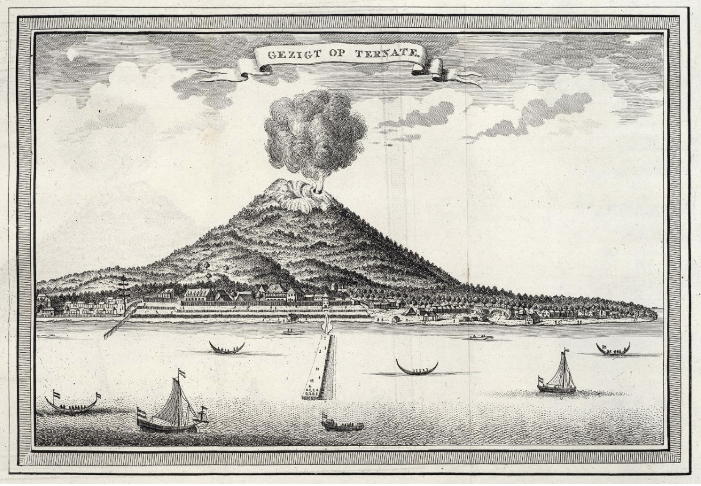
In the second week of January 1858 Wallace arrived at the volcanic island of Ternate, about 180 miles east of Sulawesi, where he would remain until mid February. By this point his Bird of Paradise skins had sold for £1,000 – over £100,000 today – and he was able to sail to Ternate in some luxury, instead of haggling with local boatmen. He seems to have spent most of the voyage drunk. This was an unusual treat, as Wallace was usually broke – he once lived for two days on the carcase of a single parakeet – and was frequently ill with fever, dysentery and pustules on his legs.

Once landed (and sobered up) he brought gifts to the one-eyed, eccentric, octogenarian sultan of Ternate, who gave him permission to visit neighbouring islands. Wallace was to use Ternate as his main base of operations for the rest of his trip, renting a house there from 1858 to 1861, and is regarded with proprietary affection by the local people and their current sultan. Unofficial wall art shows their interest and pride in him: translated, the label says “Alfred Russel Wallace, Ternate’s scientist, born in England”.
Once in Ternate, however, he fell very sick with malaria. It was probably around now that he received Darwin’s letter of December 1857, offering words of encouragement to him in his theorising and talking about his, Darwin’s, poor health, but Wallace himself was now seriously ill. It was at this point, in February 1858, his mind perhaps set swinging loose in his fever, that he recalled the work of Malthus, and started to think about why some individuals would live and some would die. He already knew tiny variations could convey an advantage, and realised that many species produced a huge surplus of young, most of whom must die young otherwise their species would have increased exponentially. “. . . it suddenly flashed upon me”, he wrote, “that this self-acting process would necessarily improve the race, because in every generation the inferior would inevitably be killed off and the superior would remain. That is, the fittest would survive”.
We may have Wallace to thank both for the term “Survival of the Fittest”. which he was to promote against Darwin’s “Natural Selection”, and for the common misunderstanding that evolution proceeds mainly through the death of unfit individuals, rather than the greater reproductive success of fit ones. However, his original 1858 letter to Darwin about it has been lost and this statement that “the fittest would survive” is from an account of his thought processes in 1858, but written in 1905, so we don’t know for absolute certain that he couched it in those terms at the time.
Wallace was to spend most of the next four years, until he sailed from Singapore for England again in February 1862, hopping from small island to small island and back to Ternate and outwards again, with occasional visits to larger islands such as Sumatra and New Guinea. During this period he encountered storms, tsunamis, rats eating his sails, a venomous snake on his boat, a broken anchor, his crew being stranded for weeks on an island, and regular danger from a groups of pirates and slavers called the Bugis, who are believed to be the possible origin of the term “boogieman” for something really scary; but despite having what he himself called a “horror of boat work”, he persevered.
Meanwhile, he sent his thoughts on Survival of the Fittest to Darwin, saying that “I hope this is as new to you as it is to me, and that it would supply the missing factor to explain the origin of species.” Most of it was, of course, not new to Darwin at all but exactly what he’s been thinking himself, except that Wallace had understood one point which Darwin, with his emphasis on Malthusian competition, had not.
The action of this principle is exactly like that of the centrifugal governor of the steam engine, which checks and corrects any irregularities almost before they become evident; and in like manner no unbalanced deficiency in the animal kingdom can ever reach any conspicuous magnitude, because it would make itself felt at the very first step, by rendering existence difficult and extinction almost sure soon to follow.
That is, once a species has adapted to its environment, and so long as that environment remains stable, any extreme variations will tend to be less well-adapted than the population average and will be filtered out. This was an early description of what is now called “punctuated equilibrium”: species change rapidly if the environment changes, but in a stable environment they tend to evolve only very slowly.
Darwin received this bombshell in June 1858, with a request that he show it to Lyell. On 18th June, Darwin did so.
My dear Lyell
Some year or so ago, you recommended me to read a paper by Wallace in the Annals, which had interested you & as I was writing to him, I knew this would please him much, so I told him. He has to day sent me the enclosed & asked me to forward it to you. It seems to me well worth reading. Your words have come true with a vengeance that I shd. be forestalled. You said this when I explained to you here very briefly my views of “Natural Selection” depending on the Struggle for existence.— I never saw a more striking coincidence. if Wallace had my M.S. sketch written out in 1842 he could not have made a better short abstract! Even his terms now stand as Heads of my Chapters.
Please return me the M.S. which he does not say he wishes me to publish; but I shall of course at once write & offer to send to any Journal. So all my originality, whatever it may amount to, will be smashed. Though my Book, if it will ever have any value, will not be deteriorated; as all the labour consists in the application of the theory.
I hope you will approve of Wallace’s sketch, that I may tell him what you say.
My dear Lyell | Yours most truly | C. Darwin
Unsurprisingly, he was rattled at having Wallace catch up with him so rapidly, but he recognised that his own work would still have value because of the weight of evidence it presented, and he was willing to help Wallace to publish before him. Despite a certain amount of understandable chagrin, he was behaving completely honourably.
Lyell, however, was not above a little skullduggery to help his friend, and proposed the presentation of a joint Darwin/Wallace paper, with Darwin taking precedence. Darwin, however, was unhappy as to whether he should publish his own work at the same time as Wallace’s at all, fearing it would look mean-spirited. “I would far rather burn my whole book than that he or any man shd. think that I had behaved in a paltry spirit. Do you not think his having sent me this sketch ties my hands? I do not in least believe that that [sic] he originated his views from anything which I wrote to him.” He could, he said, write to Wallace and show him a letter he had previously written to American botanist Asa Gray (1810—1888) discussing his ideas, to prove to Wallace that he had come by natural selection independently and hadn’t pinched Wallace’s work: but he still feared that to publish at this point might be mean-spirited. Again, he was behaving completely honourably.
At this point, however, an outbreak of scarlet fever in the village where Darwin lived led to the illness and death of his infant son. In his confusion and distress Darwin let Lyell do as he pleased, and they ended up with Lyell and Hooker doing a joint Darwin-Wallace presentation on natural selection to the Linnean Society on 1st July 1858, three days after the death of Darwin’s son, with neither Darwin nor Wallace in attendance. The presentation combined two papers, On The Tendency of Varieties to Depart Indefinitely from the Original Type by Wallace, and an Extract from an unpublished Work on Species from Darwin’s Essay of 1844. They were published together as a journal article entitled On the Tendency of Species to form Varieties; and on the Perpetuation of Varieties and Species by Natural Means of Selection, and the combination became known, then and for a long time thereafter, as the Darwin-Wallace Theory.
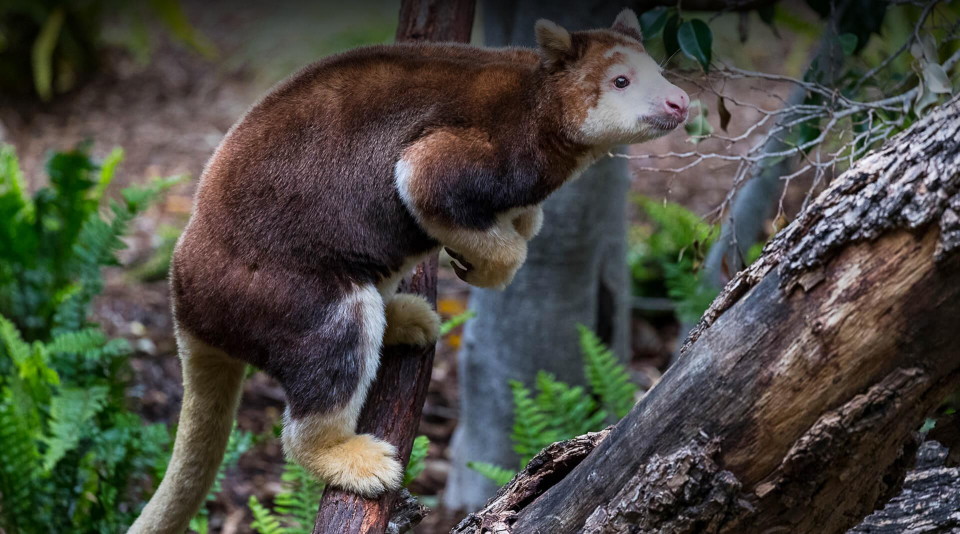
Wallace didn’t even find out about the presentation until three months later, but doesn’t seem to have been annoyed about it. He had spent mid April to late July 1858 on his first visit to New Guinea proper. In September 1858 he wrote to a friend about his failure to obtain specimens of the tree kangaroo while in New Guinea. This animal, a clumsy bodge between kangaroo and monkey, was, like the flying frog, another confirmation to Wallace that animals had to evolve through transitional phases in order to develop a new ability, and were clearly not created with already-perfect adaptations.
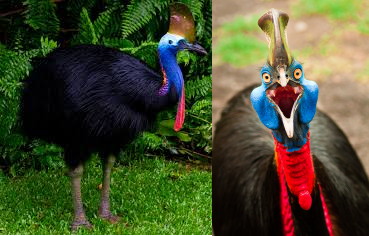
New Guinea, with its almost entirely Australian fauna which included many marsupials and even monotremes and the cassowary, a large, flightless Australian bird which could neither have flown there nor drifted there on a log, contributed to the insights which led to Wallace later becoming known as “the father of biogeography”, and confirmed his ideas about evolution. Natural Theology would have predicted that God would have made one set of species to fill the same niches right across the archipelago, not multiple different sets in close proximity, playing similar roles while being very different biologically. The idea of multiple “Centres of Creation”, pretty-much one for each island, was becoming increasingly improbable.
Comparing his notes on wildlife with depth charts, Wallace found that the western end of the Malay Archipelago was separated from Asia by a shallow sea, and had Asian-type fauna, while the eastern end of the archipelago was separated from Australia by a similarly shallow sea and had largely Australian fauna. In between was a region of deep water in which were islands such as Sulawesi where the wildlife was a mix of the Asian and the Australian, but with unique variations. He realised that the two sides of the archipelago must have been connected to Asia and Australia by land bridges until quite recently, so most of their fauna had walked there and then got cut off when the seal level rose. But the islands in the middle had been populated by castaways, carried there from both sides on drifting logs or blown there in storms, where their descendants had been isolated from their ancestral populations for long enough to evolve into very distinctive forms.
Wallace and Darwin seem to have been two thoroughly decent and honest men: Darwin wanted the acclaim that came from making a new discovery, but was absolutely not willing to even appear to steal someone else’s work to get it, even when the someone was a relative unknown; while Wallace didn’t care about acclaim at all, and cared only about the advancement of knowledge and making enough money to continue his work. Darwin’s careful and honourable attitude to Wallace’s insights makes it virtually certain that he was telling the truth when he later said that he had not come across the earlier but very similar work on natural selection by Patrick Matthew and Dr William Wells, until after he and Wallace had published their joint theory.
Initially, however, the Darwin-Wallace Theory sank like a stone and its importance was not recognised. Professor Samuel Haughton of Dublin (1821—1897), an Irish scientist and priest, actively panned it, saying that “all that was new in them was false, and what was true was old”, while in May 1859 the president of the Linnean Society said that nothing revolutionary had been discovered during the past year.
[As to why the Theory of Evolution eventually became known just as “Darwinism”, and as “Darwinian evolution”, it probably has a lot to do with the fact that “Darwinism” is easier to say than “Darwin-Wallaceism” or even “Wallaceism” – let alone “Darwin-Wallace-Matthew-Wells-Sebrightism”. The fact that Wallace himself, who hated publicity, would later cheerfully refer to it as “Darwinism” is an added factor. The Creationist idea that evolution is just a quasi-religious revelation by a suspect guru must also have contributed, since if they called it by its proper name they would have to acknowledge that science is a team effort in which many people collaborate to analyse the same objective evidence and reinforce each other’s conclusions.]
Meanwhile, Wallace continued to bounce from island to island in a sort of watery pinball game, including just over three months from mid June to late September 1859 at Menado in the north-east of Sulawesi, while Darwin spent 13 months struggling with grief and ill-health to get On the Origin of Species ready for publication. It finally went on sale in November 1859, and all 1,250 copies sold out immediately.
He stated his and Wallace’s basic concept concisely in the introduction:
As many more individuals of each species are born than can possibly survive; and as, consequently, there is a frequently recurring struggle for existence, it follows that any being, if it vary however slightly in any manner profitable to itself, under the complex and sometimes varying conditions of life, will have a better chance of surviving, and thus be naturally selected. From the strong principle of inheritance, any selected variety will tend to propagate its new and modified form.
To explain the idea of common descent and adaptive radiation, he pointed out homologies between humans and other animals. He did not go into human evolution except to say “Light will be thrown on the origin of man and his history” and to suggest that the different human ethnicities could be due to sexual selection. At the time, “Evolutionism” mainly referred to a particular theory about embryological development, so the term “evolution” was nowhere mentioned in the first five editions, except in the conclusion:
There is grandeur in this view of life, with its several powers, having been originally breathed into a few forms or into one; and that, whilst this planet has gone cycling on according to the fixed law of gravity, from so simple a beginning endless forms most beautiful and most wonderful have been, and are being, evolved.
Darwin’s poor health, always at its worst in times of stress, prevented him from taking part in public debates, but he kept up with his press cuttings and his correspondence with other scientists. The book attracted less hostility than expected, even though the implications for human evolution did not go unnoticed. The first review asked, “If a monkey has become a man–what may not a man become?” and said that this was too dangerous an idea for ordinary readers, and should be left to theologians.
The English biologist and anthropologist Thomas Henry Huxley PC FRS HonFRSE FLS (1825—1895) took up the cause so strongly that he became known as “Darwin’s bulldog”, and took a side-swipe at Owen. In 1860 Owen dismissed Darwin’s ideas in condescending tones, but then gave up on his own previous ideas about the fixity of species and adopted the concept of evolution himself, although promoting the idea that it was guided by God. In April 1860 Patrick Matthew bobbed up with an article in The Gardener’s Chronicle pointing out that he’d thought of it first, nearly 30 years ago, with relevant extract. Darwin’s comment to Lyell was both gracious and irritated:
In last Saturday Gardeners’ Chronicle, a Mr Patrick Matthews [sic] publishes long extract from his work On Naval Timber & Arboriculture published in 1831, in which he briefly but completely anticipates the theory of natural selection. I have ordered the book, as some few passages are rather obscure but it, is certainly, I think, a complete but not developed anticipation! Erasmus always said that surely this would be shown to be the case someday. Anyhow one may be excused in not having discovered the fact in a work on naval timber.
To The Gardener’s Chronicle itself, he wrote:
I freely acknowledge that Mr. Matthew has anticipated by many years the explanation which I have offered of the origin of species, under the name of natural selection. I think that no one will feel surprised that neither I, nor apparently any other naturalist, had heard of Mr. Matthew’s views, considering how briefly they are given, and that they appeared in the appendix to a work on Naval Timber and Arboriculture. I can do no more than offer my apologies to Mr. Matthew for my entire ignorance of his publication. If another edition of my work is called for, I will insert a notice to the foregoing effect.
He was as good as his word. In the 1861 edition of On the Origin of Species he credited Matthew and included this statement by Matthew himself:
To me the conception of this law of Nature came intuitively as a self-evident fact, almost without an effort of concentrated thought. Mr. Darwin here seems to have more merit in the discovery than I have had; to me it did not appear a discovery. He seems to have worked it out by inductive reason, slowly and with due caution to have made his way synthetically from fact to fact onwards; while with me it was by a general glance at the scheme of Nature that I estimated this select production of species as an à priori recognisable fact—an axiom requiring only to be pointed out to be admitted by unprejudiced minds of sufficient grasp.
That, of course, had been Matthew’s problem from the first: the thing seemed to him so obvious that it wasn’t worth making a song and dance about, and he didn’t realise that he had hold of something which was at the time almost entirely new, prefigured only by Wells’s work on human skin colours and Sebright’s thoughts on domestic livestock.
Both scientific and theological reactions were mixed, but there was a fair amount of support even from religious circles. Asa Gray wrote a pamphlet entitled Natural Selection is not inconsistent with natural theology, and Darwin imported and distributed it. The cleric, novelist and socialist Charles Kingsley (1819—1875), future author of The Water-Babies, said that the Darwin-Wallace Theory was “just as noble a conception of deity” as the more traditional one. Mathematician and CofE priest Baden Powell MA FRS FRGS (1796—1860), the father of seven sons and three daughters including the Robert and Agnes Baden-Powell who founded the Boy Scouts and the Girl Guides, and apparently just as eccentric as his son, made the convoluted argument that since the laws of nature came from God and miracles broke God’s laws, belief in miracles was atheistic, and praised Darwin for his “masterly volume [supporting] the grand principle of the self-evolving powers of nature”.
There was heated debate about the possible role of God in all this, and whether or not evolution had a purpose (was teleological), and whether or not humans came from apes. The British Association for the Advancement of Science held a public debate in Oxford in 1860, at which Samuel Wilberforce FRS (1805—1873), Bishop of Oxford and widely known as “Soapy Sam”, accepted transmutation but argued against Darwin’s interpretation of it and the idea of man being descended from apes. Hooker and Huxley argued for Darwin, and Huxley famously said that he would rather be descended from an ape than a man who misused his gifts.
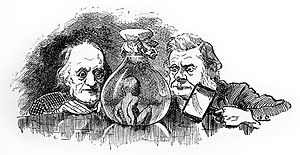
The Oxford debate marked the beginning of an ongoing fight between Huxley and Owen which spilled over into the next couple of years, with Huxley wound up with grief and anger over the death of his own son, like Darwin’s, from scarlet fever, and Kingsley on the sidelines giving Huxley moral support while gently satirising them all in The Water Babies, which he was working on at the time.
The debate, which Owen eventually lost, was over how similar or different the brains of humans and other primates were. Owen claimed, falsely, that only humans had a hippocampus minor (calcar avis). It became known as The Great Hippocampus Question. Lyell, despite his friendship with Darwin, remained lukewarm about evolution, but in his 1863 book Geological Evidences of the Antiquity of Man he included diagrams which showed that Owen had deliberately falsified his evidence on the brain-structure of chimpanzees.
Meanwhile, Wallace continued on his merry way, collecting specimens and observations. Towards the end of his expedition to the Malay Archipelago, he called at Ternate for the last time for two days in early July 1861, visited Sulawesi again for four days and then spent six months bouncing back and forth between Java, Sumatra and Muntok, before spending three weeks in late January and early February 1862 in Singapore. It was during this period that the photographs of Wallace leaning on a chair and of his Malay assistant Ali were taken. He sailed for England on the 8th of February, retracing his earlier journey via India, Egypt and the Mediterranean and arriving in Folkestone on 31st March 1862.
He stayed with his sister while his health recovered, organising his collections and giving lectures on his discoveries to important scientific societies. Later that year he visited Darwin at Down House, and became his friend and staunch supporter, even though some of Wallace’s more off-the-wall ideas would occasionally try Darwin’s patience. He also became friends with Lyell and with biologist, philosopher, anthropologist and sociologist Herbert Spencer (1820—1903).
Spencer would later promote both social Darwinism and the use of the term “survival of the fittest”, which he may or may not have got from Wallace originally. He saw natural selection at work in biological forms, but a kind of Lamarckian inheritance at work in society and ethics.

Sadly, 1862 saw a downturn in Darwin’s health which continued for the rest of his life. He was in a sense the Stephen Hawking of his day: a brilliant mind tied to a failing body. More happily, 1863 saw the publication not only of Lyell’s Geological Evidences of the Antiquity of Man, which was lukewarm about evolution but certainly put paid to Young-Earth Creationism, but also Huxley’s Evidence as to Man’s Place in Nature, which showed conclusively that humans are great apes, and a book called The Naturalist on the River Amazon, which was by Wallace’s friend Bates, showing the evidence for natural selection which he and Wallace had collected there. A professor of geology at the University of Dublin criticised comments Darwin had made in Origin on the possible evolution of hexagonal honeybee cells, and Wallace published a rebuttal entitled Remarks on the Rev. S. Haughton’s Paper on the Bee’s Cell, And on the Origin of Species, which pleased Darwin greatly.
In 1864 Darwin was awarded Britain’s greatest scientific honour, the Royal Society’s Copley Medal; Huxley started the X Club, devoted to “science, pure and free, untrammelled by religious dogmas”; and Wallace got engaged, unsuccessfully, to a Miss Leslie, the daughter of his chess partner Lewis Leslie. The same year, Wallace published a paper titled The Origin of Human Races and the Antiquity of Man Deduced from the Theory of ‘Natural Selection, which officially and explicitly applied natural selection to mankind, but in May that year he wrote to Darwin:
As to the theory of “Natural Selection'” itself, I shall always maintain it to be actually yours & your’s only. You had worked it out in details I had never thought of, years before I had a ray of light on the subject, & my paper would never have convinced anybody or been noticed as more than an ingenious speculation, whereas your book has revolutionized the study of Natural History, & carried away captive the best men of the present Age. All the merit I claim is the having been the means of inducing you to write & publish at once.
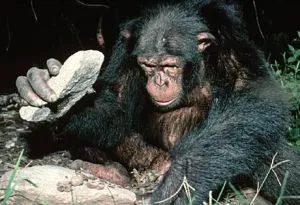
In one respect, Darwin was somewhat racist, for he inclined to believe that surviving modern “primitives”, though fully human, had naturally lower intelligence and fitted into the intellectual gap between humans and other apes, while Wallace was sure that the huge difference in cranial capacity between humans and other apes represented a massive gulf in intelligence. In this they were both wrong: Darwin by underestimating the intelligence of people from very foreign cultures, and the extent to which diet and education shape thought; and Wallace by wildly underestimating the intelligence of other great apes. One wonders what he would have made of it had he known that chimpanzees make stone tools and show basic ritual/religious behaviours: although Darwin was certainly aware of chimps in the wild cracking nuts with a found stone, and some monkeys learning basic tool use from humans in captivity.
Wallace was still on the money, though. This was before the discovery of any very early human ancestors from just after our split from the line leading to chimps. All they had to go on was early Homo sapiens burials, and the bones of a single, arthritic old Neanderthal. Even the discovery of Lucy the Australopithecus lay 110 years into the future, and there was nothing like the thousands of skeletons and footprints of proto-humans which we now have. And when we did discover them, many researchers were surprised by how early bipedalism appeared in the human line. Yet Wallace worked out from first principles that bipedalism would come first, freeing up the hands for better tool use, and large brains would follow afterwards to enable the development of ever-more-effective tools.
At the same time, his view of evolution was less purely materialistic than Darwin’s. Despite his earlier statement about the beauty of Birds of Paradise dancing in the deep forest, that “all living things were not made for man”, he seems to have adopted the view of the world expressed in Vestiges, and believed that the higher mental faculties, such as maths and art, might have been inserted into man by a “higher intelligence”, and that the whole purpose of the universe was to generate humans. In 1865 he started to get into Spiritualism, which was to become a major interest of his, although he detested Victorian Christianity. He was also an enthusiastic believer in phrenology, which is— well, not as mad as it sounds, because the basic idea that different parts of the brain do different things is sound, even if its application was way out of whack. ,
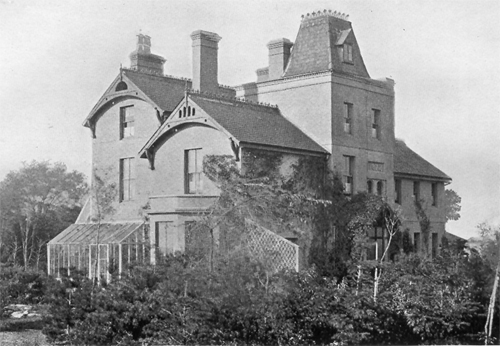
In 1866 Wallace married a different girl from the one he had courted in 1864. This was Annie Mitten, daughter of prominent moss expert William Mitten (1819—1906), and they would go on to have two sons and a daughter. Wallace, still an architect, built them a concrete house he called The Dell at Gray’s, Esssex, where they would remain until 1876.
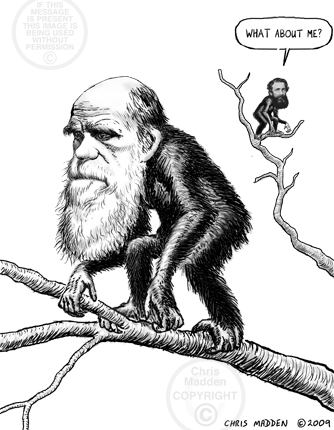
1866 was also the year in which Darwin re-emerged into society, complete with a full beard which proved a gift to cartoonists. Unlike Wallace, who retained a full head of hair into old age, Darwin had been mostly bald for decades, and probably felt that the beard at least stopped him from looking like a bad-tempered baby, as he otherwise tended to do. The following year, he ended his long-running pigeon-breeding experiment and donated 120 specimens to the Natural History Museum.
Belief in evolution was rapidly becoming mainstream, even though there was still debate about whether natural selection was its main driver. Also in 1867 the polymath and Liberal statesman George Campbell, the 8th and 1st Duke of Argyll KG, KT, PC, FRS, FRSE (1823—1900) published a book called The Reign of Law, which was intended to refute natural selection, and Wallace panned it with a long and critical review titled Creation by Law in the Quarterly Journal of Science. In 1868 Wallace was awarded the Royal Society’s Royal Medal, and by 1870 he was writing to Darwin, after a meeting of the British Science Association, complaining that there were “no opponents left who know anything of natural history, so that there are none of the good discussions we used to have.” Evidently the ones who did understand natural history had all been convinced already.
Darwin’s and Wallace’s ideas of natural selection were not identical. As has already been noted, Wallace had realised that natural selection could have a stabilising effect in a stable environment, while Darwin inclined to think in terms of constant struggle. Less happily, Wallace still tended to think evolution was teleological – that is, that it had an actual purpose – and that man was speshul [sic – it’s a fannish thing] and not just an ape among apes.
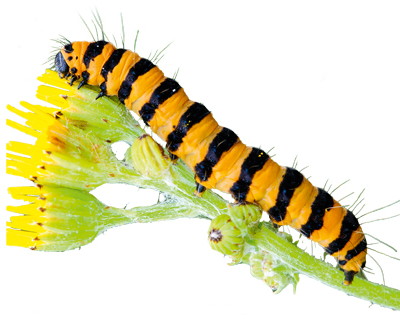
From 1867 on the two men also had an ongoing debate about the relative importance of sexual selection (mate choice), in which we would now say they were both right for specific examples. Darwin emphasised sexual selection in producing the bright colours of courting birds, but he realised that many caterpillars also had lurid, non-camouflaging colours, and these could not be due to sexual selection because caterpillars turned into butterflies before they courted and made mate choices. Wallace said that he and Bates had noticed in the Amazon that many of the most brightly-coloured butterflies had a peculiar odour and taste (suggesting that Wallace’s habit of occasionally eating his specimens was already established, and he was frankly lucky to have survived).
The English civil servant and prominent amateur entomologist and ornithologist John Jenner Weir FLS FZS (1822—1894) had told them that birds wouldn’t eat a particular nocturnal white moth because it was unpalatable. “Now, as the white moth is as conspicuous at dusk as a coloured caterpillar in the daylight”, wrote Wallace, it seemed to him that these bright colours were “Don’t eat me” warnings and had evolved though natural selection. Darwin was impressed by this argument. At a meeting of the Entomological Society Wallace asked peole to submit evidence, and in 1869 Weir published data on his observations of brightly-coloured caterpillars which supported Wallace’s ideas.
Wallace was right about the toxic caterpillars, but his fundamental objection to sexual selection as an important mechanism was that Darwin had pointed out that sexual selection among early humans could explain the development of specialised and, on the face of it, biologically useless abilities such as artistic talent. Wallace objected to this because he was determined that these abilities had been inserted into man by a Higher Power and on this occasion he allowed his religious beliefs to override his understanding of selection mechanisms.
Even though they disagreed on some points, Darwin actively scolded Wallace for not taking the credit that was due to him as co-discoverer of Natural Selection. In April 1869 he wrote to Wallace: “You are the only man I ever heard of who persistently does himself an injustice & never demands justice”.
In 1871 Darwin’s desire to provide a practical reason for natural beauty must have been spurred on by Patrick Matthew’s letter arguing that “a sentiment of beauty pervading Nature. . . affords evidence of intellect and benevolence in the scheme of Nature. This principle of beauty is clearly from design and cannot be accounted for by natural selection.”
Wallace’s belief that consciousness was inserted into “higher animals” by the same Higher Power is still up for grabs. Peter Godfrey-Smith argues convincingly that consciousness goes all the way down to pretty-much any animal with a nervous system, but we still don’t know what it is.
For some reason Wallace was never able to get a regular job, despite trying, and made a meagre living from odd bits of work such as marking exam papers, and being paid by Darwin and Lyell to edit their writing. Wallace was himself an excellent prose writer, although his poetry was sadly dull and excessively long-winded. In 1869 he published his illustrated travelogue The Malay Archipelago, which proved to be wildly popular and has never been out of print since, but money was still tight. To make things worse, in 1870 he accepted a £500 wager (over £50,000 today) advertised in Field magazine, from a Flat-Earther named John Hampden who had challenged anybody to demonstrate convex curvature in a body of water. Wallace came up with an apparatus which demonstrated curvature along a straight six-mile length of canal. Wallace was declared the winner, no question about it, but Hampden refused to accept it and spent years bombarding the press with accusations that Wallace was a swindler, forcing Wallace to fight and win multiple lawsuits for libel, which cost him more than he had won.
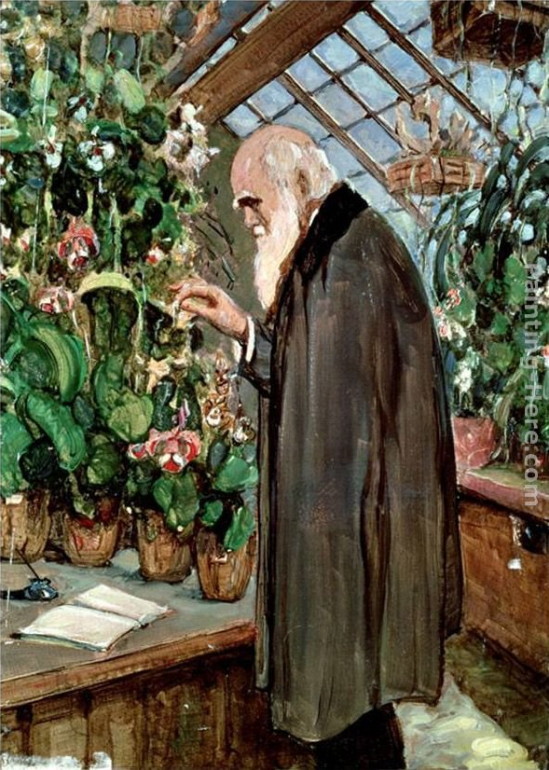
Despite continued bad health, Darwin continued to work throughout this period, especially on botany and the evolution of orchid flowers to attract specific moths. At times he lay on his sickbed, surrounded by experiments which tracked the movements of climbing plants and supported by visiting friends. He and Wallace remained close, though he didn’t share Wallace’s growing enthusiasm for Spiritualism.
Darwin was still working on his “big book” about evolution which he had started on in 1856, but the second part, about natural selection, was still not quite finished when he died, and was published after his death. The first part, The Variation of Animals and Plants Under Domestication, was published in 1868, and sold well. It contained his unsuccessful attempt to understand how heredity worked.
His idea, called pangenesis, was a modern spin on an Ancient Greek concept, and he himself attributed it to Hippocrates (c. 460—c. 370BCE). He proposed that every body part produced small particles he called gemmules which contained the template for that part, and were emitted into the bloodstream and then gathered together into the gonads, there to be passed on to build replicas of the organ they came from in the offspring. Like the Genesis story it’s wrong if taken literally, but not unreasonable as a first attempt or as a metaphor. Genes to some extent do work like Darwin’s gemmules, with instructions for every part: it’s just that the instructions are all gathered into a common ring-binder inside each cell, instead of each part storing its own blueprint separately.
In 1871 he published The Descent of Man, and Selection in Relation to Sex. The book confirmed Huxley’s assertion that humans are apes, showing how most of man’s physical and mental attributes differ from other animals in quantity rather than quality. It described how sexual selection accounted for the peacock’s tail (possibly a rebuttal of Matthew!) and also the evolution of human culture, sexual dimorphism and physical and cultural differences between ethnic types. Here he was venturing into racial classification of humans. However, at a time when the Anthropological Society of London had broken away from the Ethnological Society of London just eight years earlier in order to promote the idea that the different human types had separate origins and that black people were intrinsically inferior, Darwin was adamant that all humans were one species.
In 1872 he published The Expression of the Emotions in Man and Animals, with printed photographs (then a very new thing). It examined the evolution of human psychology and its continuity with that of other animals. Both it and Descent of Man proved very popular, and Darwin was struck by how little dissent there was over his ideas.
Wallace, meanwhile, spent much of the 1870s working on his master work, The Geographical Distribution of Animals, which was published in 1876 (after his publisher had given him a £500 advance to do so, to keep him from having to sell his belongings) and remained the definitive text on zoogeography for the next 80 years. He divided the world up into zoogeographic regions, now called ecozones, which were characterised by different sets of flora and fauna, and was so accurate that we still use his divisions today.
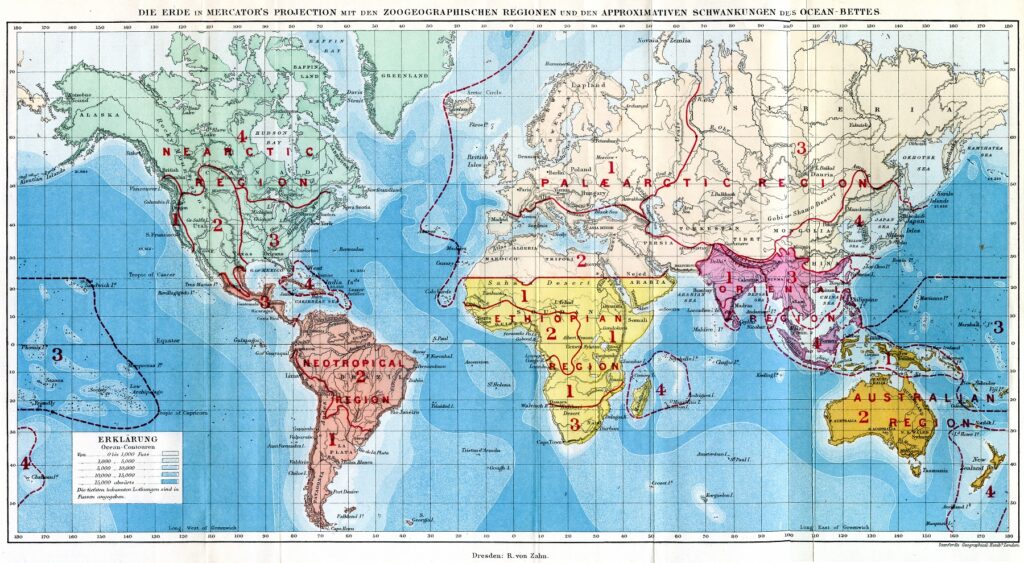
The book was to prove authoritative and prescient in another way. Wallace was one of the first (apart from the Ancient Greeks and their fossil-derived “all life is dwindling in stature”) to recognise that ecosystems are not inexhaustible, and that “We live in a zoologically impoverished world, from which all the hugest, and fiercest, and strangest forms have recently disappeared”. At the time, he attributed this mainly to glaciation. A sequel, Island Life, was published in 1880, and in that book he was already moving towards greater awareness of the impact of human activity and soil erosion on the environment.
. . . yet the general aspect of the island is now so barren and forbidding that some persons find it difficult to believe that it was once all green and fertile. The cause of this change is, however, very easily explained. The rich soil formed by decomposed volcanic rock and vegetable deposits could only be retained on the steep slopes so long as it was protected by the vegetation to which it in great part owed its origin. When this was destroyed, the heavy tropical rains soon washed away the soil, and has left a vast expanse of bare rock or sterile clay. This irreparable destruction was caused, in the first place, by goats, which were introduced by the Portuguese in 1513, and increased so rapidly that in 1588 they existed in the thousands. These animals are the greatest of all foes to trees, because they eat off the young seedlings, and thus prevent the natural restoration of the forest. They were, however, aided by the reckless waste of man. The East India Company took possession of the island in 1651, and about the year 1700 it began to be seen that the forests were fast diminishing, and required some protection. Two of the native trees, redwood and ebony, were good for tanning, and, to save trouble, the bark was wastefully stripped from the trunks only, the remainder being left to rot; while in 1709 a large quantity of the rapidly disappearing ebony was used to burn lime for building fortifications!
Darwin and Wallace continued to disagree somewhat over the relative importance of sexual selection, and in 1878 Wallace published Tropical Nature and Other Essays, in which he wrote about colouration and suggested alternatives to some cases which Darwin had attributed to sexual selection.
During this period, Wallace also began to get involved in land and social reform, which was to become a major interest of his. He believed that rural land should be nationalised and owned by the state, then leased to whoever could make best use of it to benefit the greatest number of people.
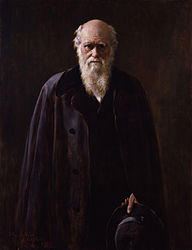
Despite his failing health, and the death of his friend Charles Lyell in 1875, Darwin continued to work throughout the 1870s, publishing books on plant fertilisation and movement and studying carnivorous plants, before returning to invertebrate animals, his first love. His last book, published in 1881, was The Formation of Vegetable Mould through the Action of Worms – the culmination of his research on worms which he had begin in 1838. The same year, John Collier painted a famous portrait of Darwin which now hangs in the meeting room of the Linnean Society.
From 1879 on Darwin had fought long and hard hard to get a civil pension awarded to the ever-impecunious Wallace, and in 1881 he eventually succeeded. There was considerable opposition from other scientists because of Wallace’s sometimes underhanded attempts to get Spiritualism discussed by heavyweight scientific bodies – although from Wallace’s perspective, since he believed in both science and Spiritualism, scientific investigation of Spiritualism was clearly the way to go.
In 1881 Wallace was elected as the first president of the new Land Nationalisation Society. The following year he published Land Nationalisation: Its Necessity and Its Aims, and also criticised Britain’s free-trade policy as harmful to working-class people. In some respects, he and Darwin were chalk and cheese: Darwin, wanting success and scientific fame but working quietly and slowly for decades to make sure that his theories were justified before he would dare publish them; and Wallace, absolutely careless of his public reputation and constantly going off like a firecracker in all directions.
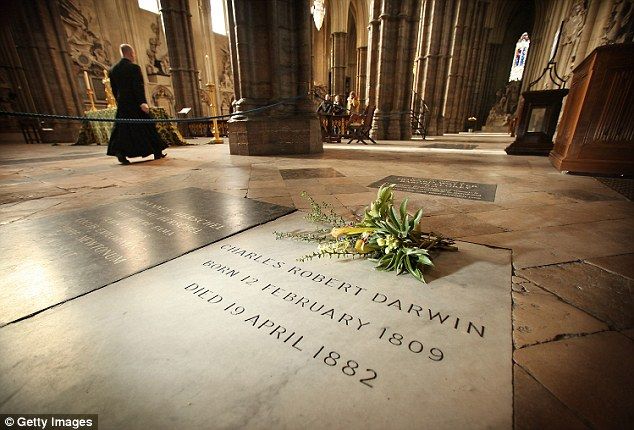
Darwin died of what we would now call coronary thrombosis in April 1882, aged 73, and was buried in Westminster Abbey, next to Herschel (who had hoped for a naturalistic explanation of the formation of new species, and had lived long enough to see Darwin produce it) and near Isaac Newton. Of him, Wallace said that he had “wrought a greater revolution in human thought within a quarter of a century than any man of our time – or perhaps any time”, having “given us a new conception of the world of life, and a theory which is itself a powerful instrument of research; has shown us how to combine into one consistent whole the facts accumulated by all the separate classes of workers, and has thereby revolutionised the whole study of nature”.
After Darwin’s death, the fact of evolution was now almost universally accepted, but there was still unease about natural selection as its main mechanism. Wallace, who was to live to be 90 and only just miss the start of World War One, continued to fight the good fight. In November 1886 he embarked on a 10-month tour of the US, where he lectured on a wild mix of natural selection, biogeography, socio-economic reform and Spiritualism. He found time to spend a week in Colorado, exploring Rocky Mountain flora with Canadian-American botanist Alice Eastwood (1859—1953). There he found evidence which led him to a theory on how glaciation might have led to shared attributes in the mountain flora of Europe, Asia and North America. This became the paper English and American Flowers, published in 1891.
In 1889 he published his book Darwinism. On the one hand, the fact that he named their joint theory after his dead colleague could be seen as noble self-effacement. On the other hand, it was just a wee bit cheeky, since he was publishing his own ideas about natural versus sexual selection of warning colouration with Darwin’s name in the title, even though it was a topic on which Darwin had disagreed with him. [But Wallace was right, at least as it applied to toxic insects, so there’s that.]
In the same book, Wallace described what was later to be known as the Wallace Effect, or reinforcement, which he had discussed with Darwin but hadn’t worked out in detail before. His idea was basically that if two neighbouring populations are adapting to different selection pressures in different environments, hybrids between them will tend to be less well-adapted to either environment than their parents were. Producing hybrids will therefore mean wasting energy and reproductive potential on birthing less fit offspring, and selection will favour those who don’t hybridise, pushing the two populations further apart and towards full reproductive isolation.
[If a barrier which was separating two closely related and interfertile species is removed and they find themselves in the same environment, as happened when the domestic cat was introduced into the territory of the Scottish wildcat, or in very similar neighbouring environments, then they will interbreed freely to create a “hybrid swarm” where the two populations meet. But I don’t think Wallace got that far, even though it could have been surmised from his merging-at-the-edges beetles.]
1889 was also the year in which Wallace openly proclaimed himself a socialist, and declared that Progress and Poverty by land reformer Henry George was “Undoubtedly the most remarkable and important book of the present century.”
Less happily, Wallace, always suspicious of authority, including medical authority, spent much of the 1880s as an ardent anti-vaxxer, campaigning against smallpox vaccination. At the outset, he had a point. He saw compulsory vaccination as an assault on personal liberty, the technique was new and often unsanitary and the data incomplete and sometimes suspect, and germ theory itself was not yet fully established. He became convinced (wrongly) that improvements in survival were due to better hygiene rather than vaccination, and he was concerned that if vaccination worked it would interfere with natural selection.
However, as the data in favour of vaccination grew, Wallace evidently ignored it. In 1890 Wallace submitted evidence to a Royal Commission, which found his evidence to contain errors and dubious statistics. The authoritative British medical journal The Lancet alleged that Wallace and other anti-vaxxers were ignoring large amounts of data in favour of vaccination, and being selective in their own statistics. Smallpox vaccination, which was to prove to be one of the most effective medical campaigns in human history, remained compulsory, although the penalty for non-compliance was reduced and safety procedures were improved.
Also in 1890, Wallace was the first recipient of the Royal Society’s new Darwin Medal (silver-gilt, awarded biannually until 2018 and now annually, accompanied by a substantial cash payment), and his much younger friend Edward Bagnall Poulton FRS (1856—1943), later Sir Edward Bagnall Poulton FRS HFRSE FLS, wrote a substantial textbook entitled The Colours of Animals. The book was an important advance in the science of natural selection at a time when such support was needed, including explaining the evolution of Batesian mimicry (a toxic species develops bright warning colours, then non-toxic species develop the same colours in order to benefit from the same protection, but eventually undermine it, pushing the toxic species to develop ever-more extreme warning signals) and Mullerian mimicry (several toxic species develop the same warning colouration, reinforcing each other’s defences). But Wallace publicly panned it for placing too much emphasis on sexual selection and on “the aesthetic preferences of the insect world”. It looks as though Wallace, now in his late 60s, may have been losing his mental flexibility. and becoming fixated on his personal hobby-horses to the exclusion of all else [and one wonders what he would have made of the brilliantly coloured mating display of the tiny peacock spider, which demonstrates that at least some arthropods do have aesthetic mate-preferences].
The same year, Wallace published an article about eugenics, entitled Human Selection. Many supporters of evolution also supported eugenics, but Wallace argued that society was too corrupt and unjust to make a reasonable assessment of who was or was not “fit”, and that “Those who succeed in the race for wealth are by no means the best or the most intelligent . . .” [He didn’t even get into the fact that if intelligent people have fewer surviving children that de facto means they are not the fittest, in evolutionary terms.] It didn’t seem to occur to him that stopping vaccination would itself be a form of eugenics in which the poorest would die.
Wallace’s enthusiasms would continue to be a mixed bag of ferrets. In 1898, aged 75, he published a seminal paper of lasting importance, advocating a monetary system based purely on paper money, not backed by silver or gold. He published The Wonderful Century: Its Successes and Its Failures, which covered the 19thC’s major scientific and technical advances, but also its social ills, including the destruction and expense of war and arms races; the growing urban underclass and the poor conditions in which they lived and worked; the harsh and punitive criminal justice system with its failure to reform criminals; abuse in private mental health sanatoriums; environmental damage done by rampant capitalism; and the evils of the colonial system. The same year, he published a pamphlet titled Vaccination a Delusion; Its Penal Enforcement a Crime, which attacked the findings of the Royal Commission while, according to The Lancet, repeating all the same errors as his original evidence.
In 1899 he published an essay calling for popular opinion to be rallied against militarism by showing the people “that all modern wars are dynastic; that they are caused by the ambition, the interests, the jealousies, and the insatiable greed of power of their rulers, or of the great mercantile and financial classes which have power and influence over their rulers; and that the results of war are never good for the people, who yet bear all its burthens”.
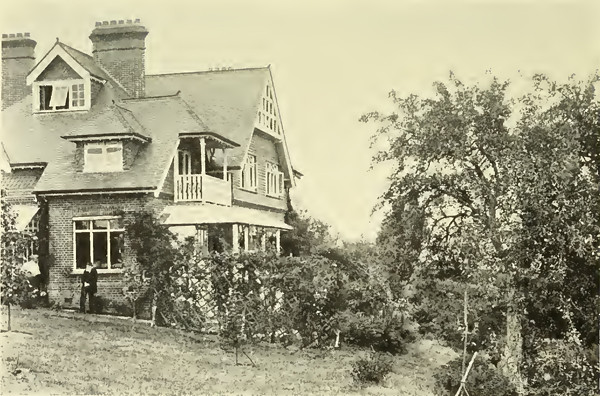
At this point, Wallace’s family had spent some time living at various locations in Dorset, including Parkstone. I haven’t been able to find out whether or not they moved to Dorset immediately after quitting The Dell in 1876, but in 1903 he built what was to be his last home, a house which he named Old Orchard at Broadstone in Dorset.
In 1904 he started up a new ferret with his book Man’s Place in the Universe. This was the first serious attempt by a biologist to assess the likelihood of life on other planets. He concluded that ours must be the only planet in the Solar System which could support life, primarily because it was the only one on which water could exist in liquid form. On this he was flat wrong, at least if you include the moons of Jupiter and Saturn under the loose heading of “planets”: but it was a reasonable assumption based on the evidence available to him. With much less justification, he asserted that it was unlikely that other planets in the galaxy (the existence of other galaxies was not yet proved) could have habitable planets. This seems to have been based mainly on his belief that “man is speshul”, a claim which would be undermined if there was a possibility of other intelligent life.
In 1907, after months of research and consultation with experts, he returned to the same topic with the book Is Mars Habitable? In it, much more sensibly, he analysed the Martian climate and atmosphere and demonstrated that spectroscopic analysis showed no sign of water vapour. He debunked the claims by Percival Lowell (1855—1916) that Mars was laced with artificial canals, or that it had a high-enough temperature and surface pressure to support liquid water. [As it turns out, they both had a point. Almost all water in Mars today is deep-frozen, although there’s a small amount of water vapour too faint to be detected in Wallace’s day; but there are channels in the surface which suggest ancient rivers now run dry.]
Also in 1907, Wallace published an article on Personal Suffrage. A Rational System of Representation and Election, which advocated that the vote should be given to woman and to all races and classes – but that the voting age should be raised to 40, to ensure that voters had experience of life.
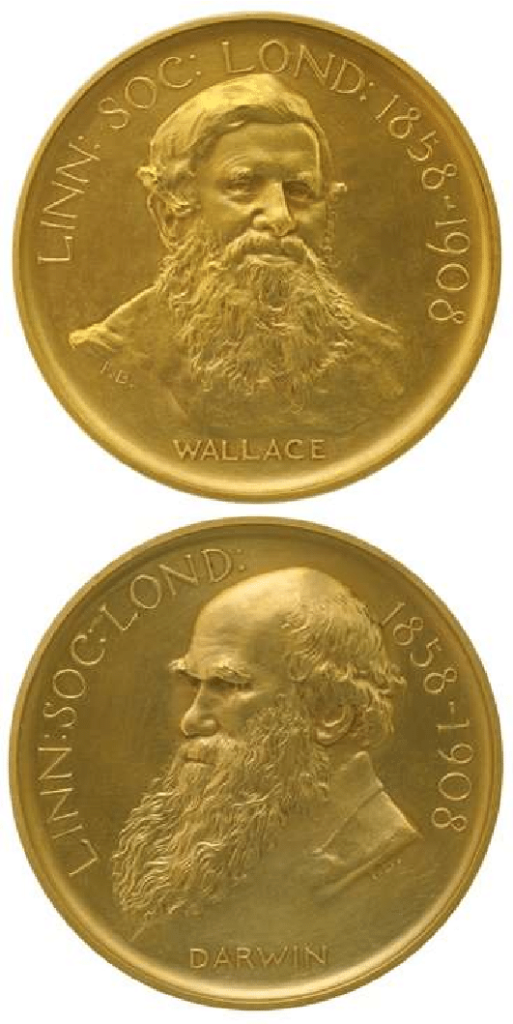
In 1908, the Linnean Society instituted the new Darwin-Wallace medal, to be awarded for “major advances in evolutionary biology”. Initially it was to be awarded every 50 years, beginning on 1st July 1908, exactly 50 years after the presentation to the society of the joint Darwin/Wallace paper on natural selection, but from 2010 onwards it’s been awarded annually, “due to the continuing importance of evolutionary research”. I imagine they must also have realised that a 50-year gap meant that many researchers who deserved it would die of old age before it could be awarded to them. That first year, seven medals were given out – six silver ones to other winners, and a solid gold version, the only one ever made, for Wallace himself.
Also in 1908, Wallace received the Order of Merit from King Edward VII, but he declined to attend the ceremony at Buckingham Palace because it would have meant buying a new suit. The King had to send a dignitary to Dorset to deliver the medallion. Wallace’s attitude to this kind of thing was decidedly offhand. By now, he was one of the most famous people in the world, but he regarded fame as a nuisance. He himself is believed to have coined the term “Darwinism” for the Darwin-Wallace theory. He wrote to his editor, James Marchant [this seems to be the Rev Sir James Marchant FRSE FLS FRAS KBE LLD (1867—1956), a British eugenicist, social reformer and author who was leader of the National Vigilance Association, concerned with social morality, and Director of the National Council of Public Morals, and a notorious prig], that he was “rather tired of medals”. He mentioned in the same letter that he had been invited to sit for the artist John Collier, who had painted a famous and iconic portrait of Darwin, but “I think it possible I may have declined rather abruptly and perhaps Collier may have felt hurt.”
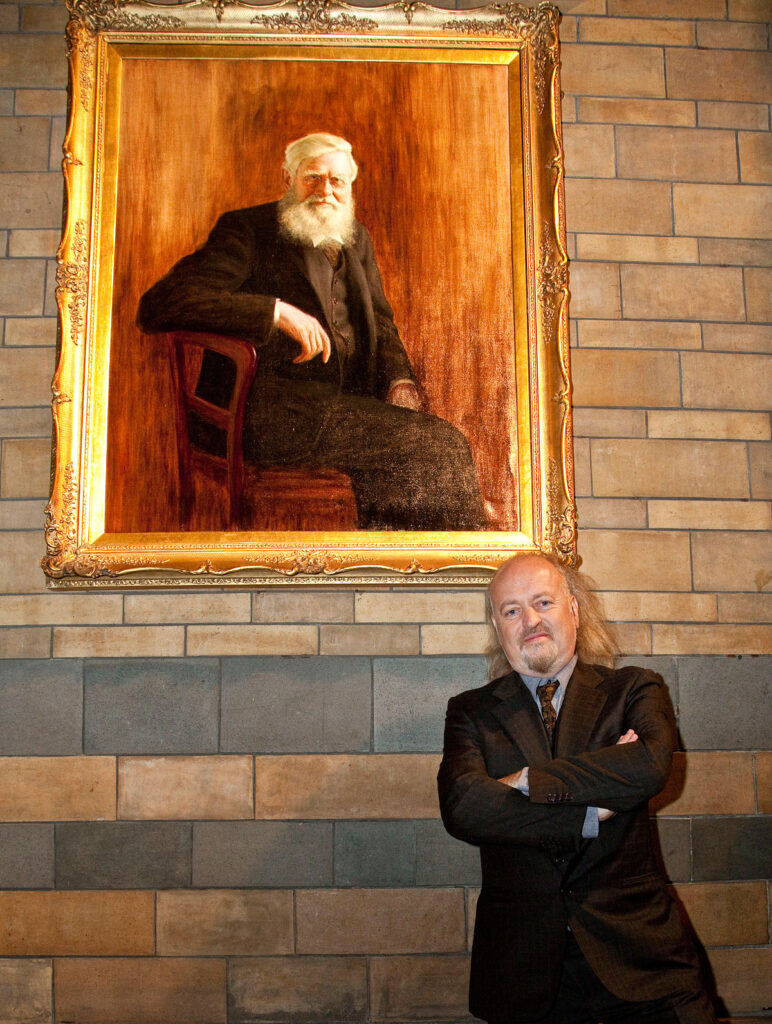
He would undoubtedly have given the stink eye to the successful campaign by Bill Bailey and others to have his portrait hung in the Natural History Museum, close to the statue of Darwin.
In 1909, just six years after the successful launch of the Wright Flyer, the first manned, powered and controlled heavier-than-air aircraft, a letter from Wallace was published in The Daily Mail, advocating for an international treaty to ban the military use of aircraft, and arguing against the idea “. . .that this new horror is ‘inevitable,’ and that all we can do is to be sure and be in the front rank of the aerial assassins—for surely no other term can so fitly describe the dropping of, say, ten thousand bombs at midnight into an enemy’s capital from an invisible flight of airships.”
The same year, a letter from Wallace was read out at a meeting on women’s suffrage. It ran:
As long as I have thought or written at all on politics, I have been in favour of woman suffrage. None of the arguments for or against have any weight with me, except the broad one, which may be thus stated:– All the human inhabitants of any one country should have equal rights and liberties before the law; women are human beings; therefore they should have votes as well as men. It matters not to me whether ten millions or only ten claim it–the right and the liberty should exist, even if they do not use it. The term ‘Liberal’ does not apply to those who refuse this natural and indefeasible right. Fiat justitia, ruat cœlum.
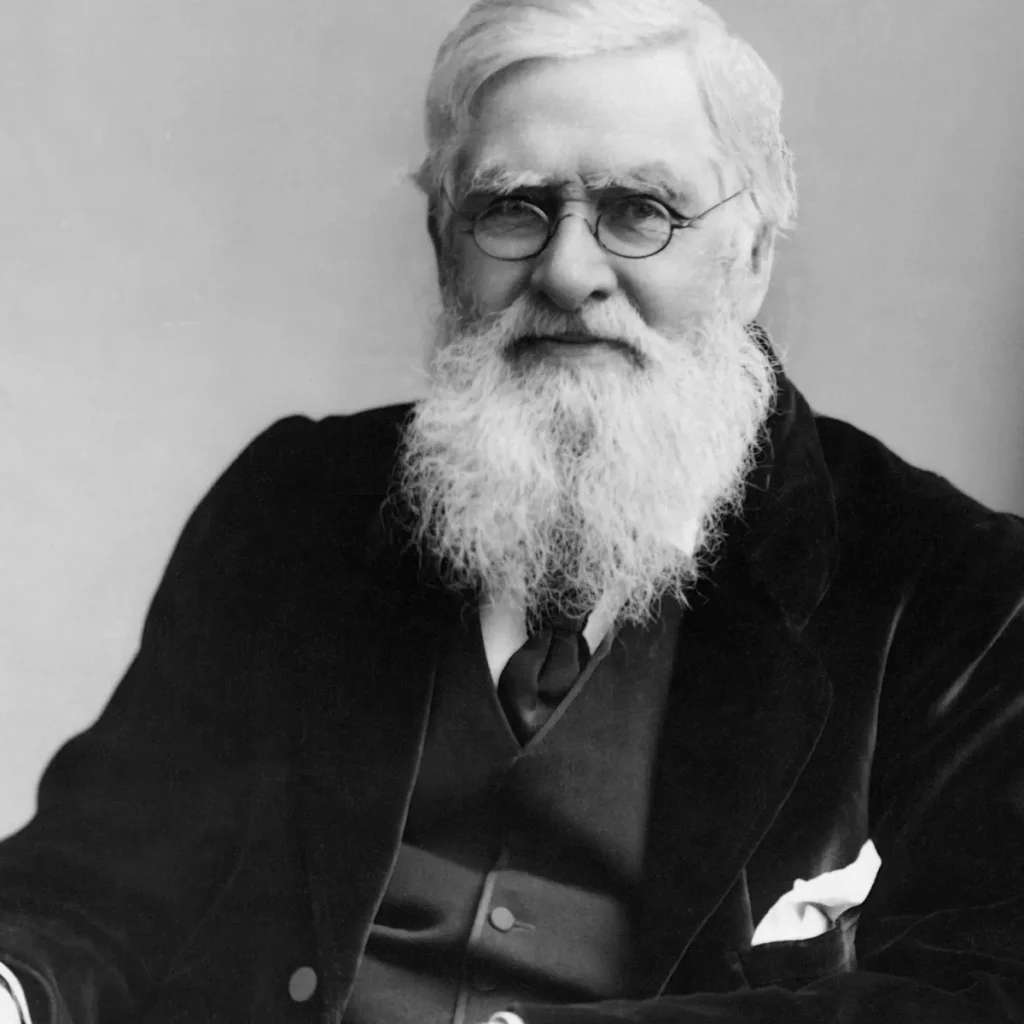
Now 88, Wallace doesn’t seem to have been slowing down noticeably. His next book, The World of Life, published in 1911 but expanded from a magazine article he’d written in 1909, set out his essentially theistic views about directed evolution and natural design. But it also expanded on his ideas about recent mass extinctions and ecological damage, which he now felt were due to “man’s agency”.
These considerations should lead us to look upon all the works of nature, animate or inanimate, as invested with a certain sanctity, to be used by us but not abused, and never to be recklessly destroyed or defaced. To pollute a spring or a river, to exterminate a bird or beast, should be treated as moral offences and as social crimes; . . . Yet during the past century, which has seen those great advances in the knowledge of Nature of which we are so proud, there has been no corresponding development of a love or reverence for her works; so that never before has there been such widespread ravage of the earth’s surface by destruction of native vegetation and with it of much animal life, and such wholesale defacement of the earth by mineral workings and by pouring into our streams and rivers the refuse of manufactories and of cities; and this has been done by all the greatest nations claiming the first place for civilisation and religion!
His last two books were Social Environment and Moral Progress and The Revolt of Democracy, both in 1913. The Revolt of Democracy was written first but published second, just weeks before his death. In it, he wrote
The principle of competition—a life and death struggle for bare existence—has had more than a century’s unbroken trial under conditions created by its upholders, and it has absolutely failed. The workers, now for the first time, know why it is that with ever-increasing production of wealth so many of them still suffer the most terrible extremes of want and of preventable disease. There must, therefore, be no further compromise, no mere talking. To allow the present state of things to continue is a crime against humanity. Any Government that will not abolish starvation in this land of superfluous wealth must be driven from power. The forces of Labour, if united in the demand for this one primary object, must and will succeed. Then will easily follow the general rise of wages at the cost of our unprecedented individual wealth, and the absorption of the unemployed in self-supporting communities, re-occupying our deserted land, and bringing about a more general and more beneficial prosperity than our country has ever before enjoyed.
This must be the great and noble work of our statesmen of to-day and of to-morrow. May they prove themselves equal to the great opportunity which the justifiable revolt of Labour has now afforded them.
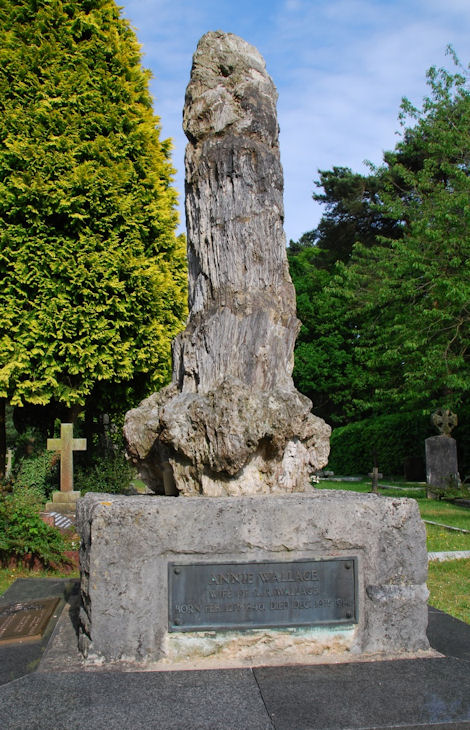
Alfred Russel Wallace died in November 1913, in the midst of working with Marchant on a book entitled Darwin and Wallace. His friends wanted to have him buried in Westminster Abbey but his family declined. “Neither my mother nor my father himself would desire it,”, wrote his son William. “We all of us are averse from publicity and unnecessary ceremony.” Instead, Wallace was buried near his home in the small cemetery in Broadstone, Dorset. To commemorate his passion for natural history, his grave was decorated with a rather unfortunately-shaped specimen of a 146-million-year-old fossilised conifer, Protocupressinoxylon purbeckensis. There is debate about whether it was one found on the Dorset coast, or a specimen which Wallace himself had brought home from his trip to North America.
Two years after Wallace’s death, and thanks to the efforts of a committee of several prominent scientists, a medallion honouring Wallace was placed in Westminster Abbey, near to a similar medallion of Darwin and to the tombs of Darwin, Herschel and Newton.

After the dawn
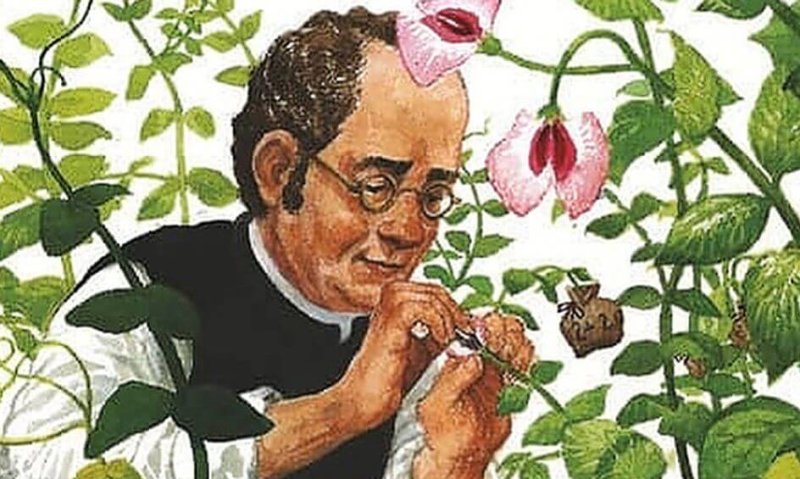
All the while that all this high octane work on evolution was going on elsewhere, mainly in the UK, the abbot of St. Thomas’ Abbey in Brünn in what is now Czechoslavakia (but was then part of the Austrian Empire) was quietly at work. Even as Darwin was fluffing his attempt to explain heredity with pangenesis and gemmules, Gregor Johann Mendel OSA (1822—1884), biologist, meteorologist, mathematician and Augustinian friar, had already worked out the basic rules of genetic inheritance, now known as Mendelian genetics, by experimenting with the cross-breeding of pea-plants with differing characteristics.
Mendel’s ideas wouldn’t become public knowledge until 1900, more than 30 years later, when three other researchers, Erich Tschermak, Edler von Seysenegg (1871—1962), Hugo Marie de Vries (1848—1935) and Carl Erich Correns (1864—1933), independently verified his findings. Just over a year before his death, Darwin had actually acquired a copy of Die Pflanzen-Mischlinge (The Plant Hybrids) by Wilhelm Obers Focke (1834—1922), which included a section with summaries of Mendel’s experiments, but the pages with these summaries had remained uncut and he never read them, possibly due to his failing health (or maybe he just didn’t speak enough German).
Initially, it wasn’t clear how this new knowledge fitted in with evolution, especially as it raised the possibility that natural selection would progressively filter out more and more genes. But then came the 1950s and the discovery by James Dewey Watson (1928—), Francis Harry Compton Crick OM FRS (1916—2004) and Rosalind Elsie Franklin (1920—1958) of the structure of DNA. From there, we learned how mutation generates new genetic material and new variants for natural selection to work with. We found thousands of specimens of over 30 species of early humans who fit in between us and our split from the line leading to chimps and bonobos. We learned that other great apes really are a lot like us. We found that complex multicellular life started out twice but the first wave went extinct. We stopped worrying about whether natural selection was real and started arguing about the fine details of how fast it goes. Hundreds of thousands of scientists have piled up knowledge that Darwin and Wallace could only dream of.
And the rest, as they say, is history.
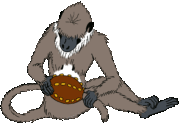
Oh my. That was a good read. I got a very good laugh at the “unfortunately shaped” memorial fossil adorning Mr. Wallace’s final resting place. I have no way of knowing but I am thinking his children may have inherited their sire’s sense of humor and lack of respect for authority.
Thank you for publishing this work. I will refer others to it that have questions about how evolution was introduced to the scientific community.
Again, well done!
It’s a hoot, isn’t it? They can’t have been unaware that it was either a massive cock or a middle finger.
A fine article, well written. One small point, which the curse of my pedantry won’t allow to pass, is that the date in the line: “At the end of 1938 Darwin found a family home in London, which he dubbed Macaw Cottage…” is clearly a typo.
Thanks. On to it.